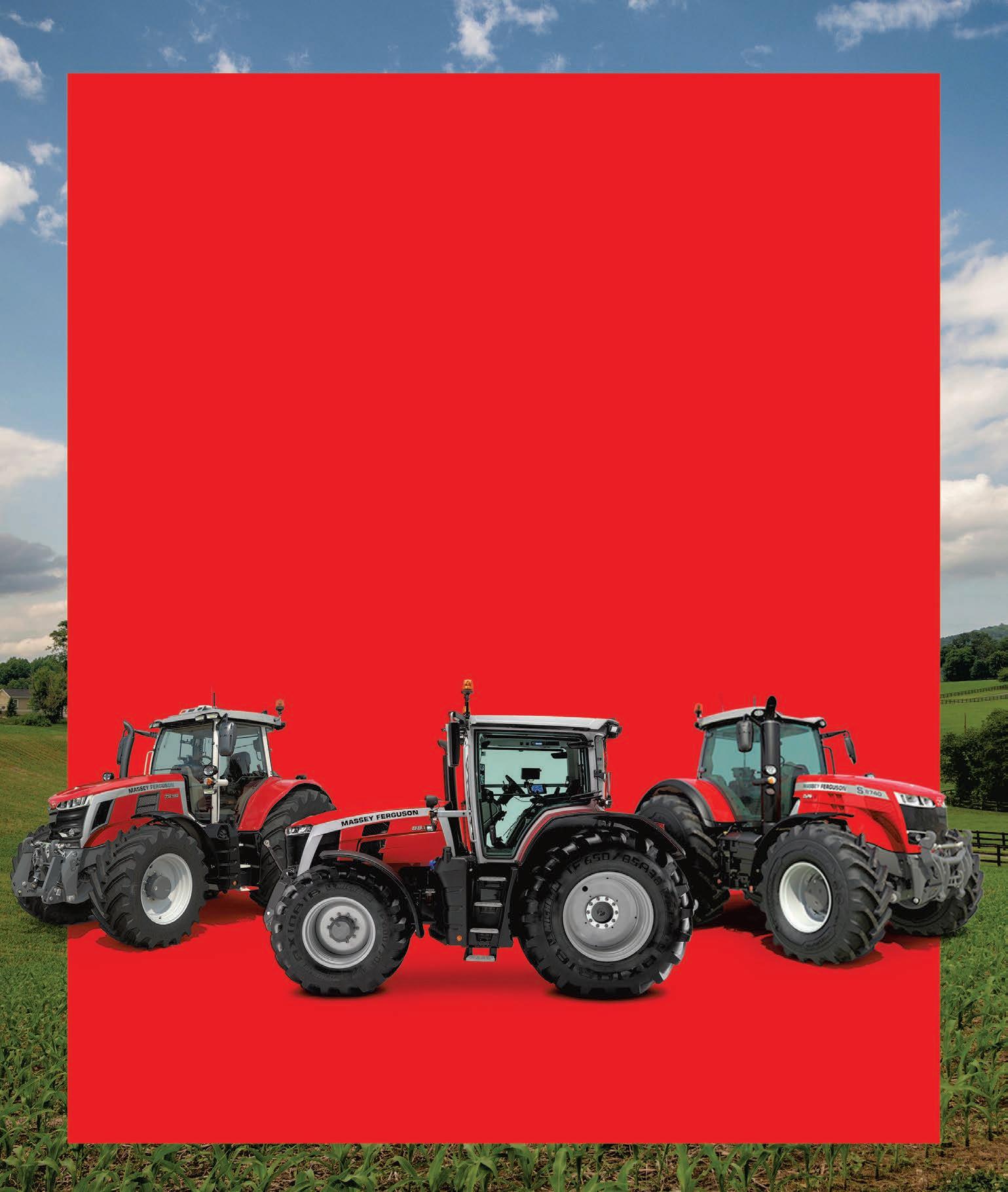



































































































































































































































































































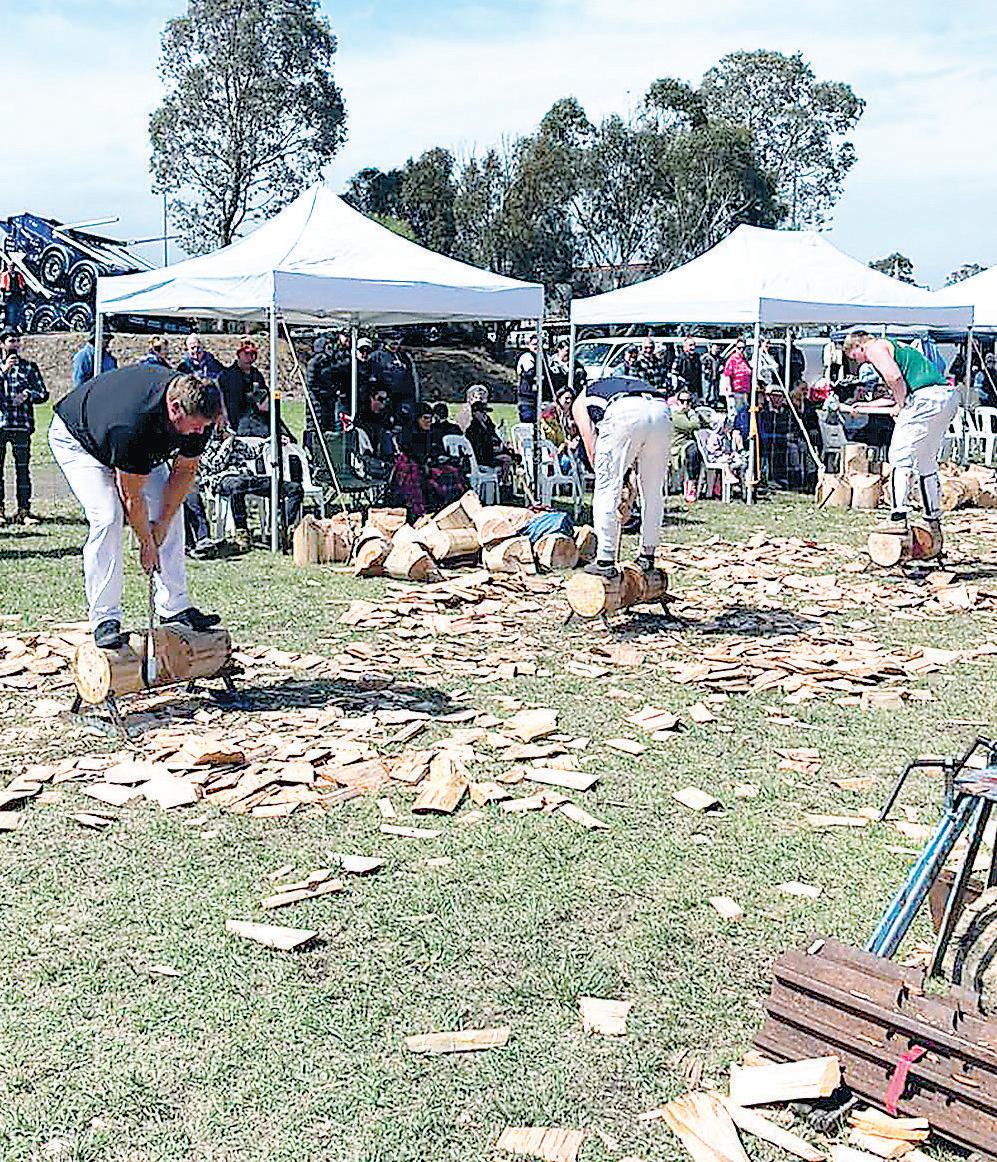




























Philip HOPKINS
GREATER export sales, further cuts in greenhouse gas emissions, new technology driving productivity and automation, and sophisticated marketingwill drive value in the beef and lamb sector over the next five years, according to an industry leader
The managing director of Meat & Livestock Australia, Michael Crowley, giving the opening address at the GippslandRed Meatconference in Bairnsdale, said the aspirational plan aimed to have active solutions on the ground. The conference was organised by the Gippsland Agricultural Group.
Mr Crowley reminded the morethan 300 people in the audience that MLA was aservice company investing in R &Dand marketing across the whole redmeat supply chain.
“Weare prohibited from doing policy and activity work, andare not allowed to lobby the government,” he said.
Thatwas thejob of peakproduction industry bodies such as Cattle Australia, Sheep ProducersAustralia, Australian Lot Feeders Australia,the Goat IndustryCouncil of Australia and the Australian Meat Industry Council for the processing sector
Mr Crowley pointed out that he was apartner in afarminnorthernNSW
“I’m not hands-on at the moment, but my father and brother often remind me of the practicalities of what we’reinvesting in at MLA. That keeps me pretty grounded,” he said.
Mr Crowley emphasised that the redmeatsector operatesinglobal environment.
“Weexport about 70 per cent of whatweproduce. For muttonit’s about 99 per cent, goats 97 per cent, lambisapproaching 70 per cent of production.The largest market remains ourdomestic market,”he said.
To ta le xp or ts of re dm ea ta nd livestock to morethan 100 countries came to 2.244 million tonnes, 1,211,354 head, and all valued at $21.7 billion-NorthAmerica $6.7b,China$3.9b, Japan $2.6b, and South-East Asia $3.2b. The Australian market, with822,334 tonnes, is valued at $19.4b.
Mr Crowley said the values cited for the domestic market areretail valuesequivalent; the export value is calculated at the value at export.
“They arenot directly comparable,” he said.
The do mest ic mar ket opera tes in aglobalcontext,with exports a competitor
“Th eU Si st he la rg es te xp or t market for lamb beef and goat -it’s unbelievable. The US is also one of largest competitors in our key markets-Japan, China,Korea as wellasUS. The US is wherewego head-to-head, particularly in quality; quality is wherewedifferentiate ourselves, particularly on beef,” Mr Crowley said.
Continued -Pages 14-15































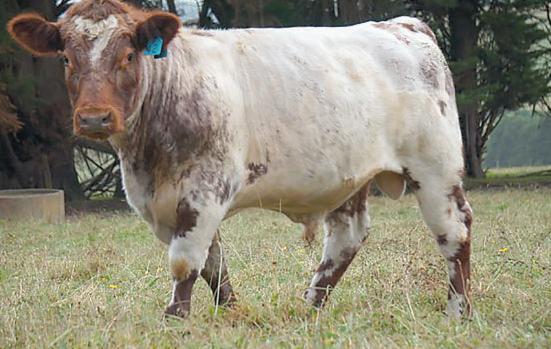




Philip HOPKINS
THE operation of anuclear power plant is not that muchdifferent from acoal plant, a nuclear expert panel told the forum at the Italian-Australia Club in Morwell.
“A coal plant uses ahot rock -coal -to boil water,tomake steam, to turnaturbine to make electricity,” said Mark Schneider who has 23 years’ofexperience in the nuclearsector,having worked with eight nuclear reactors, including in the US Navy on aircraft carrier and submarines. He is part of Ms Stanke’s team in Australia.
“A nuclear reactor uses hot rock, this case uranium, to boil water,tomake steam, to make electricity. They arethe same thing. The cooling source for anuclear reactor can be the same cooling source for acoal plant. Youhave the Latrobe River cooling the coal plants here, right? Youcould use that water to cool anuclear reactor.Iused the ocean when Iworked on asubmarine and aircraft carrier.”
Mr Schneid er,w ho has aB ache lor degree in nuclear technology, is Group Chief NuclearOfficer forUBH Group in Australia. Unlike Grace (Stanke), “I was bornanerd,” he said, inspired by aschool physics teacher after aparticular lesson.
“That’s what Iwant to do, work in nuclear power.”
Unluckily for him, the nuclear reactor in his home state of Oregon was closeddown after protests -900 jobs lost, “good union jobs, highest paying union jobs, the highest on the planet”.
Luckily for him, the navy recruiter came along. Asked whether he wanted to join the navy, “being aspiteful 17-year -old kid, Isaid, ‘Only if you have nuclear -powered ships’. The recruiter answered, ‘Boy have we got ajob for you!’
“At 19 years old, after acouple of years of nuclear training, Iamoperating anuclear reactor,inaconverted submarine for training purposes; Iambreaking atoms at 19 years old,” he said.
“As Iwithdrawthose rods anddoing calculations… going through my mind what they have told me in two years’ of training, ‘If Istuffthis up, Ishut down the six most powerful navies on the planet, I shut down 10 per cent of electricity for the world’-thatgoesthroughevery sailor’s mind as they operate anuclear reactor Safety is paramount.”
Mr Schneider said there’s afamous quote from Admiral Hyman Rickover,the father of the US nuclearnavy. He was standing in San Fransisco Bay when the USS Enterprise was coming in. Askinga certain politician what he saw, the politician said, ‘I see abeautiful warship’. The admiral said, ‘Whatyou don’t thinkabout is the eight 19-year -old kids operating anuclear reactor’, Mr Schneider said.
Safetymeasuresinanuclear station areembedded in everyday work practiceprotective padded clothing, fireequipment, equipment protected against radiation.
“Wetry to figureout how we can minimise

our ownradiation exposureand prevent exposuretothe public,” he said.
Kirsty Braybon, also part of Ms Stanke’s team,isthe Adjunct Nuclear Law Lecturer at the University of Adelaide, and aspecial adviser on AUKUS-related matters.
“Wehave aprohibition (onnuclear) at nuclear level,” she said, aresult of apolitical deal decades ago when the government was tryingto buildthe Opal reactorfor medical science in Sydney. With little debate,an amendment was passed to ban nuclear energy and uranium enrichment.
“Weneeded nuclear medicine, therewas no ambition for nuclear energy, and there was concern about Chernobyl,” she said.
“Decades later we are having this discussion to lift that ban. There are state bans as well; thereisone hereinVictoriaas well. It’s apolitical game. It’s not about public policy.”
Ms Braybon said the prohibitionwas recently amendedtoinclude submarines under AUKUS.
“Nuclear law government covers safety, like coal, but extra protections areinplace to manage radiation,” she said.
“It (nuclear law) gover ns how much uranium we have, whereitis, whereit’s going. That is to manage nuclear security,
to ensurenoone is going to take that material and do anything silly with it.”
Ms Braybon said therewereinternational safeguards. “Countries, including Australia, reportback to the Inter nationalAtomic Agency, on how much nuclear material and technology we have, whereitisand whereit’s going. An international system is in place to recordall this stuff. We do that today,” she said.
The Agency comes to Australia and checks our plant and uranium mines.
“Weknow whereevery gram of uranium is going. All laws areinplace just to manage additional risk to nuclear. Allis manageable in Australia.”
Questioned whethertherewas arealistic chance of lifting the pr ohibition, Ms Braybon said “it comes downtothe numbers” in Parliament.
“Public sentiment -ifthe community thinks thereisasocial acceptance to nuclear energy in Australia, it helpschange the mind of politicians who have to represent the voters,” she said.
Mr Schneider said that in West Virginia -coal country in the United States -inthe last couple of years, they had lifted their nuclear ban.
“So, it is possible,” he said.

















































































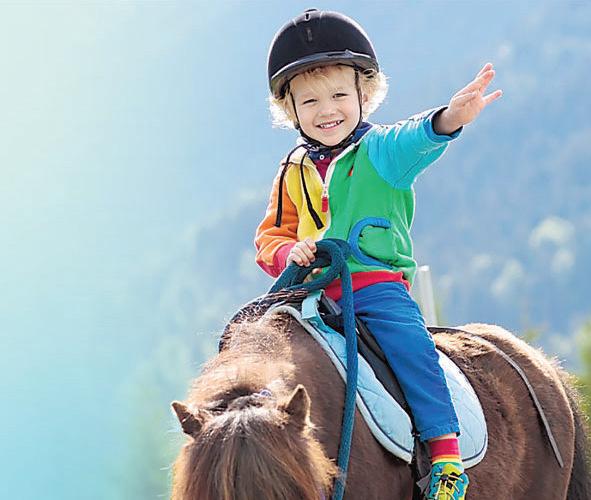


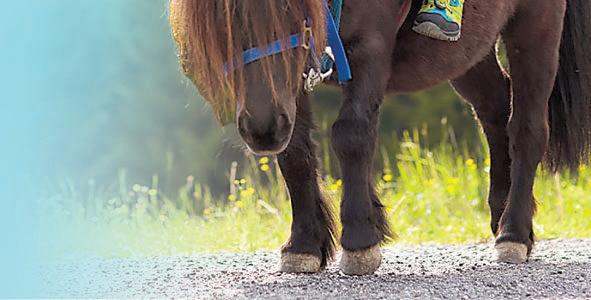






























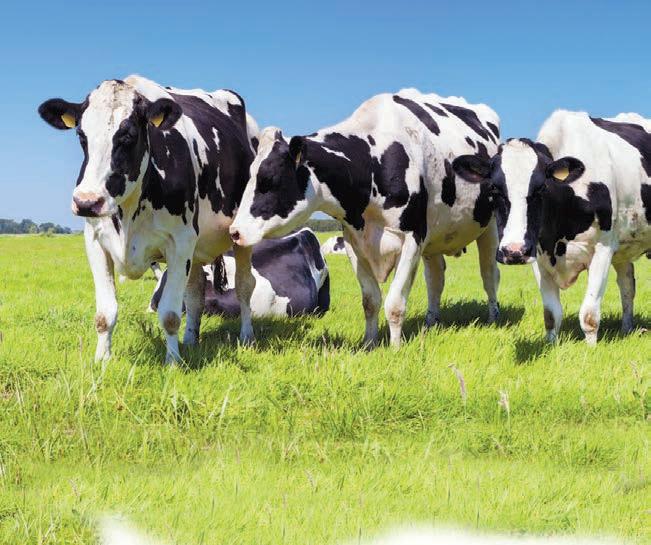
Philip HOPKINS
ANUCLEAR power station in the Latrobe Valley wouldcreate thousands of jobs in construction, operation and maintenance and be acatalyst for spin-off industries, US nuclear exports told anuclear information night in Morwell.
With an experienced builderof nuclear plants like South Korea, the first 1000MW unit couldprobably be built in about seven years and additional units after that within 10 years, they said.
The information meeting on nuclear power,held in the Italian-Australia Club in Morwell last week, was organised by Nuclear for Australia and was attended by

up to 300 people. The visit was sponsored by the entrepreneur and philanthropist, Dick Smith, the patron of Nuclear for Australia.
Chief speaker was Grace Stanke, 22, the 2023 Miss America and anuclear engineer; an American nuclear expert, Mark Schneider,who is Chief Nuclear Of ficer forUBH Group in Australia; and Kirsty Brabon, Adjunct Nuclear Law Lecturer at the University of Adelaide. They answered numerous questions from the audience.
Ms Stanke said thousands of jobs would be cr eated in construction, while one 1000MW nuclearunitwouldbe run by 700-1000 workers. An outage could bring in another 3000 jobs.




“Addmoreunitstothe powerplant, multiplereactors, that means morejobs and moreelectricityfor the Australian grid,” she said. “It is not onlythe industries they actually power such as AI data centres -thereismassive international load growth now-theycan create morethan just electricity. District heating, hydrogen production-there arealot of dif ferent things added on as secondary industries, lots of avenues for growth.”
MR Schneider said he believed apower plant in the United Arab Emirates under the Korean model was built in about seven years. "Not morethan seven, seven for one unit online, 10 years for all four units online. They got better with each one -faster and cheaper.Thatalsooccurs in theUS with the submarine program; the more you do something, thebetteryou get at it," he said
"The Valleyis agood location, already operating power plants and cooling water source. Get therepeal to occur andthe regulatoryframework in place."Ms Stanke said anuclear plant was usually licensed for 40 years, but also had undergone power upgrades. "Even though some of the plants werebuilt in the '60s and '70s, they are producingmoreelectricity nowbecause of new technologyand upgrades.They can go through subsequent licence renewals, some go up to 60 years, you' re looking at 80, 100 years," she said.
"The whole life span, we don’t know where the end is yet. That’s jobs for generations, dads work with sons and daughters; that can have amajor impact on communities, jobs for generations."
Mr Schneider said it would work for communities like the Valley, enabling fathers to work withtheir sons and daughters. They werewell paid. One man, for example, started work as ajanitor,then became an operator,aged 27 and making $US330,00 ayear."Thatispretty common in the industry," he said.
Ms Stanke said internationally, the first new nuclear build in the US for 30 years went overtime and over budget due to a lack of standardisation and being the first of its kind. This was in contrast to South Korea, which has astandardised design, and astrong supply chain."Theyhave built reactors for past 40 years.They do it on timeand on budget,"she said. Both she and Mr Schneideracknowledged they were not experts in construction.
However,MrSchneider cited one US company that produced gas, coal, nuclear, windand solar. "They sell their power at arate, and when you take that rate and compareittothe cost associated with the generation - these are all power plants on thegrid-nuclearhas an 11 per centprofit
margin, gas 7per cent profit margin, coal 4per cent, wind and solar sold at aloss. American taxpayers arepaying out the subsidies,"hesaid, to laughteraround the room.
The lawyer,MsBrabon, said therewas a belief inAustralia thatthe country doesn't havearegulatory framework in place to allow nuclear plan ts to be built. "That’s crap," she said.
"Weregulate andoperate the Opal reactor in Sydney, which uses nuclear radioactive isotopes. Thereisaregulatory modelin place,but we would have to makesome amendments to the Safety Act to facilitate it -minor amendments, that wouldnot take long."
Ms Brabon saidtherewereother comparisons. "Australia built the Opal reactor in nine years.That was the firstof its kind.That’snot what is beingproposed in Australia. In the Senate inquiry, some experts weresaying 11 to 13 years (for construction). If Australia can deliver Opal, thefirst of itskind, in nine years, why can’t we build anuclear power reactor?"
COULD helium-free fusion, carbon capture, battery technologies developing fasterthan nuclear built in Australia? Mr Schneider said the fact is, "you want ablended grid, no matter what you aredoing".
"You don’t want 100 per cent nuclear grid. In the US, it produces 20 per cent of our power.Thosereactors werelicensedfor 40 years,but many areontheir second subsequent licence, alicence for 80 years of operation, with discussion going out to 100 years of operation," he said.
"Build these, they will be for along time. The demand for electricity is only going to go up -the demand for AI. Thereis so much moreelectricity demand because of this thing called the internet that everyone is using all the time. We welcome all those new things to the grid. "
Ms Stanke saidimportantly, Australia should not be building its own reactor "It is up to the will of the people.New technologies will come through, but let’s build with technologies that areproven and have been operating for decades, or amore modernWestinghouse reactor so thereis proven technology we can start building as soon as the ban is lifted in Australia," she said."Therewill always be new technologies, butthe most important thing is that it won’t be afirst of its kind in Australia."
MS Stanke said this would onlybefor small nuclear reactors.
"To have acurrently existing coal plant and take out someparts and put in new gear -it’s got to be better to build alarge

reactorthat’sgoing to pr oduce mor e electricity, provide morejobs, and will be morereliable," she said.
"It’s better to focus internationally, globally -the US, Canada, France. Concentrate on coun tries that ar ea ctive ly usi ng nuclear."
Ms Brabon said wherecoal stations were located, it was not just about the technology. "It's especially about the community, the region and the area -the existing transmission lines, workforce and ensuring jobs for communities that aretransitioning through closures," she said.
How can Australia deny domestic use, yet export uranium to other countries?
"CAN Australia have its Yellow Cake and eat it too?" quipped Ms Brabon.
"It’s hard, we have uranium mine since 1950inSouthAustralia. We arewell regarded around the world for some time. We export 100per centofit, and are considered around the world to be one of the best generators. Yetweban nuclear power,weban uraniumenrichment, we ban nuclear waste and disposal in some states.Itlogically doesn’tmake sense Uranium mines arebanned in Queensland, WesternAustralia, NSW and Victoria, yet we can do it safely in SA and export it to the rest of the world? Logically. it doesn’t make sense."
af fected by military use of uranium?
MR Sc hne ide rs ai di tw as af f ecte d.
"Particularly in the US, Iamfrustrated in the fact, you hear about nuclear leakage, it’sfromUSweaponsproduction As an operator in the commercial engineer, power
plant operator,Ihave to answer for the sins of the US nuclear weaponscommunity," he said.
"Frankly, Iamtired of it for 23 years, Iam tired for answering to the mistakes my US government has made in nuclear weapons production then having to answer,‘What do you mean, it’s not going to leak?' Iagree, it’s ahuge disservice done to the commercial US nuclear industry. Nuclear waste -it’s asolid. Solids don’t leak. Ihave to explain that because thereisradiated water from US nuclear weapons production."
MR Schneider said Chernobyl was aterrible accident.
"It’s also aterribly designed reactor they operatedindirect violation(of its conditions) The Chernobyl type reactor -there areseveral of them still in operation today. Therehave been no incidence because they fixed themselves from how they operated," he said.
"No reactorof Western designcould undergo theChernobyl experience in that manner because of the design of the reactor.The physics doesn’t work, and you have containment structures."
Ms Brabon said Chernobyl was the reasonthe worldhas theconventionon nuclear safety. "It’s also the reasonwehave the joint convention on nuclear waste and spent fuel. In response to that accident, the International Atomic Energy Agency, with the rest of the world, came together and they came up with two international treaties to set up schemes to address theseproblemsthat arose because of that accident. Australia has signed and implemented those treaties and so has half the world," she said.
Mr Schneider said in the nuclear industry in the US, "we conduct annual training on Cher nobyl, Fukushima and Three Mile Island". The worst US accident was in Idaho, wherethree people werekilled.
"If you weretoask me afterwards, Iam safer in my submarine and nuclear reactors Ioperate because of that accident," he said.
Ms S ta nk es ai d: "w eg et a ll of th e information from nuclearenergy operated worldwide", includingCher nobyl, Fukushima and Three Mile Island.
"Morepeople have died in America in the past20yearsalone fromthe fossilfuel industrythanall global nuclear energy generation has done combined. That puts into perspective the safety standards," she said.
Catering for any nuclear event, "thereare all-encompassing safety plans that look at all scenarios and look at what has gone wrong". "Number one priority -keep those hot rocks cool and safe."
Who wouldbeincharge of building a nuclear reactor in the Valley? The master of ceremonies, Logan Smith, an engineer who runs anuclear podcast, said if the legislation was repealed, acompany would be interested in tendering. "Twenty per cent is a'nuclear island'; he rest is steam generator, turbine ball, transmission -skills that many in this room would have, Iimagine. When it comestobuilding something, a localcontractor wouldget international assistance. Countries allied with Australia would be very interested to assist," he said.
Does the lack of aunion in the UAEhave implications for Australia? Mark Richards, from the energy andmining union, said he did notrepresent the construction industry, but was eight years in CFMEU.
"Theseprojects areusuallyfairlywell calculated. As long as no expanded bills, which can happen if it's abig project. If thereare decent working conditions and decent bonus in the system, it will finish on time, "she said.
"I don’t think it’s abig issue. The main thing -have the expertise of someone like the South Koreans."

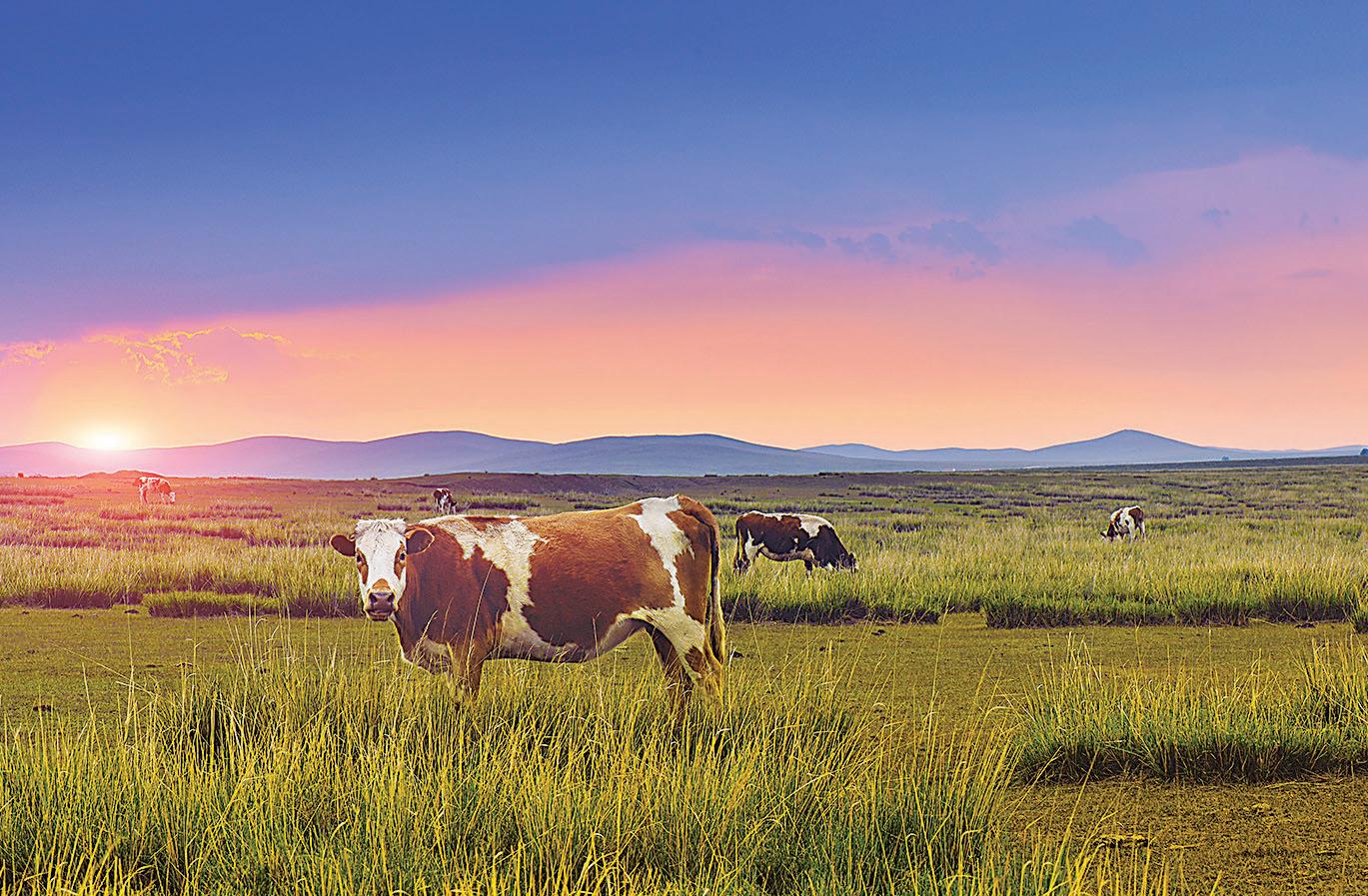

NUFFIELD Australia has opened applications for its 2026 scholarships, calling on the next crop of Australian agriculturalists to be curious, drive change, and help their industry thrive.
Far mers and those workin gi n the industry areencouragedtoseize theoncein-a-lifetimeopportunity by applying for a scholarship for 15 weeks of overseas study.
Nuffield Australia ChiefExecutiveand 2013 scholar,Jodie Redcliffe said Nuffield scholarships wererecognised as the pinnacle for primary producers.
“Scholars have aunique opportunity to visit, learnfromand collaborate with not only other scholars but with agribusiness leaders around theworld,” Ms Redclif fe said.
“By fostering acultureofcuriosityand excellence, we challenge scholars to step beyond theircomfort zones, exploring groundbreaking ideas and solutions that can reshape Australian agriculture.
“From paddocks to boardrooms,Nuffield scholars ensureAustralian agriculturewill thrive in achanging world.”
The organisation awar ds ar ound 20 scholarshipseach year,enabling the sharing of knowledge that creates asustainable and profitablefood and fibreindustry. Some of these scholarships target specific agricultural industries, while others are open to awider range.
Nuffield Australia, celebratingits 75th year of sc hol arsh ips ,wil lagain of fe r u pt of ive dr oug ht re si lien ce- spe cifi c scholarships, supported by the federal government’s FutureDrought Fund.
Soon-to-be-released research commissioned by Nuffield Australia shows its alumni overwhelmingly say their scholarship was an incredibly rich and diverse experience, which had aprofound impact on their life.
ClaireCatford from Hoyleton, South Australia, was awarded ascholarship last year.She said while it was initially adaunting prospect, “going outside your comfort zone is whereamazing thingshappen and I’m seeing that clearly already”.
“The most wonder ful and surprising thing has been the welcoming and supportive network that opens up when you’re awarded the scholarship,” Mrs Catford said.
“In pl a nn in gm yt ra ve ls ,I ’v eb ee n astounded atthe opportunitiesthat’ve opened because of the Nuffield network. Applications close on Friday,May 16, 2025. Shortlisted applicants will be interviewed during June, with afinal round of interviews in July.
Successful recipients willbeannounced at the Nuffield Australia National Conference in Adelaide from September 8to10. Find out moreand apply at: nuffield.com. au/how-to-apply GP1678135

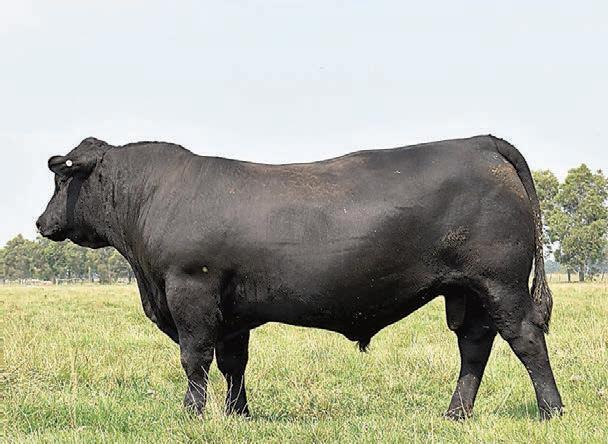

GIPPSLAND Waterand Wellington Shire Councilhave teameduptobringnew communitydrinkingfountains to Maffra Skate Park and StratfordMemorial Park. The fountains featurevibrantartworkby Gunnai artist Alice Pepper
GippslandWater Managing Director, Sarah Cumming said Gippsland Water and Wellington Shirehad delivered 12 drinking fountains together
“We’vebeenworkingcloselywiththe Wellington team to make free water more available across the municipality for about five years now,” Ms Cumming said.
“Ma ff ra Ska te Park and Stra tf or d Memorial Park arelocal hubs for physical activity, making them perfect placestostop and enjoy fresh drinking water.”
Gippsland Water’s drinking fountain program aims to make it easier for people to make healthier choices for themselves and the environment every day.
The program encourages people to carry areuseable drink bottle tohelp reduce the amount of plastic sent to landfill.
Wellington ShireCouncil Deputy Mayor, Cindy Madeley said the fountains were asimpleway to keep locals and visitors hydrated while enjoying the great outdoors.
“It’s fantastic to see new drinking fountains popping up in some of our favourite parks,” Cr Madeley said.
“By promoting refillable bottles, we’re cutting down on waste and doing our bit for sustainability too.
“We’rereallyproud tocollaborate with Gippsland Water on this project and can’t wait to see the positive impact for everyone who uses the parks.”
Both fountains include adog bowl.
To discovermoredrinking fountains or suggest anew fountainlocation,visit: gippswater.com.au/fountains

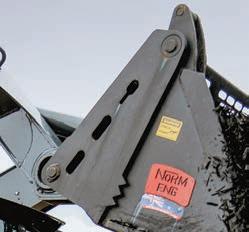
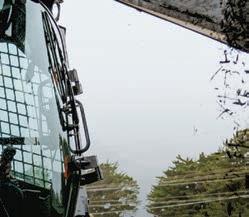


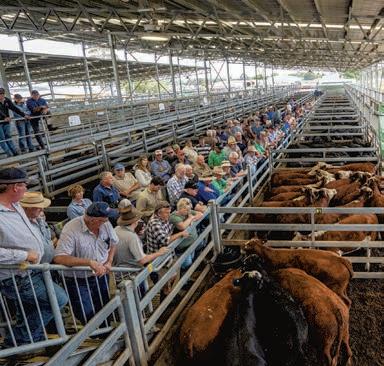
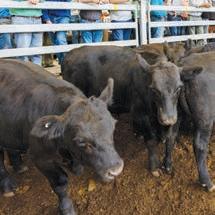

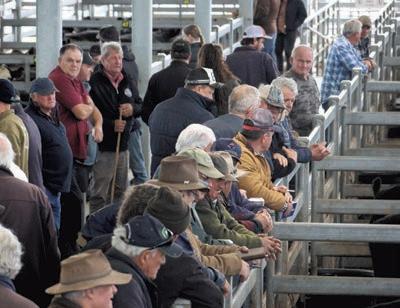
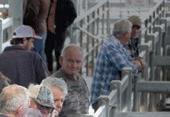



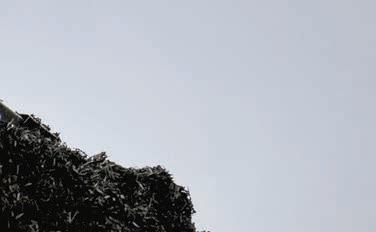
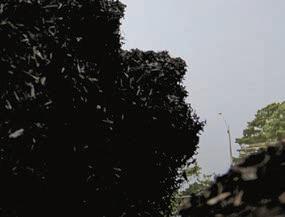



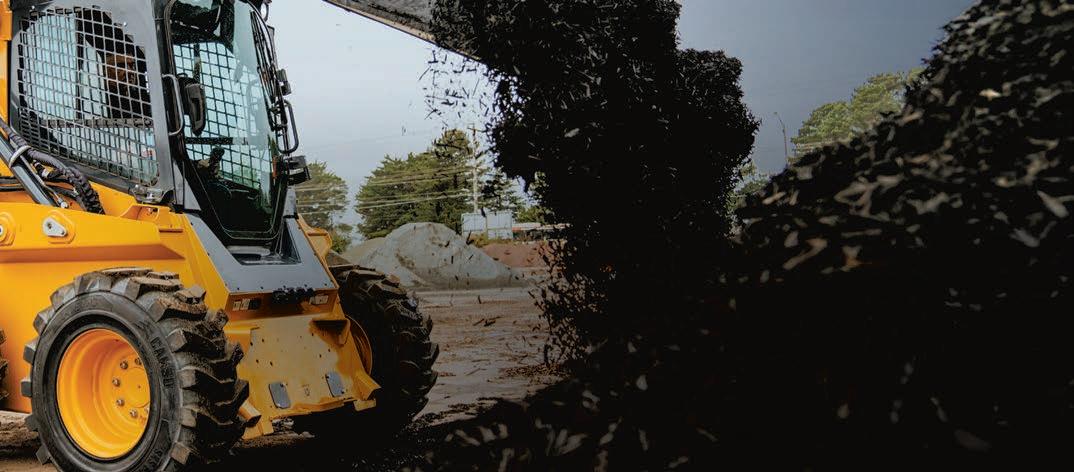







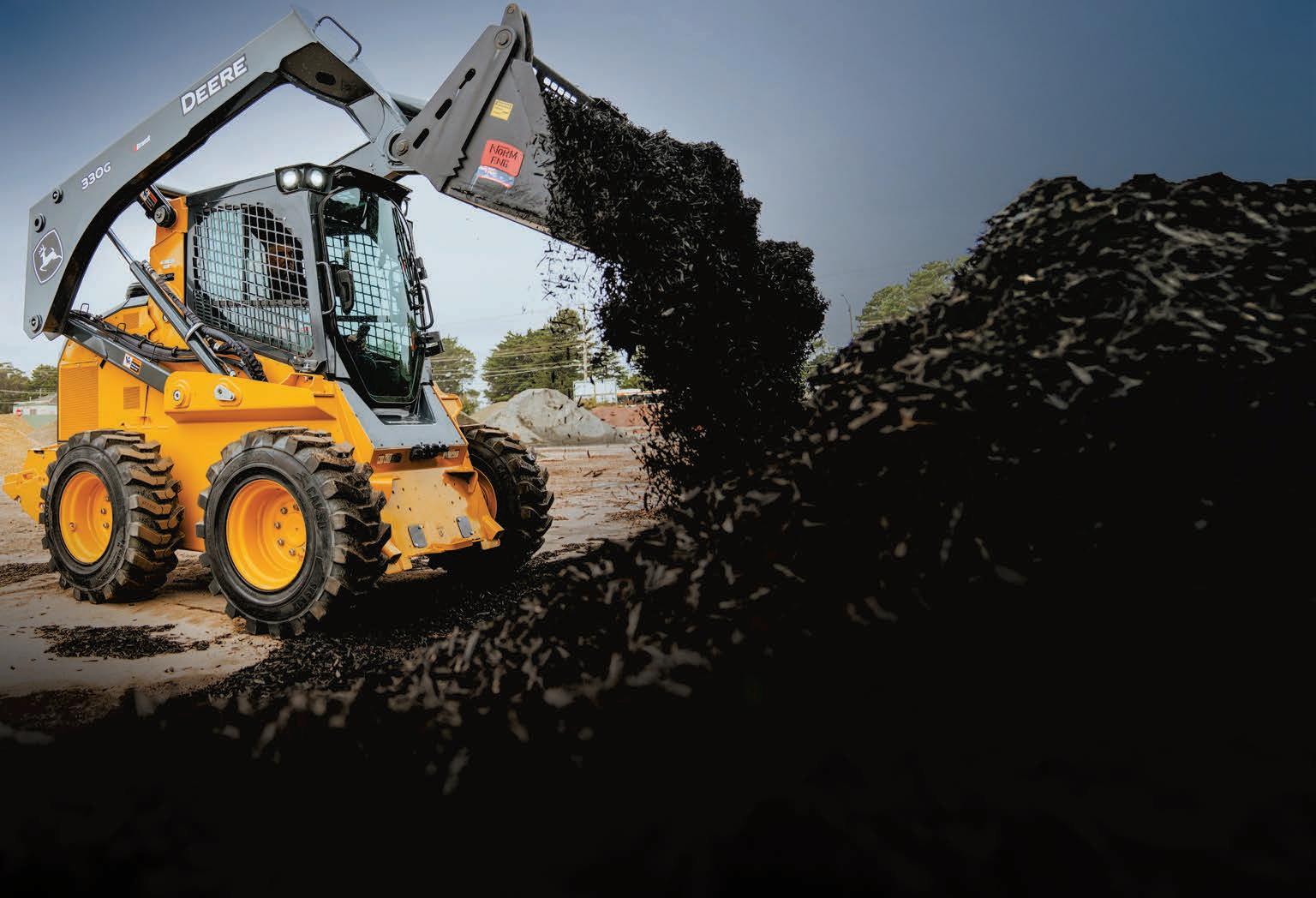

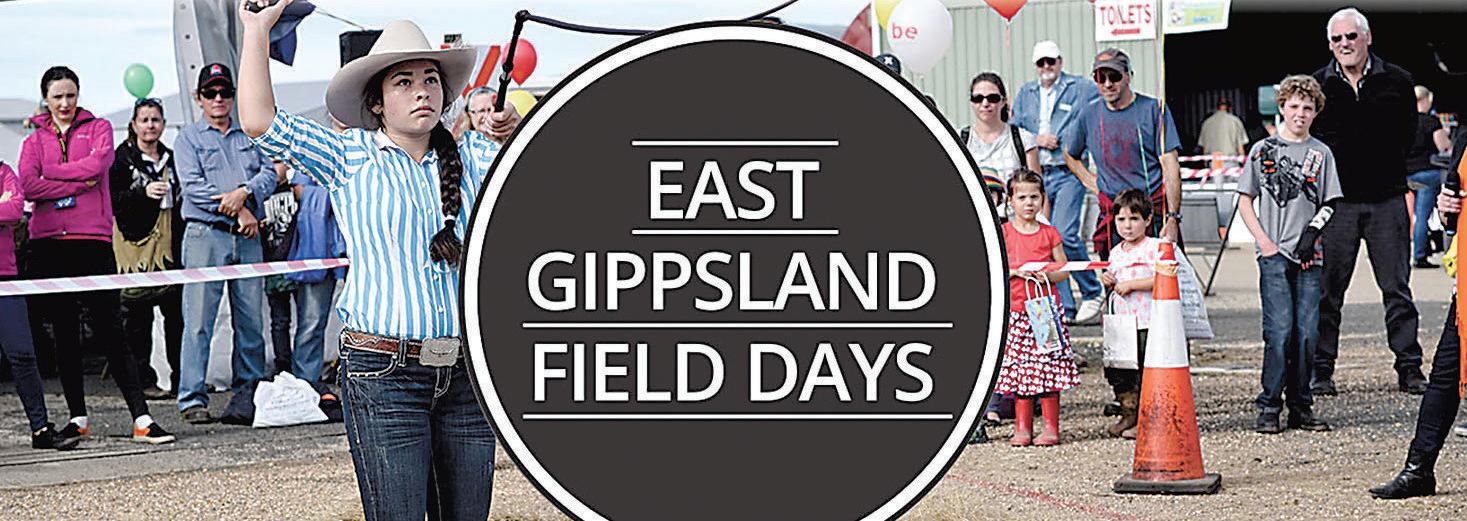
With over 350 exhibitor spaces and numerous quality promotions at the East Gippsland Field Days, up to 10,000 visitors are attracted to the event each year,most of them on the lookout for new products, services and information.
It is agreat opportunity to see avast range of products in one location, talk to experts and enjoy afantastic day out with the family
The East Gippsland FieldDays is not just about farming and equipment, entertainment for the whole family is all part of the fun.
These include the Wood Chop, sheep dog trials, Black Snake Productions reptile and animal live shows, free Children’s entertainment, live Music, adog education zone and great food.


At BestFarming Systems,they are dedicated to helping farmers improve soil health and boost productivity.
As a100 percent Australian ownedcompany, their innovative biological solutions aredesigned toenhancesoil microbial activity, leading to stronger moreresilient plants and long-termsuccess.



Their signatureproduct, TM Agricultural, uses diverse plant extracts to mimic natural plant microbe signaling, stimulating dormant soil microbes to repopulate, aerate, and cycle nutrients.
Charlie Webb, amixed farmer from Urana, NSW,has been using TM Agricultural since 2011, and his results speak for themselves.
Committed to working with nature, not against it, Charliehas transformedhis land by balancing soil microbes, reducing input costs, and increasing productivity.
His focus on soil health has led to improved grain weight,reduced screenings, and healthier pastures.
In 2023, he achievedanimpressive 6-tonne/ha barley crop,well above district averages.
Charlie’s livestock operation has also benefited, with his Merino ewes marking 109 percent lambs and maintaining higher body weight.
By improving soil structureand reducing subsurfacesaltlevels, he has created a moreeven growing environment for both crops and pasture.
Mr Webb said the abilitytotank mix with herbicides made TM applications simple.
He applies it at the recommendedrateof 250mls/ha pre-seeding and in-crop.
Mr Webb estimates he is now saving $6000 in fertiliser freight costs alone.
“Wehave reducedinputcosts with no loss of yield –weare getting higher protein
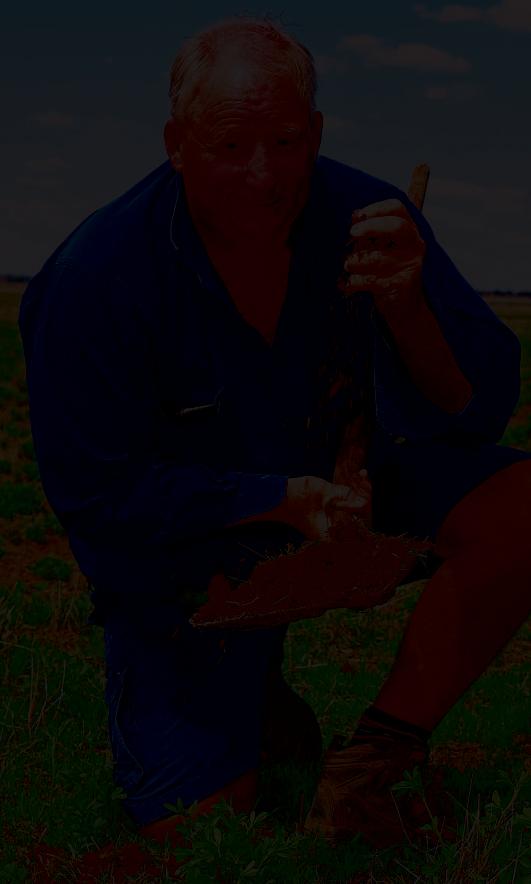
Charlie Webb
levels and maintaining yields at or above district average.
“Weneedto workwith our soil biology to achieve true soil health,” Charlie says.
“I take abit from everything, think it through, and always look for better ways to farm.”
Best Farming Systems areproud to support forward-thinking farmerslike Charlie with innovative solutions.










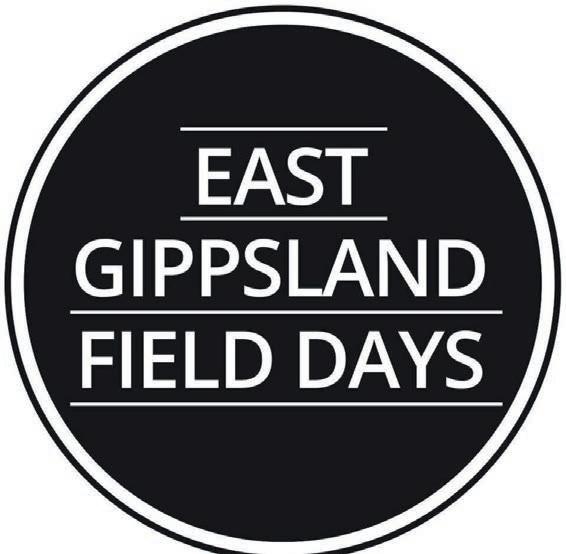























































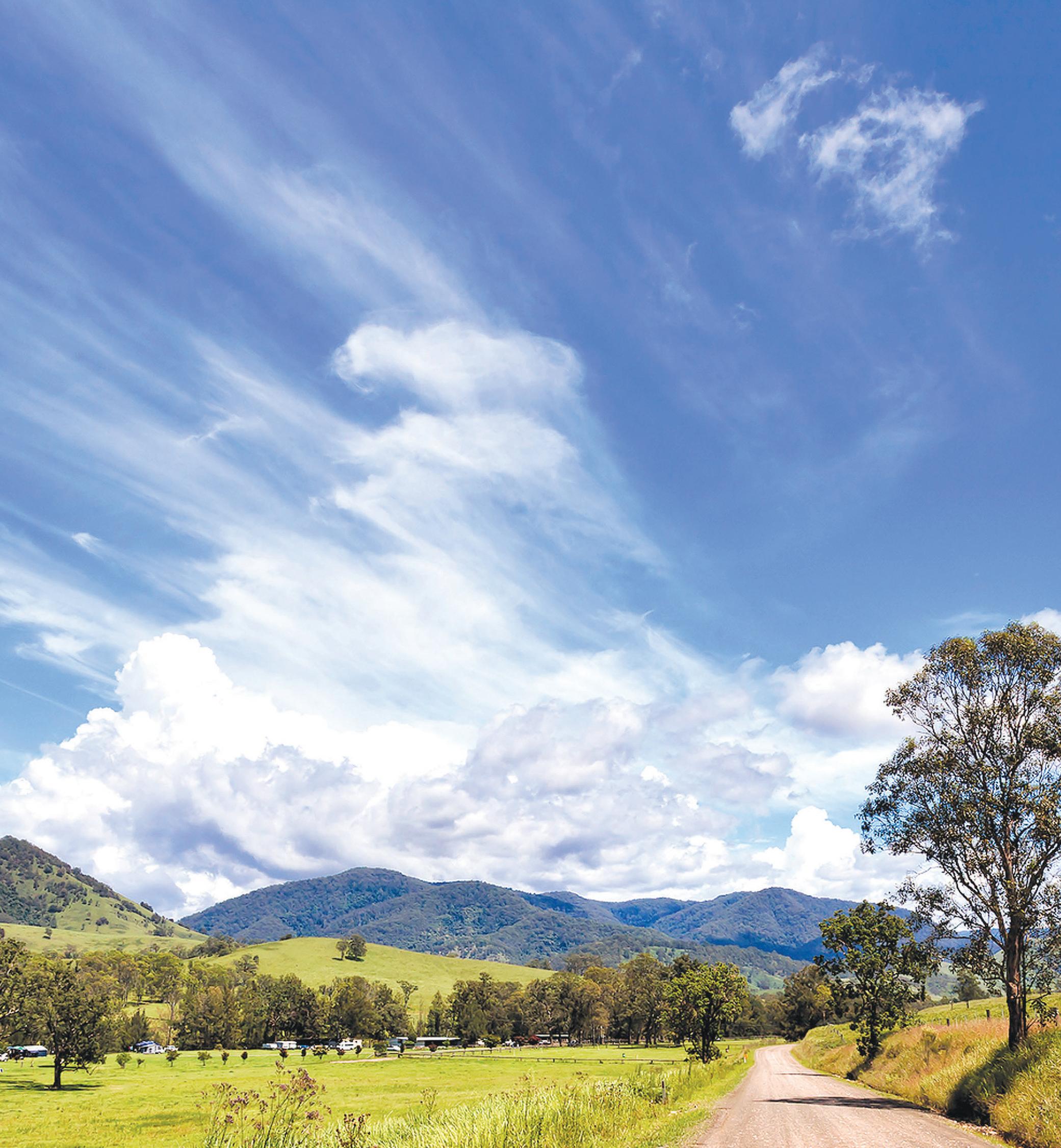









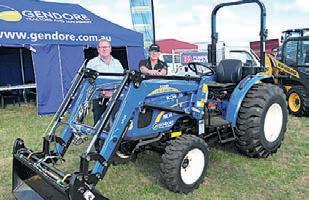









































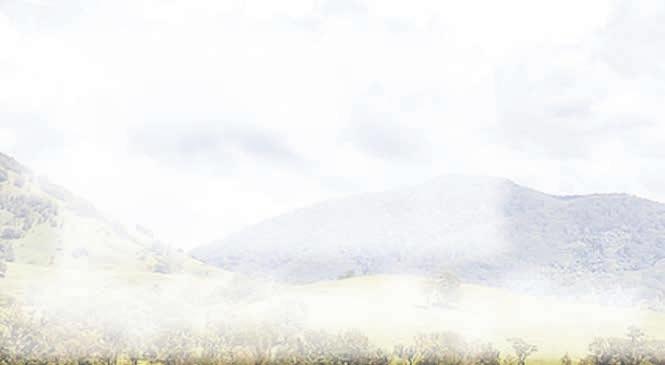


• Mad Style Moto stunt show • Home grown and produced market • Playful Paws Dog Zone
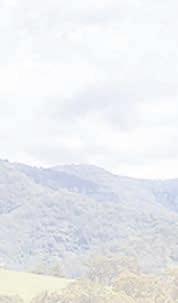
Delicious food and drinks






















Sheep Dog Trials • Wood Chop (SSatuurday y only) nly) Buy


















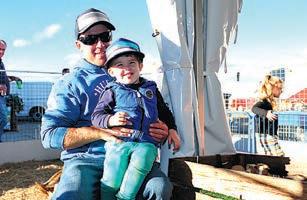



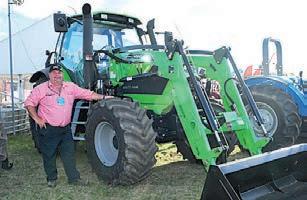






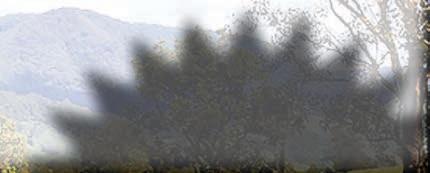


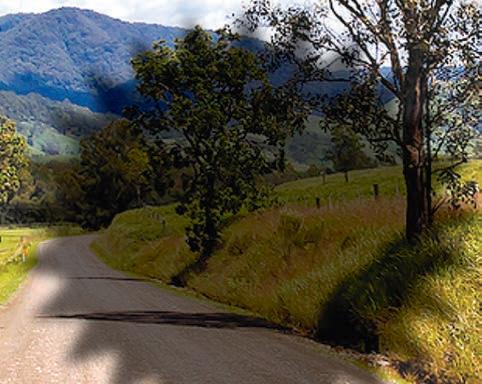

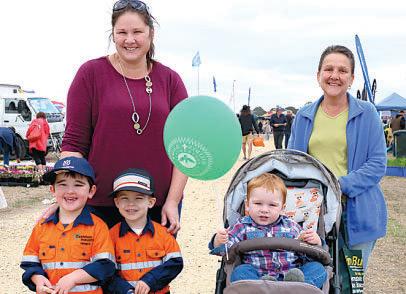


ErikaALLEN
ONCE atimber town, always atimber town -peoplesay Heyfield’s timberhistory is a source of pride.
In Heyfield, this pride goes beyond the passionate people who work in the industry or have family ties to it. It’s visible throughout the community, reflectedinlandmarks and traditions that honour its timber heritage. One example is the Victorian Timber Workers Memorial, which was established in December 2015.
The memorial is in Lions Park to honour the people who died while workingin Victoria’s timber industry. Plaques bearing the names of the fallen areset within stone pillars around the memorial. At its centre, a sculptureofanironhut symbolises abush chapel.
It is aplace wherepeople go to reflect and pay their respects and is asignificant part of the Heyfield Timber Festival, another more jovial celebration of the industry that was revived in 2021. It showcases traditions like the woodchop, woodcarvingand blends a modernindustry complete with new technologies to the industry’s historical roots, highlighted in adisplay of old photographs and vintage machinery.
Thenewest example of Heyfield’s timber pride is the Timber Workers Hall of Fame that inducted its first honouree, Ray Ralph, last year
It’s safe to say that despite the hits the industry has taken in recent times, it hasn’t quelled the timber community’s pride.
Of fthe back of winning the Heyfield Community Group Awardatthe town’s Australia Dayhonours, the Heyfield Timber Festival returned last month, ushering in afourthsuccessful event since its revival in 2021.
Festiva l com mitte e pr esiden t Fel icia Stevenson said although numbers were
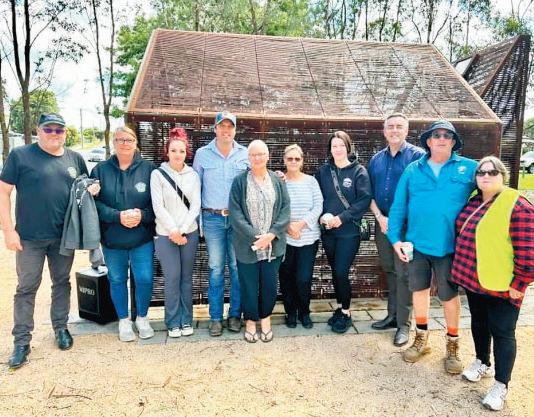

down this year,likely due to the weather crowds filtered in and out of Gordon Street Recreation Reserve in their thousands.
“Numbers weredown but we still had an amazing crowd of people who came out and everytime it rained they ran for shelter,but it didn’t seem to deter people,”MsStevenson said.
“Everywhere Iwent therewas ahuge number of people in alldifferent sections (of the festival).”
Unique highlights such as the dog high jump, wood chop, and wood carving went ahead despite the weather,and not even Saturday’s fireworks weredampened.
Ms Stevenson said the family-oriented festival is nostalgic for many people.
“I think it’s also because they remember the timber festivalfrommany years ago -it’s afamily event and it means alot to so many people,” she said.
Ms Stevenson said the committee was “honoured” to win the Heyfield Community Group Awardearlier this year
The festival committee is made up of seven members, all with connections to the timber
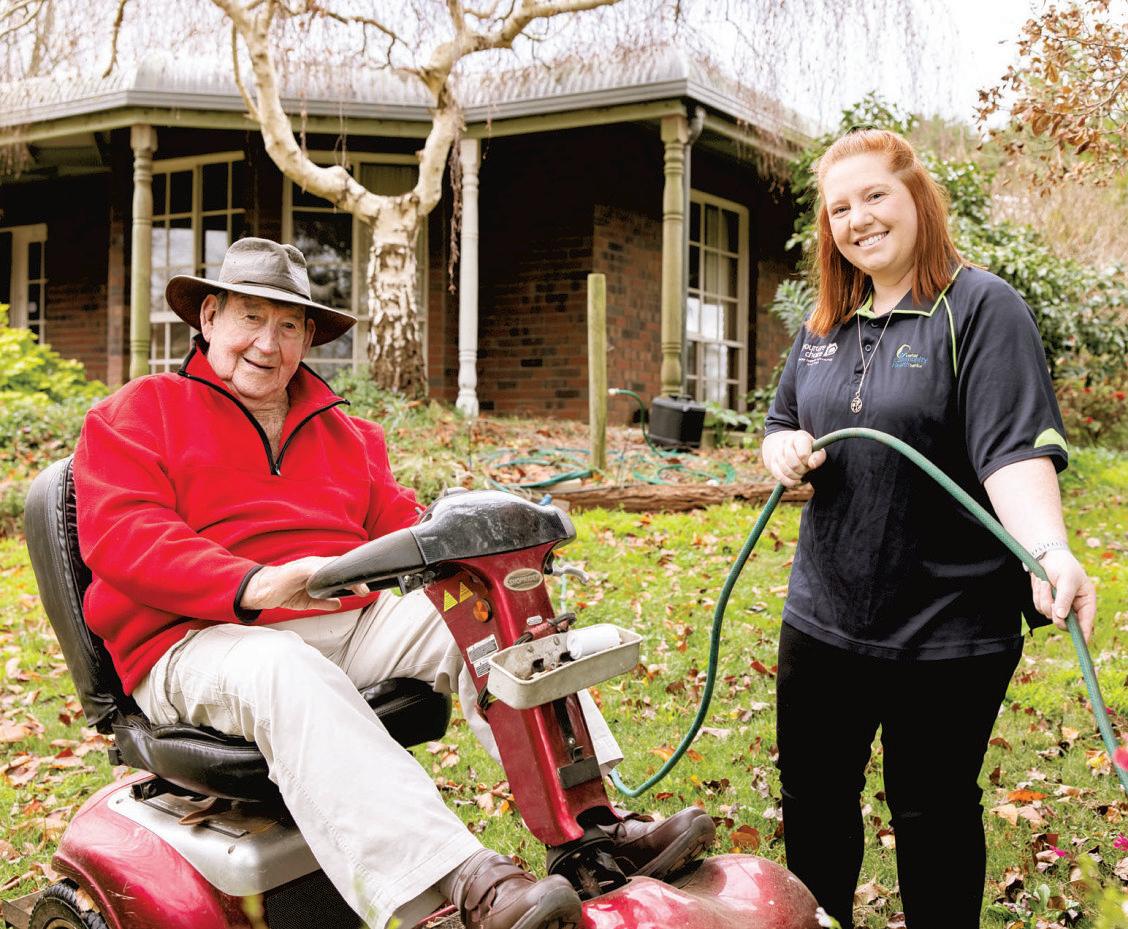
industry. As well as Ms Stevenson,vicepresident Jess Stevenson, secretaryand treasurer Kayla Stevenson, Leanne Phillips, Shane Phillips, Mark Saletaand Yvonne Savage make up the committee.
“It was amazing to have people think that we wereworthy enough to be nominated. That’s all we’ve done it for,isthe community, so it’s good to be recognised,”MsStevenson said.
“I think the people who nominated us arestill huge supporters of the industry. A lot of people in this town, some of the new people,really don’t knowthe significance of it -what it means to alot of us. We were raised through it, we understand that it’s somethingthat’s built our town.
“If the timber industry isn’t anymore, it’s (the festival) still letting people know that history. It’s aproud history to have.
“We’ve started the Timber Workers Hall of Famenow, so we can actuallyhonour people from all over Australia. We’ve got alot of the older people in their 80s, and if they’relucky enough to get to their 90s gettingtowatch the parade or being at the Timber Festival -the pride that they have remembering it. Ithink we have to keep that alive in Heyfield.”
The committee is seeking to recreate the Heyfield Railway Station, which was lost to fire, and transformitinto ahub and the site of the Timber Workers Hall of Fame.
“Our big plan is to rebuild the railway station in Heyfield and have the Timber Workers Hall of Fame inside of that and wherethe railway station was -obviously it’s on the rail trail-and it will be beside the Timber Workers Memorial,” Ms Stevenson said.
“That’s my vision -tourism is abig part of any small town and that’s what we’re going to try and aim for,soassoon as the festival is over we’ll kick it into high gear and go for it,” she said.
As tradition goes, people gathered at the Victorian Timber Workers MemorialinLions Park as part of the festival’s finale, which included aparade down Heyfield’s main streets.
“Sunday went offwithout ahitch at the Timber Workers Memorial,” Ms Stevenson said.
“Wehad Barb Cook speak, she’s had generations of her family in thetimberindustry and TimLester fromAFCA (Australian Forest Contractors Association).”
Mr Leste r, ge ner al manage ro ft he Australian Forest Contractors Association, recognisedthe sacrifices made by employees, past and present, of the timber industry.
“The thing thatreally strikesmeaboutthe contracting and forestry business is that it’s very much about family, it’s multigenerational,” Mr Lester told Gippsland Far mer
Mr Lester said despite being battered by “external forces” recently, peoplecan be proud of the timber industry.
He said it’s important that communities cometogether at events like the timber festival to celebrate tradition.
“It (the timber indu str y) pr ovi des a really strong foundation for communities likeHeyfield andactually rightacr oss Gippsland,” Mr Lester said.
“(At) events like the timber festival you see that pride. Yousee it in the trucks that people bringalong,you see the history in things like the woodchop,you see the technology and the futureinthings like air CTI (Central Tire Inflation), which is amazing technology whereyou can inflate your tires as you drive along.”
Federal Member for Gippsland, Darren Chester also spoke, commending the determination of Heyfield residents.
He congratulated the organising committee and everyoneinvolved in “another successful timber festival weekend”.


Philip HOPKINS
THE ‘reliably unreliable’ rainfall last year highlighted the uncertaintiesoffarming in East and CentralGippsland, the Gippsland Agricultural Group (GAgG) noted in its 2024 research results report.
GAgG Chief Executive, Trevor Caithness, said this ‘reliably unreliable’ rainfallin2024 mirrored previous years, and “reminds us here at the Gippsland Research Farmthat we aren’texemptfromthe pressurethis variability offers”.
“T ohighlight this, we only need look at one of our barley crops planted in the autumn, which failed due to drought-like conditions and then again eight weeks later after resowing, due to water inundation,” he said.
“Theseextremes reinforce the importance of pr ecise cropand soilmanagement practices tailored to our region’slimited water -holding capacity.”
The research report said with total rainfall in East Gippsland in 2024 was 529.6mm
-below the 10-yearaverage (625.4mm) and long-termaverage (641mm) -the year required strategic management to navigate uneven rainfall patterns.
“Early-year rainfalloffered amodest start, with January and February close to historic trends. However,March brought significantly lower rainfall (27.8mm), leading to early moisturedeficits thatimpacted preparations for autumn planting. This required many far mers to rely on stored water and soilmanagement to sustain pastureand crops,” the report read.
“Winter pr esented am ixed pictur e.
While May’s 13.6mmwas unseasonably dry, delaying pasturegrowth and winter feed availability, June provided awelcome 86.8mm -above long-term averages -helping replenish soil moistureand invigorate mid-season recovery. July (66.8mm) further contributed to improved conditions, supportinggrazing systemsand waste storage for sort-termneeds.”
The report stated that spring’s dry conditions posed the greatest challenge to come,
with well-below average rainfall.
“Thislimited opportunitiestoconserve fodder and strained far mers managing new-season lambs and calves. Low rainfall in November and December compounded thesepressures, leaving many reliant on supplementary feed,” the report read.
Mr Caithness saiddespite these challenges, 2024 reinforced the importance of strategic adaptation.
“Farmers continue to innovate,employing water storage solutions, drought-resilient pastures, and improved grazing systems to thrive in the face of climate variability. With such resilience, the region remains poised to capitalise on favourable conditions in futureseasons,” he said.
Mr Caithnesssaidkey achievements of GAgG last year were:
Pasture research: Three years of data on Phalaris, fescue, cocksfoot and other species areproviding vital insights into improving pasture per for mance;
Soil health gains: Measurable improvements in soil structureand depth highlight the success of projects like Grow MoreTopsoil, and;
Gippsland lamb performance trial: This exciting new initiative is driving progress in unlocking lamb production potential in our region
Mr Caithnesssaid therewereseveral advancements at the Gippsland Research Farm. These were:
Containment feeding system: Delivered through the Gippsland Drought Node, this system demonstrates practical, regionally relevant livestock management solutions;
Infrastructure upgrades: Continued paddock development enhances research and commercial opportunities, and;
Education centre opening: A major milestone, providing ahub for education, engagement and regional capacity building.



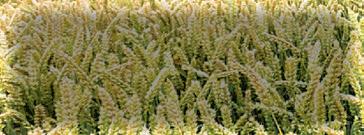
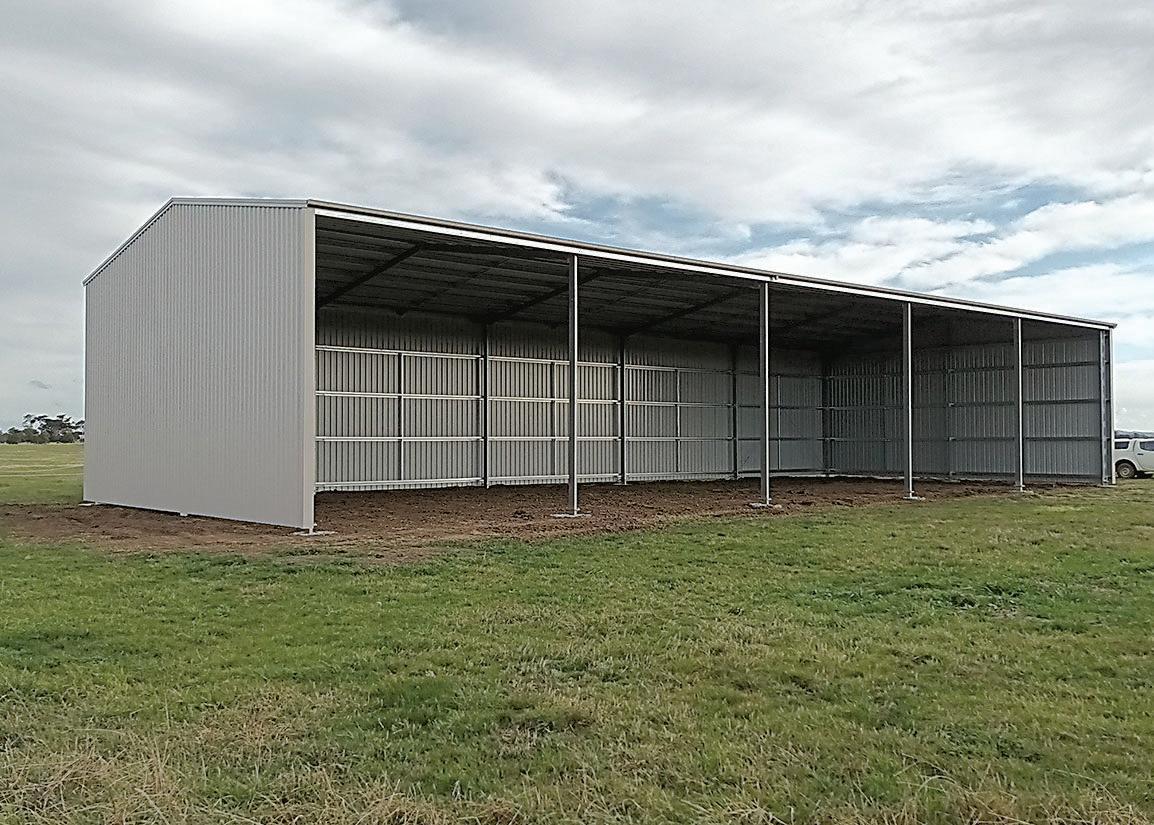
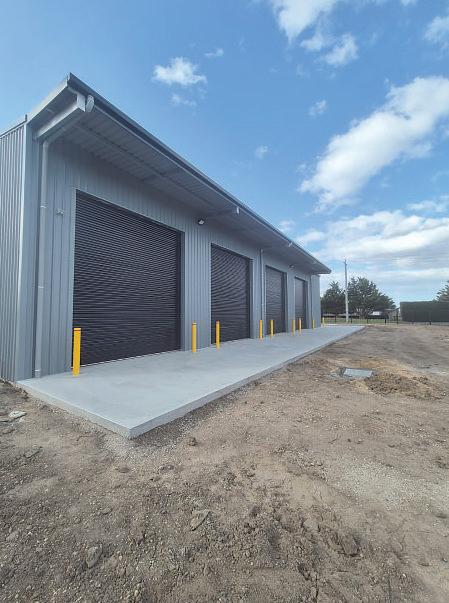
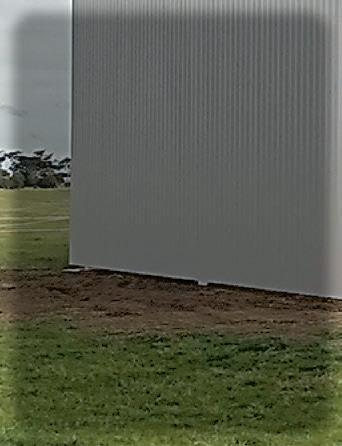



BRANDON
Katrina
HIDDEN away within the Gippsland hills is an agaveamericana (centuryorhalfcentury plant) that blooms only every 10 to 25 years.
Now, the time has come for this Gippsland succulent to bloom for the first time in 25 years.
This pl a nt is uniqu eb ecau se it is a monocarpic succulent, meaning it only blooms once in its lifetime and then dies.
According to Planet Desert, mono means single, and caprice translates to flowering or fruit. It said, "monocarpic plant flowers only once, which is why these are also called death bloom succulent".
"Coincid entally, many fr om the cacti family aremonocarpic. One of the characteristic features of this variety is that the plant will die on its own after flowering.
“It is anatural process for the flowering succulent plant, and thereisnothing a plant owner can do about it.
"These plants cannot sustain for long after sprouting flowers because no energy is left i nt he m. Even if p la nted in t h e best soil and watered well, they have no nutrients left to survive further."
This particular plant, the agave americana, is not native to Australia but to certain parts of the USA and Mexico.
The blooming process takes three to four months and is intriguing to watch develop, accor ding to the owner (who wishes to stay anonymous).
“About 25 years ago, Igot two small ones (agave plants) from afriend of mine,” the owner told the Gippsland Far mer
“I put them in side by side; they grew. They expanded as they have until their leaves wereapproximately two and ahalf tothree meters long.
“The plant appeared brilliantly all of the time, with beautifulgreen foliage and a lovely yellow.
“Out of the blue, about four months ago, aspike appeared in one of the two, and that spike came out of the centre and grew about an inch to an inch and ahalf inchesper day,everyday non-stop.It was staggering. It kept going up and up and up.
“It’s now at its full height because it is about to die,about eight metershigh. Aboutthree days ago,the foliage started, the branches came out, but nothingon them.
“Allofa sudden, there werefist-sized clumps on the end. They expanded and fully grown. Thereare hundreds of very little, spiky flowers.”
Initially, the century plant was named the century plant because people thought it o nly bloomed once every 1 0 0years, as no one had seen it bloom. Later,they discovered that the plant typically only lived for 10 to 30 years, giving it the name half-century plant.
The plant has sharp spines throughout the base of the succulent and then later on grows astem when it is ready to bloom. It also thrives in hot and dry conditions. Succulentsare knowntobehardy plants, and the century plant is no exception to this description.
While blooming,the agaveamericana produce ‘of fsets’ or ‘pups’ as they bloom.
The Gippsland-located plant can reach up to eight metres tall and is at the tail end of its bloom cycle. This is often when it attracts pollinators such as bees, hummingbirds, and some species of bats.
For moreinformation on the agave americana or half-century plant, visit: gardenia. net/plant/agave-americana-century-plant


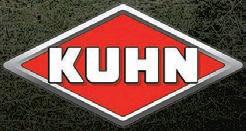

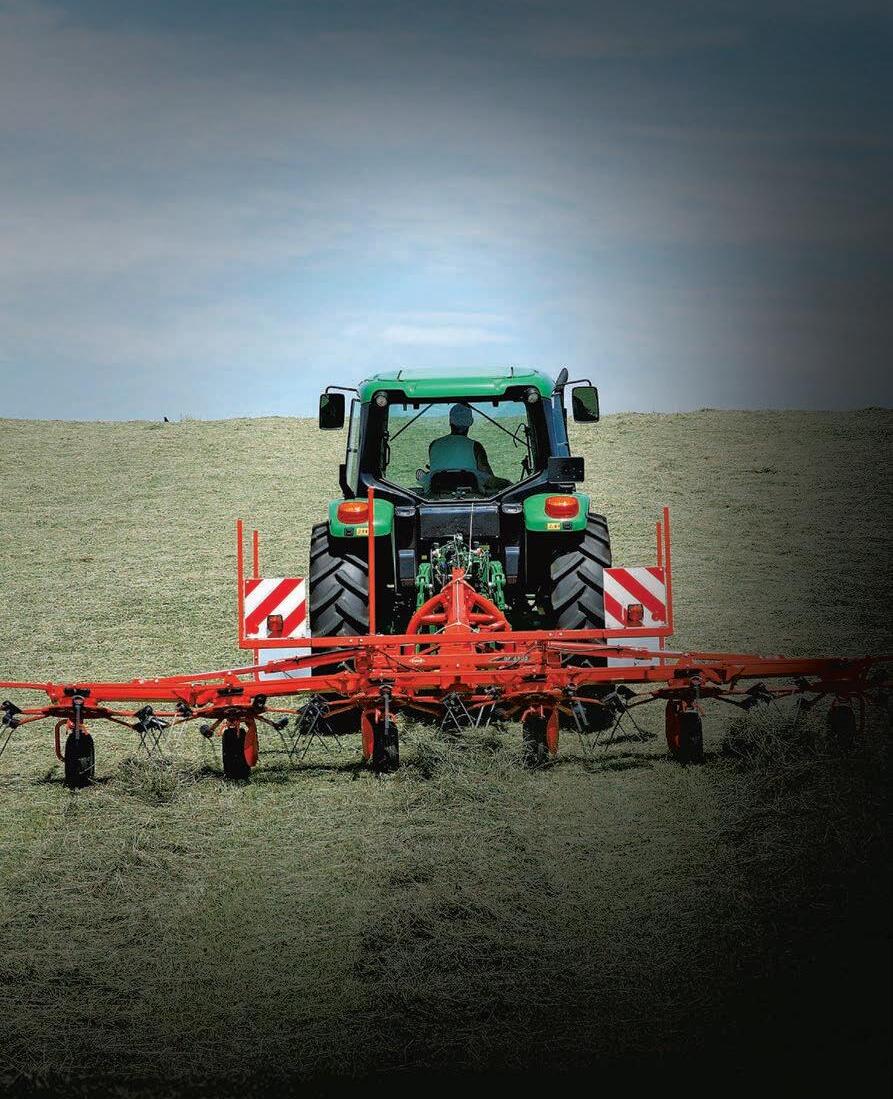

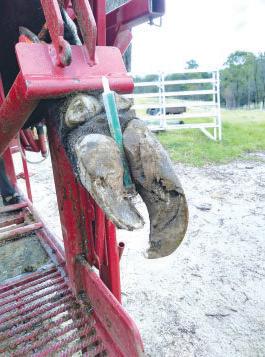
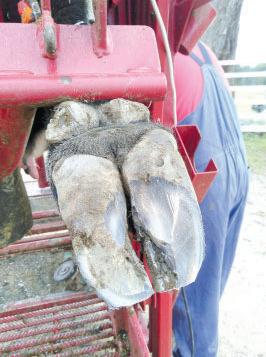
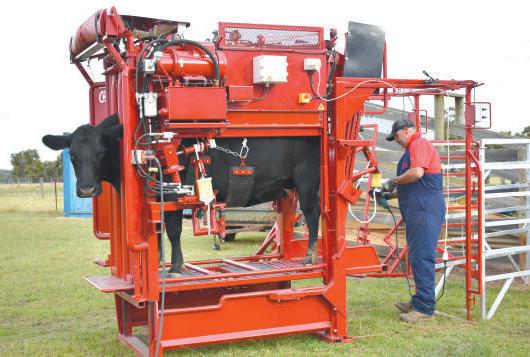
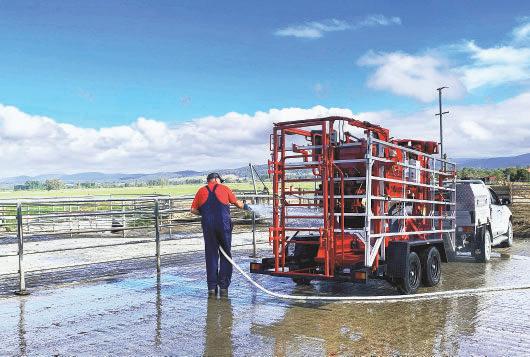
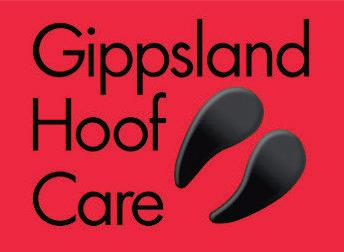


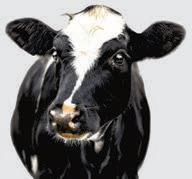



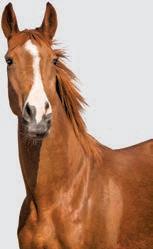
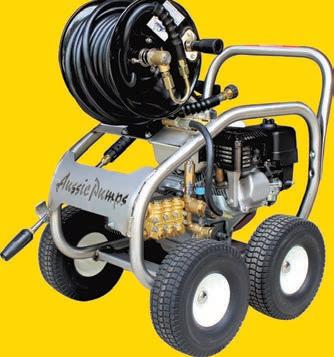
From PAGE 1
ON lambs, the US' demand for protein is unbelievable, the lamb demand is coming from east and west coast, large Hispanic, Italian, and Jewish communities - they love their lamb There is no lamb on the menu in the mid-west It’s a hangover from negative connotations of mutton rations during WW2,” Meat & Livestock Australia Managing Director, Michael Crowley said He said there were growth opportunities on the back of international trade agreements, with the UK free trade agreement a significant one Before the FTA Australia’s lamb exports to whole of Europe were 19,000 tonnes Beef access was 7000 tonnes On Day One of the UK FTA deal coming into force, those volumes ramped up significantly - 35,000 tonnes for beef, 25,000 tonnes for sheep meat“when we had a total of 19,000t for whole of Europe”
“That’s just for the UK - 110 000 tonnes for beef and 75,000 tonnes for sheep/goat after 10 years, then there is no quota, no duties for 60 million people They value quality, are long-term trading partners – it’s a big opportunity there
Mr Crowley said for the sheep industry the deal done with India was really interesting - the 30 per cent tariff on sheep meat was eliminated, and more comprehensive FTA talks were continuing
“They have a huge population, a developing country, and a decent part of population will seek out our product,” he said
The UAE trade deal “ was a fascinating one ”
“There are not high duties going into UAE, but getting other Gulf countries to the table is a big opportunity,” he said
“Europe has also huge potential It’s very complicated negotiating a deal with 27 member states who don’t trust each other Their beef and lamb production continues to decline, the demand for red meat is still very strong; it’s another wealthy region, with 300 million people They like red meat, they are prepared to pay for quality It’s a big opportunity ”
Mr Crowley said the situation in the US was fascinating due to President T rump
“We don’t know whether our industry will be subject to import duties into the US but we have an FTA at the moment,” he said The US herd was at its lowest in 75 years
There was a slow rebuild but “the net gap in global demand and domestic production is growing at the moment but they are feeding cattle for longer
“They are increasing carcase weights from 750 pounds to 1000 pounds, an increase on feed for 30 days on average, they are feeding a lot of heifers that otherwise would have gone back to breeding programs, he said
“But their overall product is not as low as figures suggest Demand creates opportunities for the US as a customer and in those markets where we compete ”
Mr Crowley said in the Australian cattle herd, “ we have seen ebbs and flows based on seasonal conditions”
We have been in a rebuild phase, we ve se en a pr opo rt io n of fem al es com in g through slaughter very high last year There are different views; on the back of a rebuild post 2018-19 we saw maturing of the herd, a lot of older cows coming off the market, but a lot of heifers are hitting the market, he said
The sheep industry was relatively fragile
“We’ve seen strong growth; we are getting close to 80 million sheep but we are seeing tough seasonal conditions in large parts of southern Australia,” he said
“If that continues many in room are keeping an eye on an autumn break and a decent change in the season We have seen the flow-on impact of banning live export out of WA from 2028, on the WA industry ”
Mr Crowley said MLA had marketing programs that focus on meeting what customers and ultimately what consumers are looking for The beef and lamb program advertising was aimed at service and retail independent butchers and campaigns with large customers
“Domino’s for example - we did lamb pizza




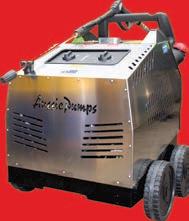
promotion with Domino’s; 500 000 pizzas were sold in that three-month campaign ” he said.
“We are working with big catering companies stadiums getting products from fine dining to quick-service restaurants ”
Mr Crowley said MLA focussed on production systems to meet the goals in customer and consumer needs Technologies were now accredited in beef and sheep to meet eating quality traits at chain speed “allowing us to have more objective measures of quality creating more transparency in the supply chain getting accurate feedback back to producers”
“This is ultimately not just to the lowest owner but even infor mation back to the breeder so we can make better genetic decisions how to better meet market specifications and we can unlock a lot more value ”
Mr Crowley said processors were using new machinery that for example can measure intramuscular fat Processors were using ‘eating quality’ for lamb and obtaining big premiums above the base price
“That is the opportunity; lamb has a very strong position in the market as a category We know there are variations; the status quo of the base price is the starting point,” he said The system was used to identify top-end loins going into high-end food service, both domestically and internationally
“How do we harvest and gain premiums for hitting those specifications I’d love it to remain an incentive system ”
Mr Crowley said advances in automation were occurring
“Anything we can do to reduce the cost of production is a plus We are a high-cost processing country, we pay our people well, there are labour shortages in processing works acr oss the country; we import labour,” he said “The intention of automation was to reduce labour units but it’s leading to improved yields in high-quality cuts ”
One machine was paying for itself in 18 months
Consistency in the shape of the product is unreal, the yield improvement, the shelflife improvements - fewer people handling it, less bone dust using a circular saw instead of a fan saw improving work conditions
- WorkCover premiums are reduced, and yes, we take some people out of the boning room as well"
"On beef boning automation, we are aiming at a significant yield on loin cuts that make up a large part of carcase value
Mr Crowley said MLA was looking at producing collagen from hides and skins
“Nutraceuticals, tapping into protein as an ingredient in sauces; we are looking at uses for those products in aged care, for example, improving protein and iron in nursing homes There are a whole lot of uses for value-added products through lower value items ”
In looking at future strategy, Mr Crowley said environmental sustainability remains “at the forefront of our customers”
“We have made significant progress as an industry - net emissions since base line 2005 have reduced by more than 70 per cent (78 per cent) That s a phenomenal progress, through adoption of technology, feed supplements, soil carbon trading, vegetation management,” he said
“I’m excited when productivity delivers us solutions If we can drive fertility, increase lamb survival, reduce mortality, increased kilos of production per hectare - they are all fundamental productivity drivers – and guess what it reduces our emissions profile Improves our emissions intensity per kilogram of production (EMITS are now 31 08Mt of CO2 per year, down from 145 Mt Co2-equovalent pa)
“We have a positive story - one of the few industry sectors in this country that can sequester carbon, reduce emissions and can do it by driving productivity and adopting new technology It can go hand in hand ”
Mr Crowley said MLA updated its data



system to be able to handle that information.
“We ar e r ecipients of a large federal gover nment grant to redevelop our NLIS data base - make it more user friendly, make data more accessible, data systems that will enable the date to flow back to the breeders so we can credential animals going forward into the supply chain - environmental welfare, or whatever the customer demands ” he said.
Summing up the strategy for the next five years Mr Crowley said MLA was using consumer insights, customer demand, and thinking about how brand specifications need to evolve - how we objectively measure quality and yield”
“Pricing signals will be made up of quality, yield and brand specifications, then the production sector can respond ” he said.
“We can deliver a multi-breed genetic evaluation for the commercial sector, we can feed forward credentials in livestock production systems, and market animals with destination in mind
MLA has invested about $16 million in 17 projects and activities in Gippsland
productivity, eating quality, objectiv e measurement, producer adoption, soil and pasture management, sheep health and resilience Mr Crowley said MLA has a long-term presence in the region, with Radfords, Greenham Gippsland, and JBS Brooklyn operating either in the area or sourcing cattle from the area.
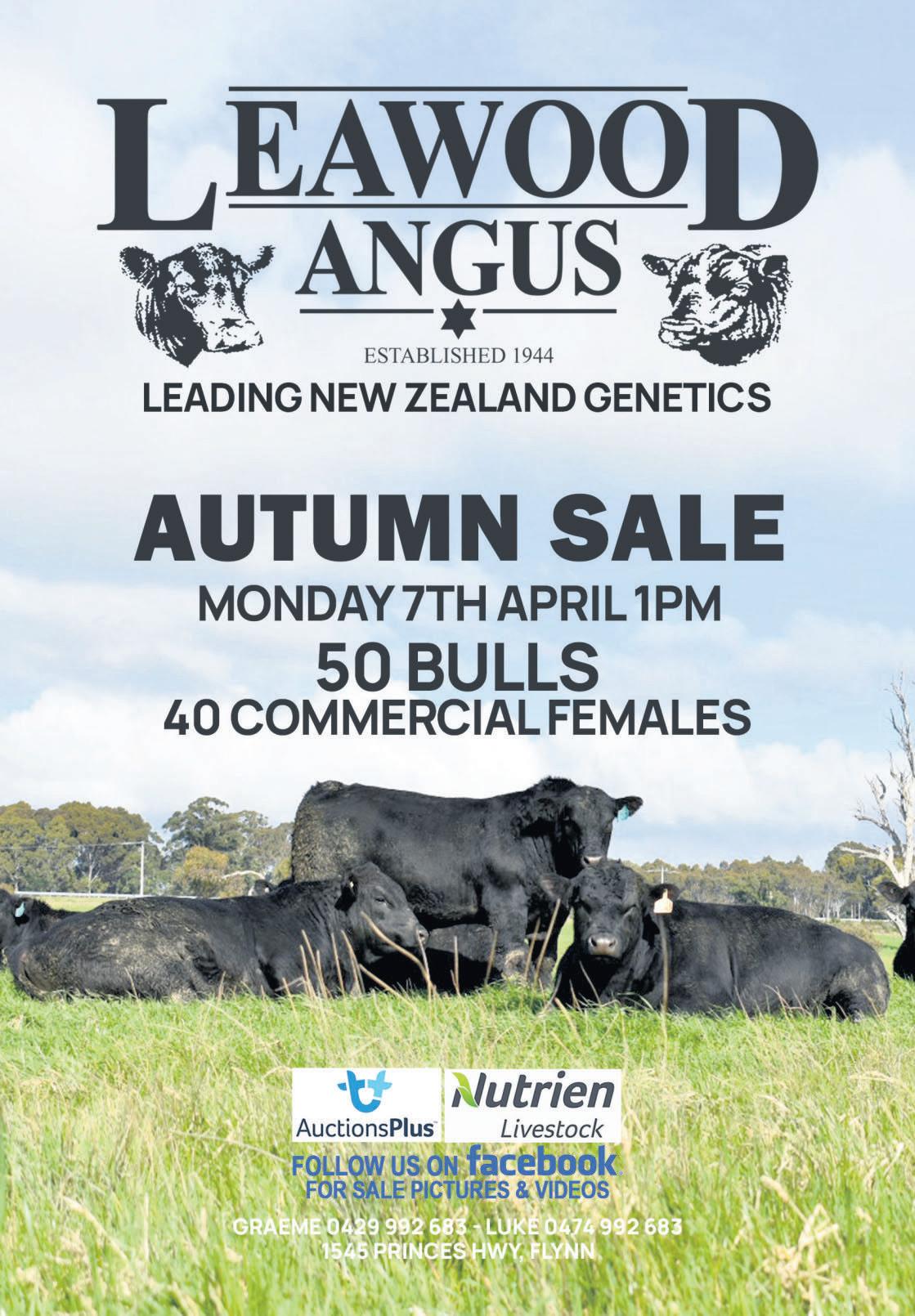





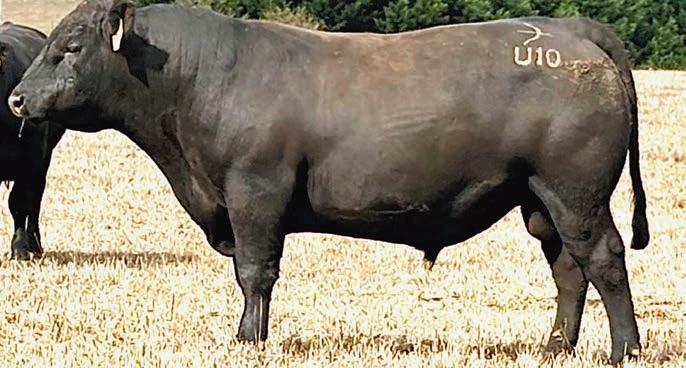
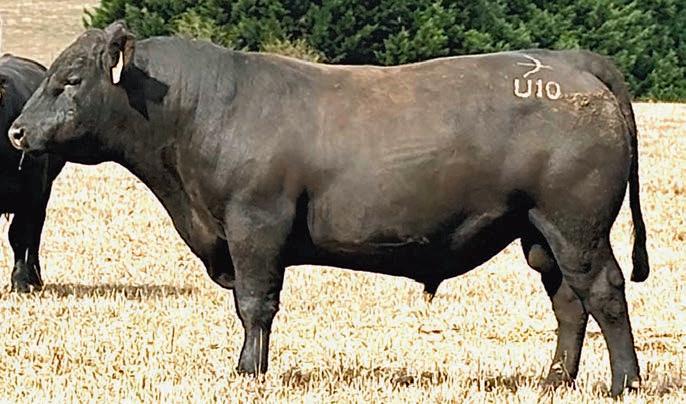
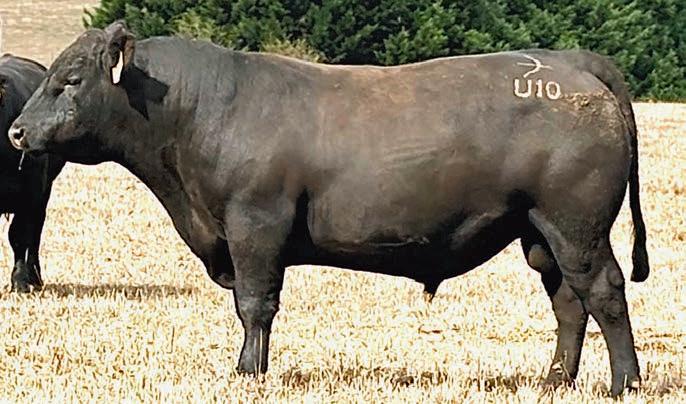






THE latest quarterly statistics on livestock slaughter and meat production from the Australian Bureau of Statistics (ABS) have shown that 2024 was the largest year for lamb and sheep slaughter in decades.
Numbers analysed by Meat &Livestock Australia (MLA) showthat26.6million lambs wereslaughtered in calendar year 2024,whichisthe largest number ever. Sheep slaughter also reached 11.7 million head, the largest since 2006.
According to MarketInformationManager at MLA, Stephen Bignell, the recordslaughter rates are significant for anumberof reasons.
“These elevated slaughter rates seen in 2024 aredue to acombination of alarge national sheep flock with higher percentages of sheep meat breeds being processed, and generally drier conditions seen in South Australia and Victoria,” Mr Bignell said. Total lamb production for the year reached 634,706 tonnes. This makes 2024 the



largestlambproduction year on record, six per cent above 2023 lamb production figures.
“In the past two years production has lifted by 18 per cent. This is due to genetic improvements in the flock but also the demographic shift towards sheep meat and shedding breeds, which is driving fertility and thus leading to productivity gains in the national flock,” Mr Bignell said.
For the previous quarter to December 2024, mutton pr oduction hit 90,847 tonnes,which wasthe largest quarterly sheep production since 1997.
“Across the country towards the end of last year we saw mutton production soar,” Mr Bignell said.
“Favourableprices at the end of the year drove this increase. Lamb prices reached $10 per kilo whilemutton was at 300-440c per kilo, making it moredesirabletoprocess muttonasopposedtolambs for many producers.”
For Q4 last year,adult cattle slaughter reached2.13m head, whichwas 16 per cent above the same quarter in 2023.
Over the wholeyear,8.3 million cattle wereprocessed, which wasthe largest throughput since 2019 and 18 per cent higher than 2023.
All states lifted on the previous year,with Tasmania’s rate lifting four per cent and WesternAustralia at 10 per cent. New South Wales and Queensland had similar lifts at 15 per cent and 16 per cent respectively.
“The largest lifts wereseen in Victoria which had a27per cent increaseand South Australia which had a56per cent higher slaughter rate compared to 2023,” Mr Bignell said.
“Dry conditions across the southernband of the country have forced stronger turnoff across those states as producers move to destock by selling interstate or processing excess cattle.”
Despite2024 slaughter being 10 per cent below the previous slaughter record, production last year reached recordvolumes. Over2.57tonnes of beefwas produced, up 16 per cent on 2023, and enabling the recordexports seen last year
The averageadult carcase weight (cwt) lifted2.6kgfromthe previousquarterto 310.8kg cwt, although this was 2.8kg below December 2023.
Areduction in female turnoffisthe reason for these lighter weights with female slaughter reduced six per centand the female slaughterrate(FSR) down 52.2per cent to 51.8 per cent.
The industry uses 47 per cent FSR as a benchmark as to whether the industry is in arestock, steady or destocking phase. A quarterly FSR of 51.8 per cent is the third consecutive quarter abovethis benchmark, which indicates the cattle herdhas entered adestocking period.



The 2025 Alpine Angus Autumn Saleis to be held at the Alpine Sales Complex at RosewhiteonWednesday 12 Marchat 1pmoffering 100 HBR and APRAngus Bulls.
The Sale Bulls will yardedfor inspection by 10am on Sale Day
AlpineAngus have been operating for over27years andsellaround 200 bulls annually
AlpineManagerChris Oswin“Ourfocus has always beenondelivering sound, qualitybulls that last withexcellent structure and strong growth and carcase traits.
We do thisbycontinually striving to maintain anddevelopour highly maternal cowherd.
Cows that last and grow to produce bulls that do the same.”
Alpine Angus run around700 cows run mainly in theAlpine Valleysaround Myrtlefordaswell as on agistment on the Hay plainsatNarringa, South of Hay.
Alpine femalesare joinedtosound, quiet sires withstrong constitutionand high performance.
Balanceisthe key to the Alpine breeding program,maintaining body,doing ability and structurewhile increasing performancepotential.
With an emphasis on the basic fundamental traits of Angustocreate cattle that last and have the ability to pass their geneticson.
Alpine continuallystack generationswith essential traits to produce reliableand consistentresults.
The Alpinecow pedigrees arelittered withfoot improvers andsires that have stood the testoftime
Alpine’s main bull breeding focus has alwaysbeen towards weaner producers and ensuring cattlepackplenty of punch
Alpine Principal Jim Delany“We are fortunateour genetics have been showcased so well by so many farming families throughoutthe NorthEastand beyond.
We arehumbledbytheirsuccessacross so manycalf sales andthe demand that has beencreated for Alpinebred calves.”
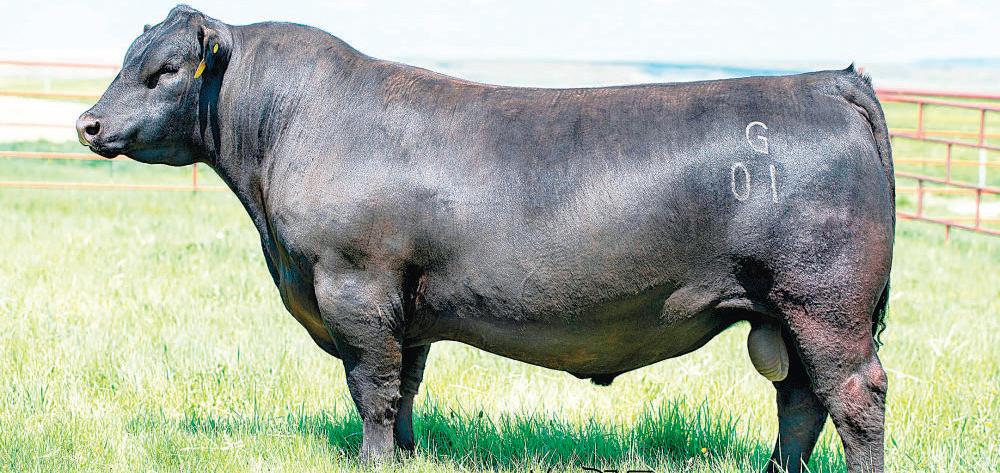
Weight gain hasbeen and always will be akey driver in Alpine’s breeding decisions
Targeting high growthsires ensures Alpine genetics remain relevantthroughoutthe production chainand contributes to the popularity of Alpine genetics commercially
Chris Oswin There are plenty of sires we would love to useon phenotype alone, butwithout growthweare doing ourselvesand others adisservice
Morerecently we have been able to significantlylift the carcasetraits in our cattlewithout sacrificingthe basics and this has helped increasethe merit of our cattle further forward.”
In recent years Alpine Angusgenetics have alsobeen soughtby studs
throughout Australia with anumber of high quality bulls being used as herd sires.
Currently Alpine Angusis represented by industry AIsires AlpineReal DealR163 AlpineRonaldo R232 and Alpine 38 SpecialS021.
RealDeal’s first sons soldto $100,000 in 2024
Alpine Angus offers a great opportunity for commercial producerstoaccess quality,wellrelated genetics at affordable prices supported by acommitted after sales program.
The 2025 Sale team is made upoflarge lines of quality bulls from leading industry and Alpine sires.
Siresinclude BaldridgeGoalkeeper, Baldridge Versatileand Alpine Real
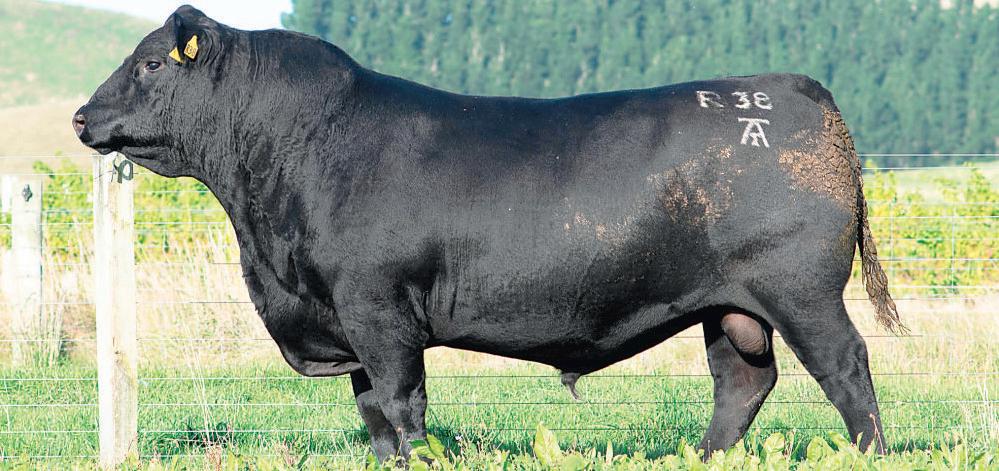
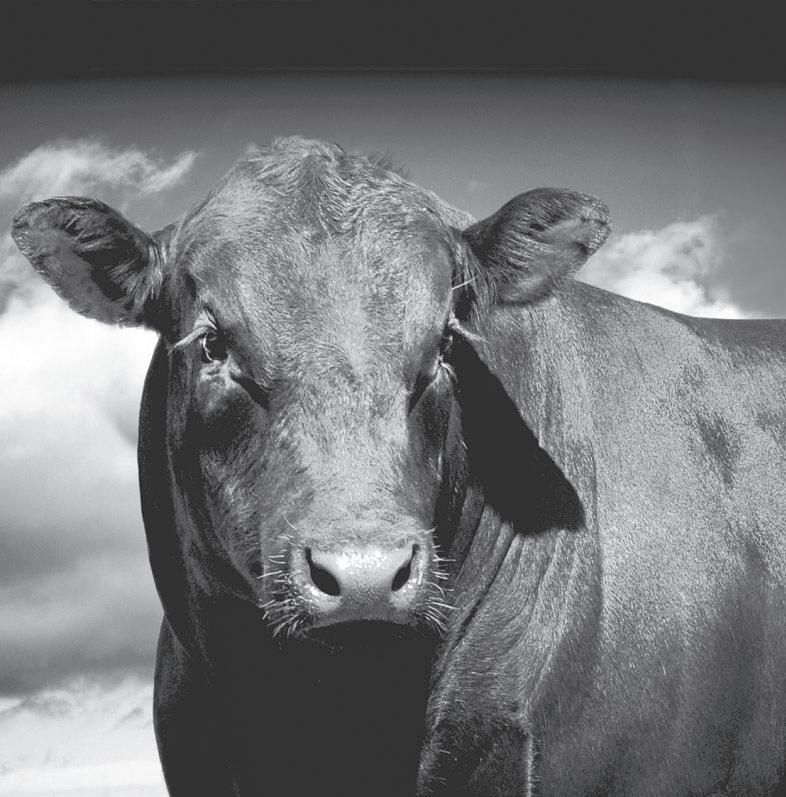
Deal -all arebig growth, high carcase attribute sireswithmoderatebirth who produce well fleshed, quiet sons that haveproven highly popularover thelast 18 months with allthree producingsons thathavesoldfor $100,000. Therecordbreakingand record producing Millah Murrah Paratrooperisalso well represented throughoutthe sale. Carcasequalityisfurther enhancedby ahighquality runofRennylea N542 descendants as well as Alpine’sfirst sons by Te ManiaRainmaker R209 a docile,highmarblingsirewithgood frame.
Chris Oswin “N542isrenown asaneasy calving, highIMF sire andanoutstanding sire of sires, producingnumerous herd bulls including Real Dealand Ronaldo, from limited usebya fewAngus studs.” Sons of N542 and Real Dealare well represented inAlpine 2025 line up,as well as AlpineRockSolidR289, ahigh sellingN542 sonfromanoutstanding flushthatalsoproducedRonaldo and Alpine Next Gen R272 who is currently astudsirefor DulvertonAngus andFive Star Angus.
Taimate RoyaNew Zealandsirewhose ultrasound sons sold very well last spring also featuresalong with acouple of Alpine Sires with outstanding foot data. ChrisOswin “Docilityisatthe forefront in this year’slineupwithGoalkeeper, Versatile andRoy as well as ourown AlpineKnockout Q211 allsittinginthe top percentiles of the breedfor this trait.” Finallytherewillalso be an outstanding runofETbullcalves including7Millah Murrah Paratrooper brothersout of Real Deal’sdam andthe firstsons of Sitz Manor 3195,a USA cowAlpine Angus purchased at theSitz female sale in 2022 who currently hasa couple of sons marketed by AI companies in America. For those wishing to viewthe Sale Bulls prior to saleday thereare two options –firstlythe Sale Preview to be held at the AlpineSalesComplex ,Rosewhite on Sunday2March from 11am to 3pm–or alternatively by appointment withAlpine Manager Chris Oswin,Mobile 0427 562254


Mark POYNTER
IN 1890, noted bushman and early explorer, Alfred Howitt, recounted his observations of the changing natureofeasternVictoria’s eucalypt forests to the Royal Society of Victoria.
He noted thatbefore the mid-1860s,these forestshad been regularly “bur nt off by Aborigines, either incidentallyor intentionally. Theseannualbushfires tended to keep the forests open, and to prevent them not standing in the sprung conflagrations”. beg set cattle -h this Regular as ties as sough and
bounds bushfires which might otherwise be very destructivetotheir improvements”.
AccordingtoMrHowitt, the reduced annual burning allowed forests to quickly became choked with small tr ees and scrubbyunderstories, thereby making them moreflammable. When summer bushfiresinevitably occurred, they burned with agreater and moredamagingferocity than before.
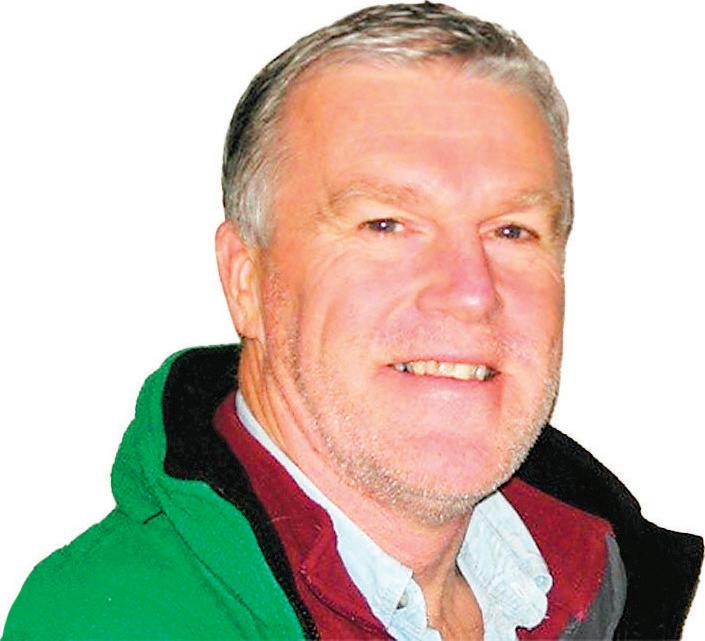
Howitt’s observations of regularly fired and more open ests simiom and s in n pubBill
Australia’s pre-European forests in afar moreopen and less flammable condition than they aretoday.
There are exceptions to this general rule, such as the tall, ash-type eucalypt forests growing on the wettest parts of the southern ranges. They werereportedly just as dense beforeEuropean settlementastheyare today.
Being inherently wet, they werefar less affected by indigenous burning or lightningignited fires.
However,they would periodically dry-out during prolonged droughts and could then burnwith aferocity that would generally kill most trees and stimulate areplacement regrowthevent. Awareofsuch relatively minor exceptions,Australia’s land managers now widely accept that firewas far more prevalent in most of our forested landscapes during pre-European times, and that it was generally of moderate to low intensity because its frequency generally prevented the build-up of heavy fuel loads.
Aft er te n so ft ho us an ds o fy ea rs o f Indigenous occupancy,all but the wettest Australian forests and woodlands had become adapted to regular,relatively low impact fire.In souther nAustralia, the premise of approximating natureby maintaining low fuel loads has, since the 1950s, underpinned organised forestfire management based around fuel reduction burning undertakenduring cooler seasons either side of summer
While these burns canreplicate the low to moderate fuel state to which most forests and their ecology arenaturally adapted, the necessity to controlthem due to neighbouring property and safety concerns makes it nigh-onimpossible to match the full extent of annual pre-European burning.
Despite this, if thereissufficient annually
fuel reduced area, it can lessen the extent and environmental impact of most summer wildfires by both reducing their intensity and making them easier and quicker to control.
In view of this, one would expect support for fuel reduction burning to be high among Australian ecologists, but recent public commentary by some academics suggests otherwise. For several years now, academicsDavid Lindenmayer and PhilZylstra, have strongly advocated the cessation of fuelreductionbur ning inlieuofleaving sou the rn Aust ral ia nf or est su nb ur nt indefinitely.
According to their theory, long unburnt forestswill naturally evolve into alowflammable state, thereby removing the need for fuel reduction burning which they claim to be increasing, rather than mitigating, the bushfirethreat.
Mor er ece ntl y, seni or ec olo gi st Do n Driscoll addedhis voice to the anti-fuel re du ct ion b ur ni ng ch o ru sb as ed o n research showing that previouslybur nt forests suffer worse ecological impacts (compared to long unburnt forests) when subject to major wildfires.
In arecent article on The Conversation website promoting this research, Driscoll noted that: “Clearly, firemanagement and policy needs abig rethink”.
“Alter native approaches to large-scale prescribed burning arerequired.”
Given that Driscoll’s research involved morethan 120 co-contributors, it may be reasonable to conclude that his views on firemanagement arewidespread within the fraternity of ecology academics.
The opposition to fuel reduction burning being led by some of these ecologists, represents an astounding denial of the historical recordofpast fireand how it has shaped
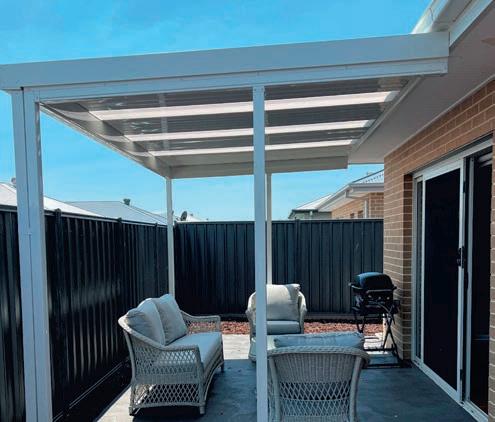
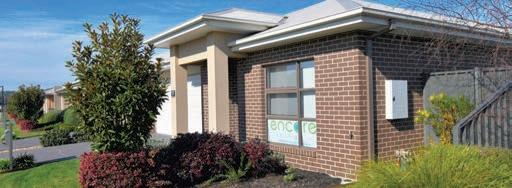


Australia’s forested ecosystems. Further, the published ecological research papers collectively advocating ano-bur ning fire management approach, displays adisturbing lack of practical understanding and experience of both fuel reduction burning and wildfiresuppression, exemplified by misconceptions such as:
Assuming that all forest types are targeted for fuel reduction bur ning when thereare significant areas that arenot targeted, such as, for example, the wet ash-type forests;
An unjustifiable extrapolation of the fuel and firecharacteristics of nonfuelreduced wet forests which rarely bur n, to drier forest types that are naturally adapted to morefrequent fire;
Atendency to imply that thereisno dif ference between the environmental impacts inflicted by unplanned summer bushfires under hot, dry conditions and those of planned low intensity bur ning undertaken in mild autumn or spring conditions;
Condemning fuel reduction bur ning as being responsible for severe biodiversity impacts in the absence of any direct comparison against the biodiversity impacts associated with heavy fuel build-up in long unbur nt forests, and especially after such forests have been subjected to ahot summer wildfire;
Alauding of indigenous cultural bur ning over conventional fuel reduction bur ning without acknowledging that both methods are based on the same principle of using low intensity fireduring cooler times of the year;
Acontext-free faith in small scale Indigenous cultural bur ning (Driscoll refers to it as ‘right-way bur ning’) as asuperior alter native to conventional broadscale fuel reduction bur ning despite it being moreresponsive to the huge scale of Australia’s forests and the bushfirethreat;
Advocacy of ashift to amore streamlined ‘wildfireresponse only’ firemanagement regime based on unproven technology and a demonstrably poor understanding of the requirements for ef fective wildfire suppression, including misconceptions about the respective importance of aerial and ground-based fire-fighting operations on the containment and control of remote area wildfires;
Agreater reliance on theoretical modelling over real world observations in relation to forest fuel build-up and firebehaviour,and;
Alack of acknowledgement of the 60-plus years of applied and academic forest fire research, practical operational experience and observation that underpins conventional fuel reduction bur ning practice and ef fectiveness in mitigating the wildfire threat.
Science is acontest of ideas. Traditionally, the contest played out in the background where conceptual or factual research flaws weredebated and, if necessary,rejectedon the way to shaping ascientific consensus to informsensible government policy.
Nowadays, the publication of scientific research papers abouttrendy environmental causes is often apublic spectacle, pr omoted by its authors and eagerly appropriated by lobby groups to help push eco-activist agendas.
If such papershave conceptual and factualflaws, they aresimply overlooked in the rush to publicise and shapetheir findings into an influential but superficial message; and by the time these errors are unearthed, the minds of the interested public and politicians have already been made-up.
This somewhat exemplifies the course of ecologically-based opposition to fuel reduction burning whereby media outlets -ABC, The Guardian, The Age, and SMH - seemingly in thrall of the academiccredentials of high-profile ecologists, areeager to promote
any of theircommentary, especially if it advances an anti-forestry ideology.
The question of whether these ecologists have the real-life firemanagement expertise to credibly recommend overhauling time-wornland management paradigms and practices, isseeminglynever even considered.
Given the reachand influenceofmass media, this creates astrong prospect of non-experts inordinately shaping political decision-making on how to managethe forest fire threat, whichisscary given fire’s potential to disastrously affect rural Australia and its inhabitants.
In an ideal world, theseecologistsand thei rm edia b ooste rs would be m o re awareofand respectful of the many past Australian bushfireinquiries, including Royal Commissions from as far back as 1939. Consistently these have on the basis of expert advice, reiterated support for fuel reduction burning and recommended far moreofittooptimise its benefit.
This includes the 2009 Victorian Bushfires Royal Commission(following the ‘Black Saturday’disaster) whichrecommended atripling of the state’s annual fuel reduction burning program to five per cent per annum ofthe publicforestestate. This recommendation was inspir ed by the exampleofWesternAustralia’s southern forests which had, until then, avoided large, damaging forest fires for around 50 years by fuel reducing at least six per cent of their area per annum.
Unfortunately for Victoria, the newly elected Andrews Laborgovernment quietly dropped its commitment to morefuel reduction burning in 2014, and the annual rate has hovered for the last decade at just 1.5 per cent of public forest per annum- as it had done prior to Black Saturday. The result of this is evident in morecommon large campaign fires.
Perhapsof greater relevancetothose advocating a‘no-burning’ firemanagement approach, is the American experience where,after afierce political debate,the
US Forest Service adopted the so-called ‘Smoky Bear’ policy in the mid-1920s. Underthispolicy,no ‘lightbur ning’(ie. fuel reduction) was permittedinthe forests, and any wildfires weretobeimmediately extinguished.
This is essenti ally what Austr alia’ s anti-burningecologistsand like-minded eco-activists arecampaigning for However,asthe years passed, it become abundantly clear that theconsequences of the ‘Smoky Bear’ policy was disastrous as wildfires ignitedin the heavy fuels of long-unburnt forests and soongrewinto large, high-intensity conflagrationsthat are exceedingly damaging and virtually impossible to control without the intervention of significant rain.
This remains the case despite the hightech fire-fighting methods now available.
These days thereislittle formal support for the policy of total fireexclusion, and efforts arebeing made throughout the USA to reintroduce fuel reduction bur ning to mimic the former light burning cultureof the Native Americans.
WhileAustralia’s anti-burning ecologists seem to beindenial about the past history of fire-adapted forests and areclearly determined to ignorethe expertise of acentury of public land forest and firemanagement, they could learnmuch from the abject failureofthe ‘no-burn’ fireexclusion proposal that was previously introduced in the USA. If they remain unmoved in theirsupportfor a‘no-burning’ fire management approach, they areeffectively, albeit inadvertently, advocating ecological destruction of Australian forests.
Mark Poynter,aprofessional forester with40years’experience,previously worked in EastGippsland.Heisa Fellow of the Institute of Foresters of Australia (now ForestryAustralia) and his book, ‘Going Green: Forests, fire,and aflawed conservation culture’, waspublished by ConnorCourt in July 2018.



















WATER is aprecious commodity and with the current dry seasonal conditions it’s a critical farmasset to manage and monitor
AgricultureVictoria LivestockIndustry Development Officer,Christopher Bloresaid having the right quality of stock, domestic and commercial water, where you need it, whenyou needitand, in the quantity, you need,iscritical for all farmbusinesses.
“Thereare some simple tools that you can use to monitor water supplies in dams and tanks across your farm,” he said.
“Tools can be as simple as acouple of floats and abit of bar to give you an indication of the water left in your tank, or a DAMDEEP tool.
“A video of how to make aDAMDEEP meas uring tool can be found on the
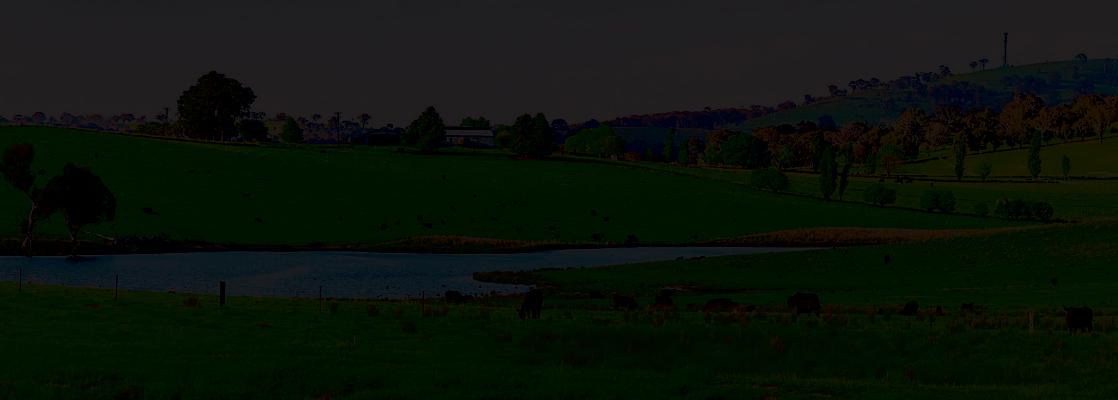
AgricultureVictoria website. “Moreadvancedoptions such as ultrasonic or hydrostatic sensors to measurethe depth of tanks or dams or flow meterstomeasure
water flow rates from pumps and tanks, can be set up to send automaticalerts like when atank or damis low.
“If you arelookingtocompareoptions, visit: agtechfinder.com, as this website has alarge range of available AgTechsolutions forwater monitoring. Just search the term ‘water’ to browse arange of options.
“Chat with your localrural storeabout options and the ongoing support available at alocal level.”
For further infor mation on calculating livestock water needs and how much water you have on farm, refer to the Stock Water Resources page on the Feeding Livestock website, or email Chris at christopher blore@agriculture.vic.gov.au




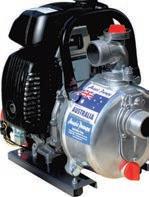
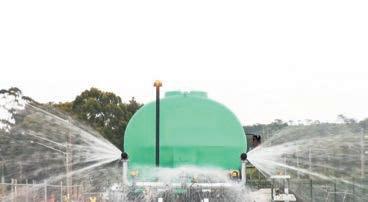


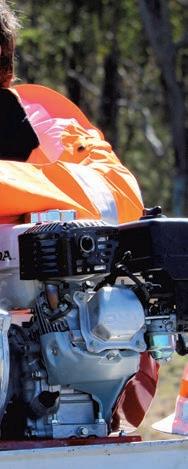
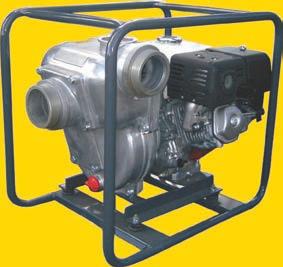
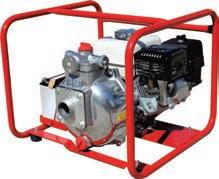
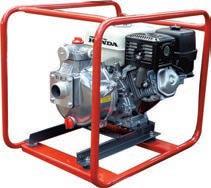
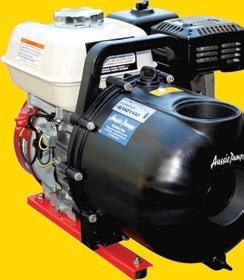







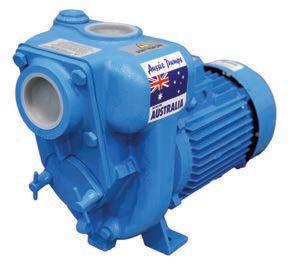









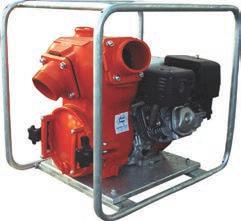














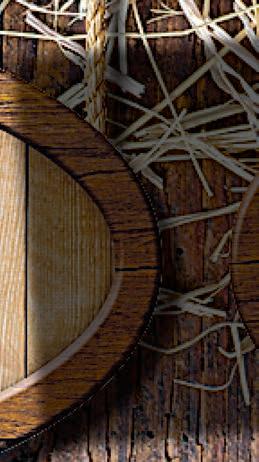
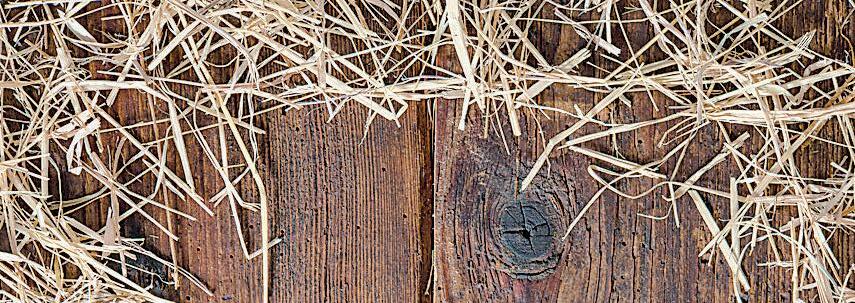
or morethan half acentury, Far mWorld has been a premier regional agricultural field day in Gippsland.
It has beenproviding patrons the opportunity to get up close and talk with experts in all areas of the agricultural field.
Gleaning vital knowledge and advice and, in some cases,tips from those whose experience has been passed from generation to generation.
Far mWorld wouldn’t be Far mWorldwithoutthe animals.
The whole family will enjoy getting up close and personal.
Youcan chat with thecattle breedersin“Cattle Corner” and check out the different breeds, watch the kelpie dogs round up sheep, or learntowalk an alpaca.
For those who love fresh produce and homemade craftsmanship thereare many opportunities to purchasesomegreat productsdirect from the makers and suppliers.
Ahaven for the farming community but also agreat event for locals and urbanites with apassion for the great outdoors Far mWorld 2025 is an event not to be missed.
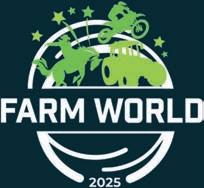

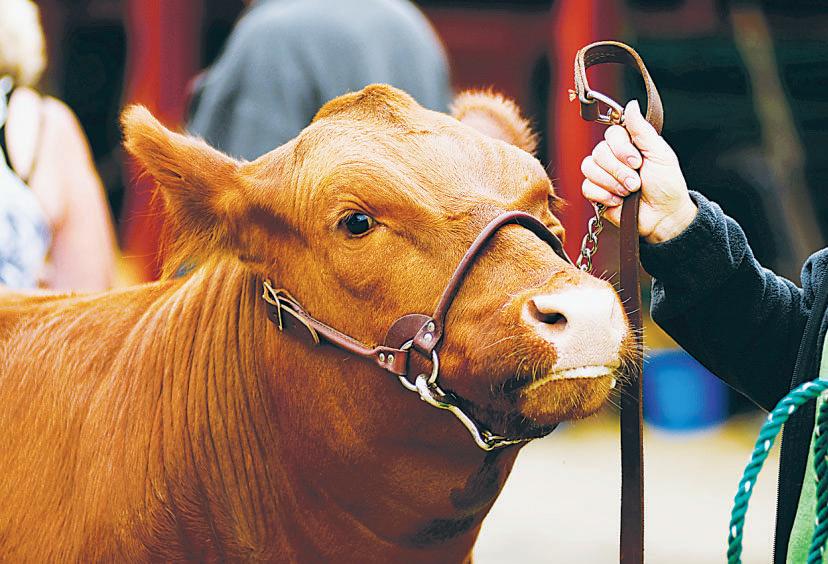
27th to 29th of March 2025 Lardner Park Gippsland

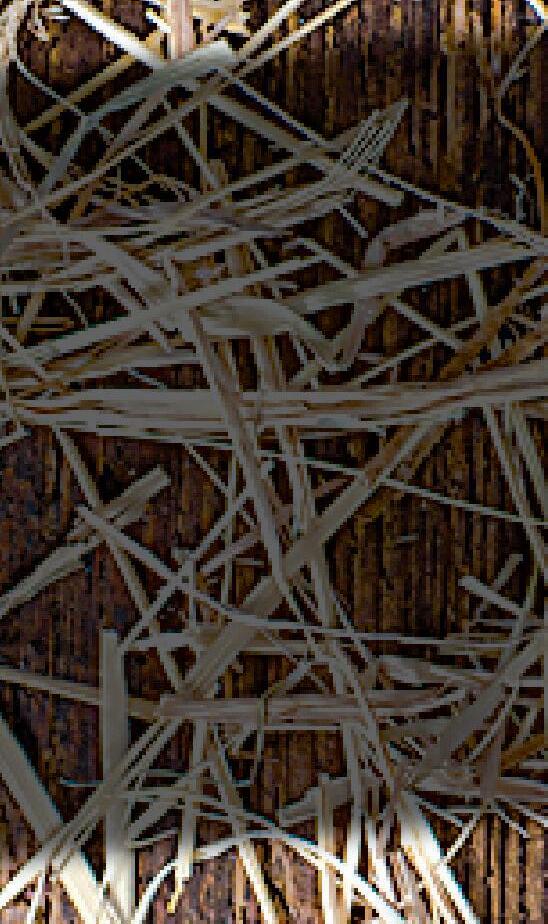


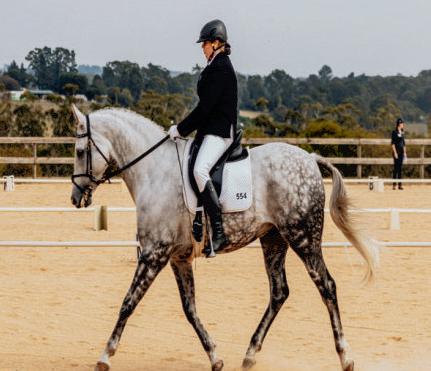
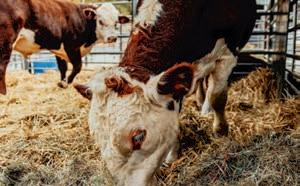
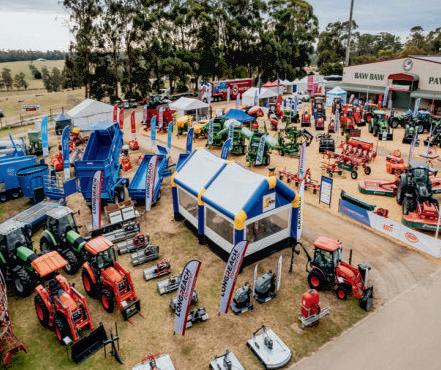
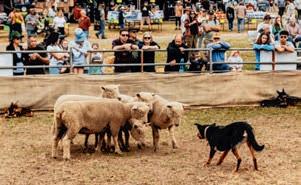





























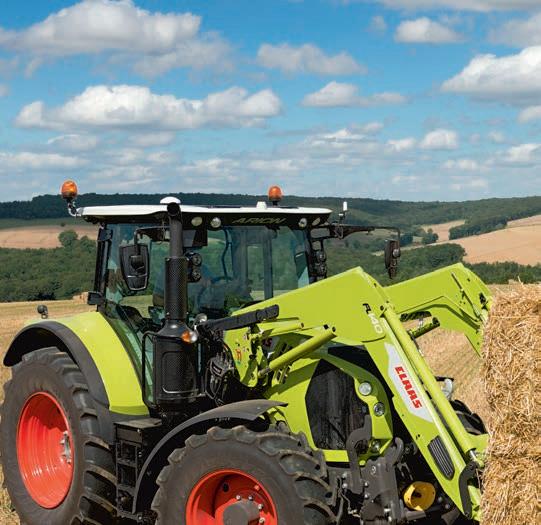
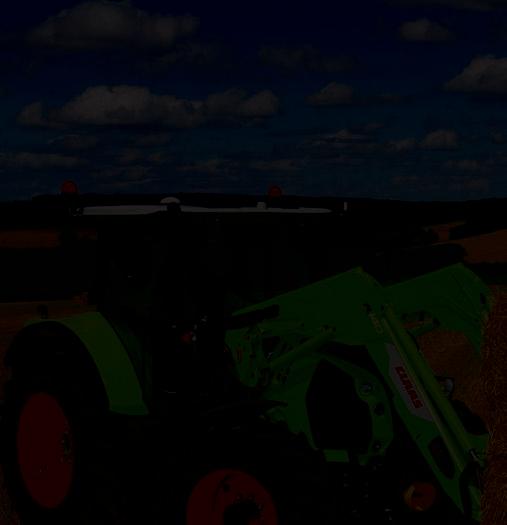
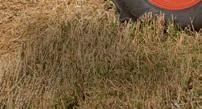
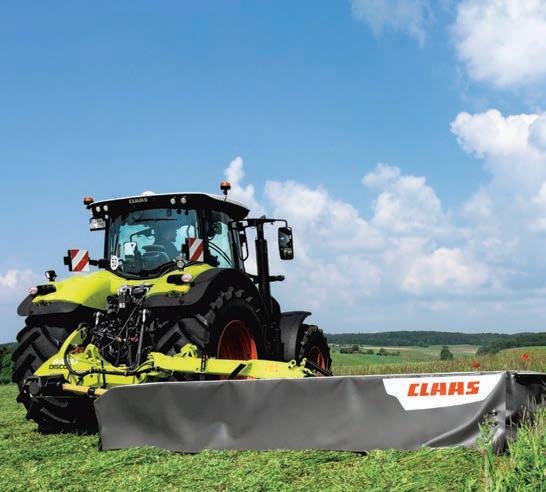
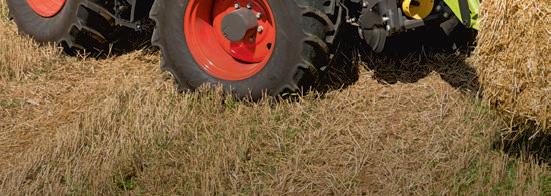
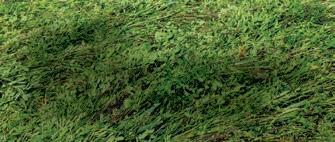
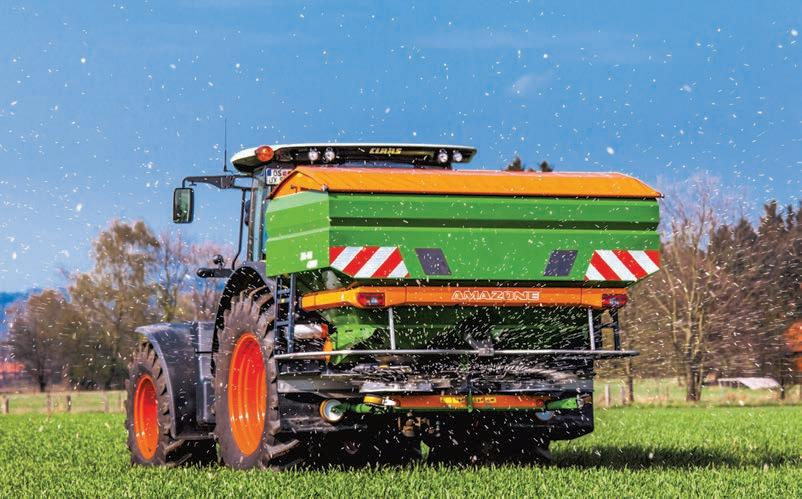


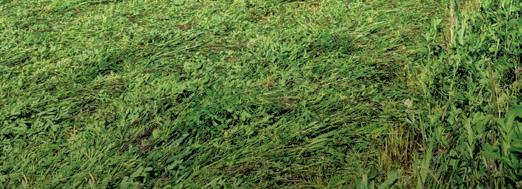
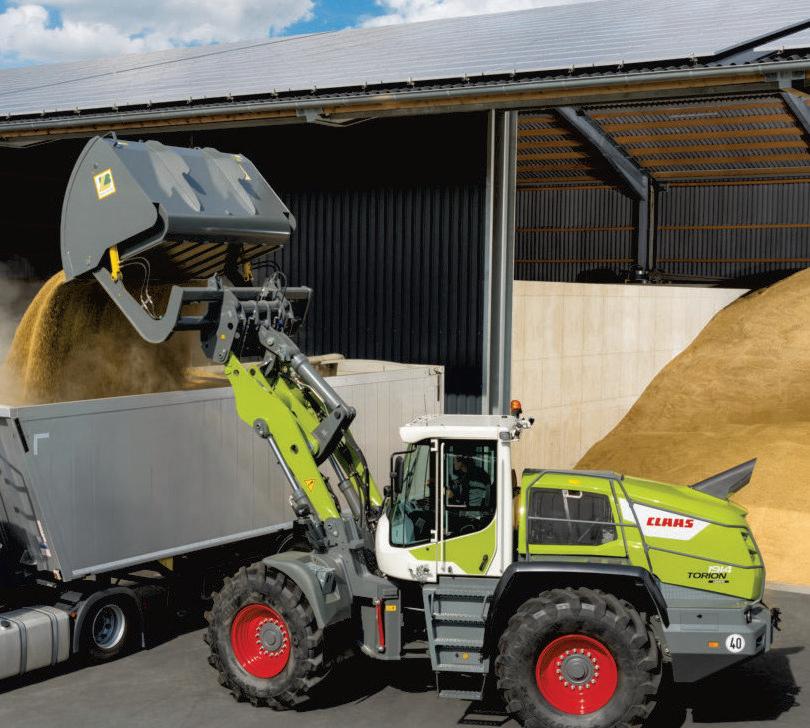
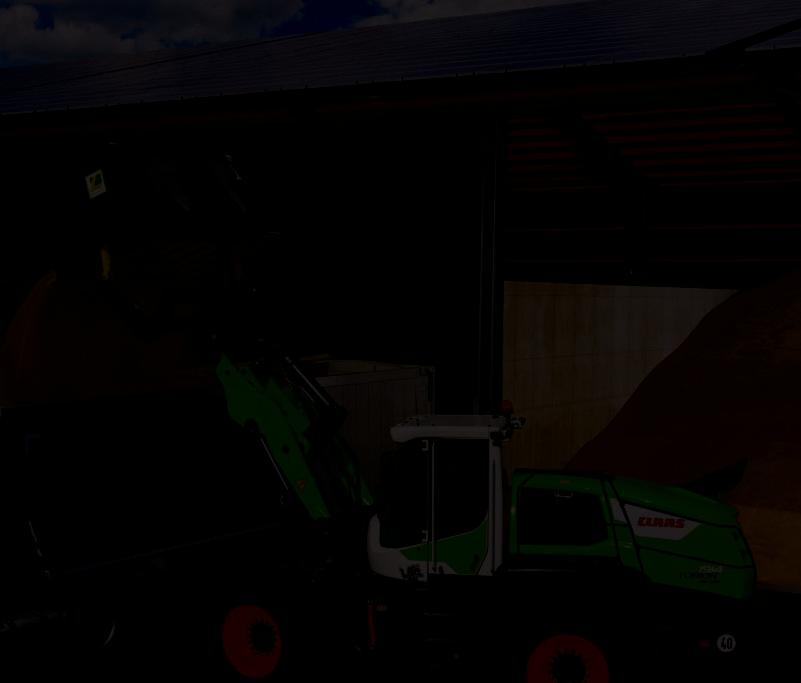
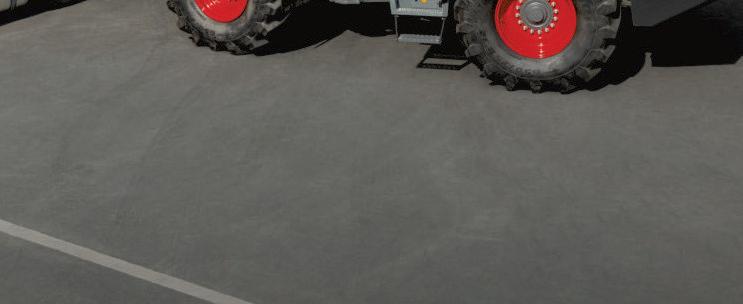

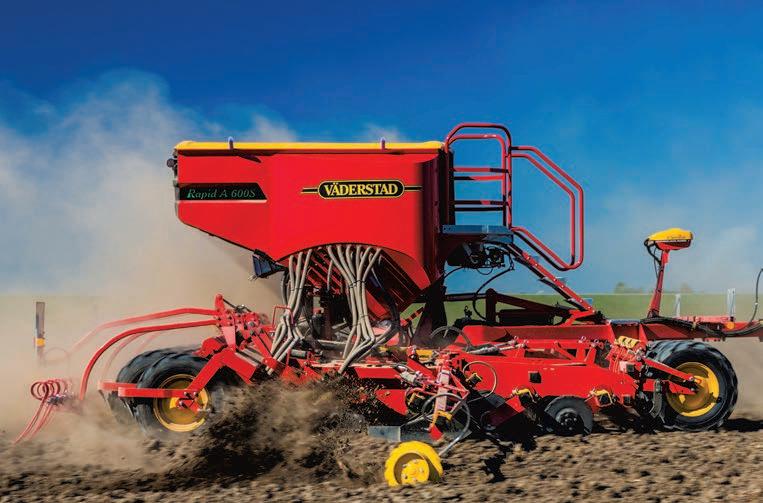










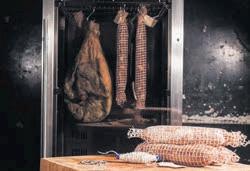





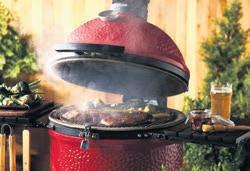















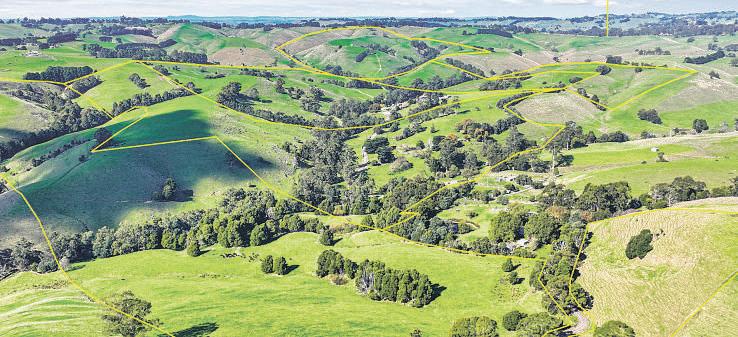





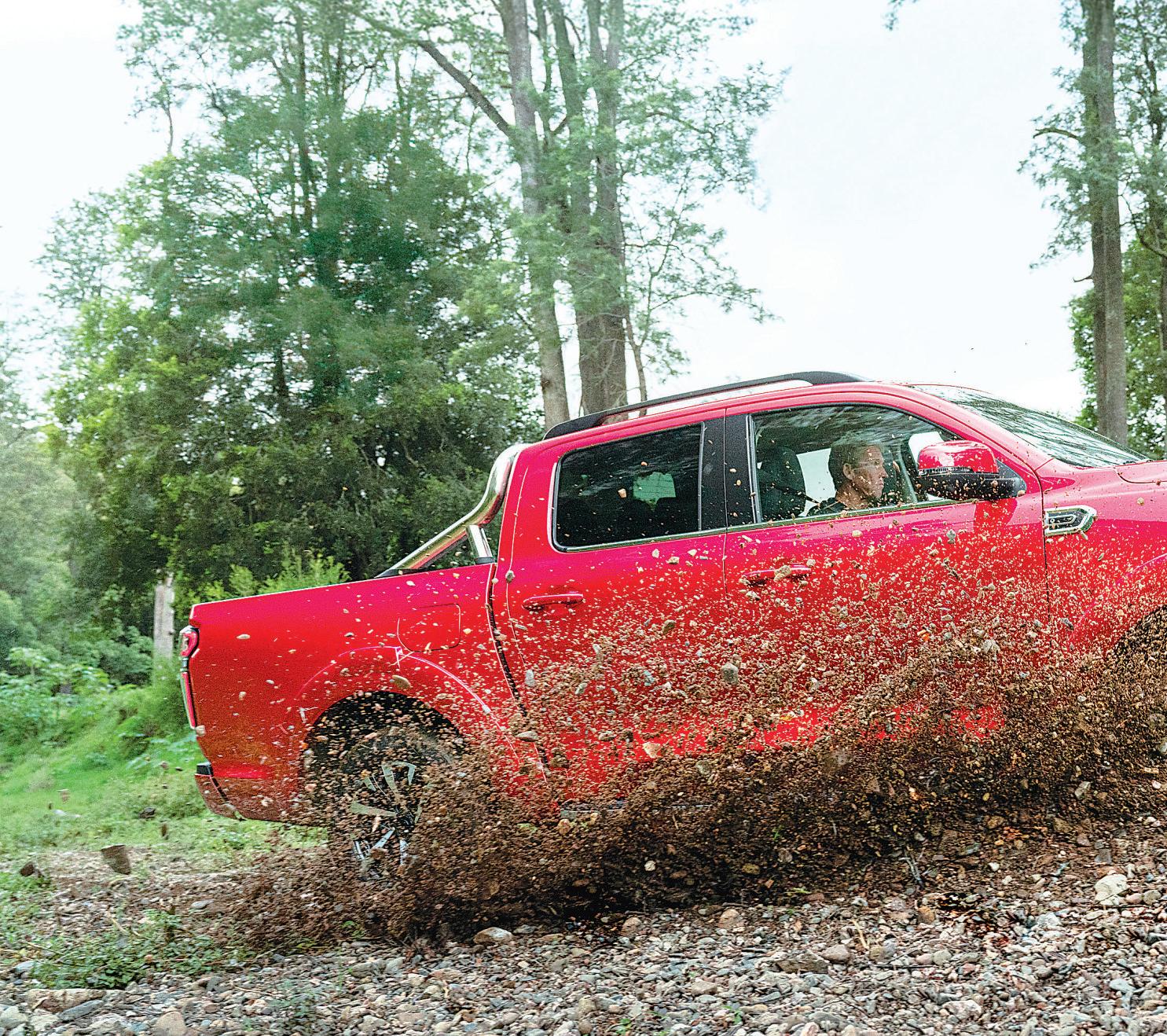
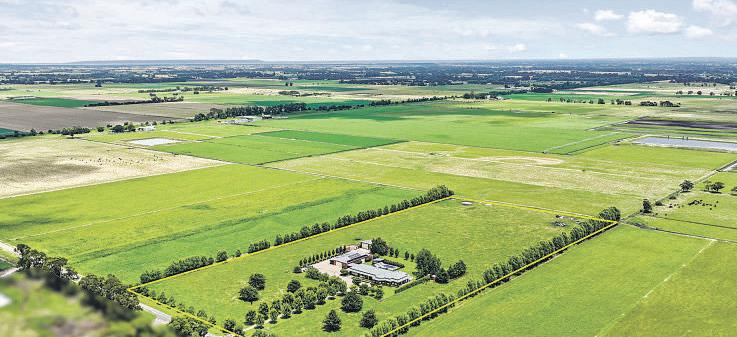





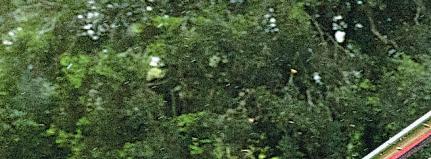


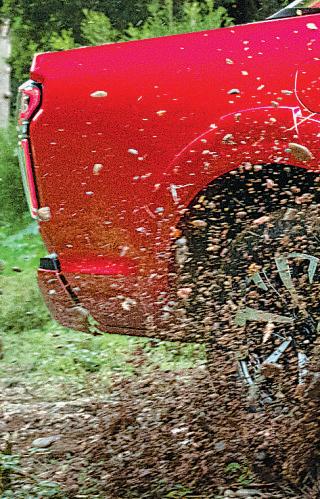


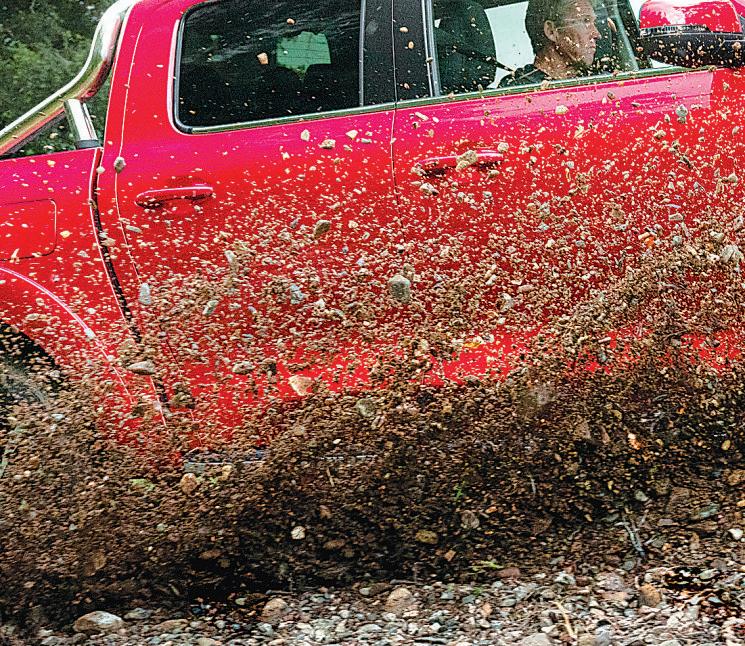



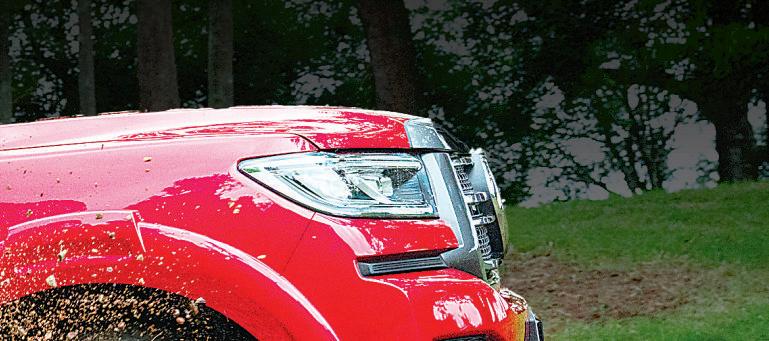


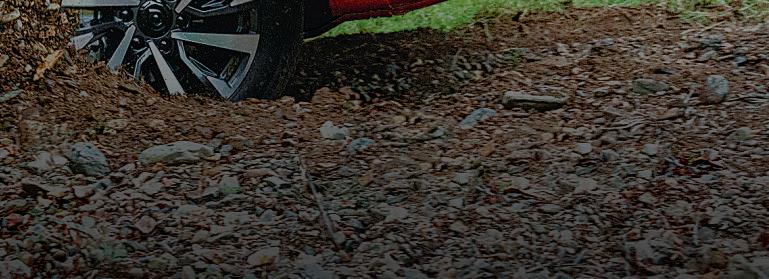











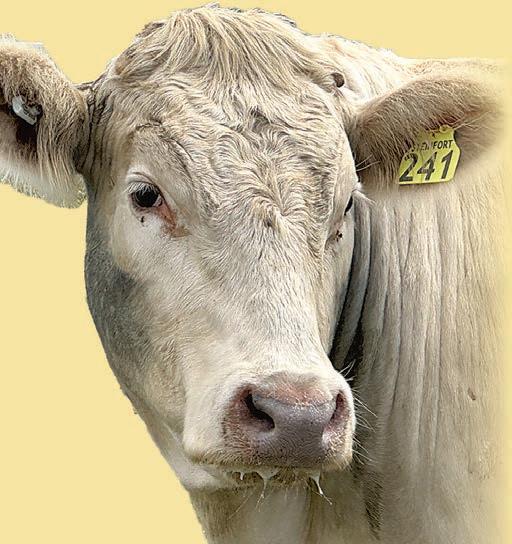
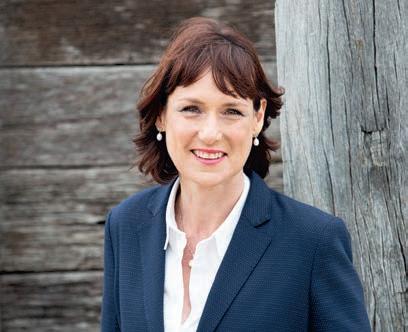






















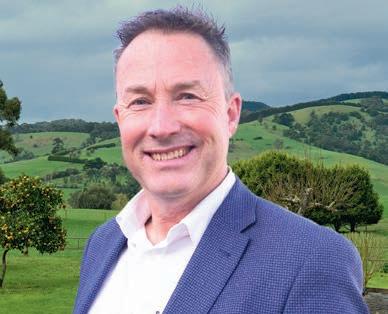



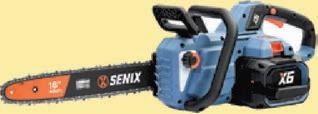





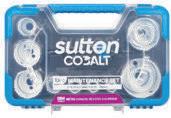
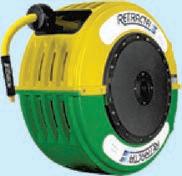

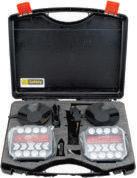

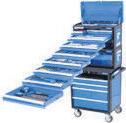

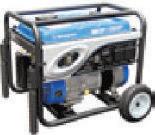






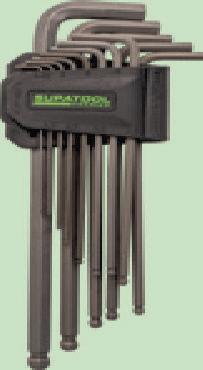



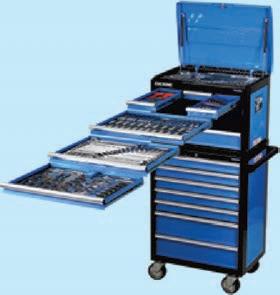



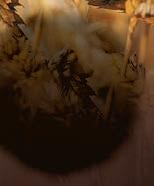







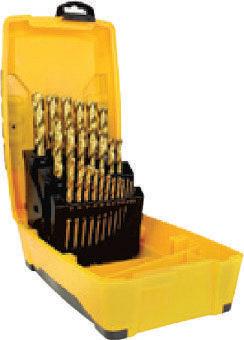


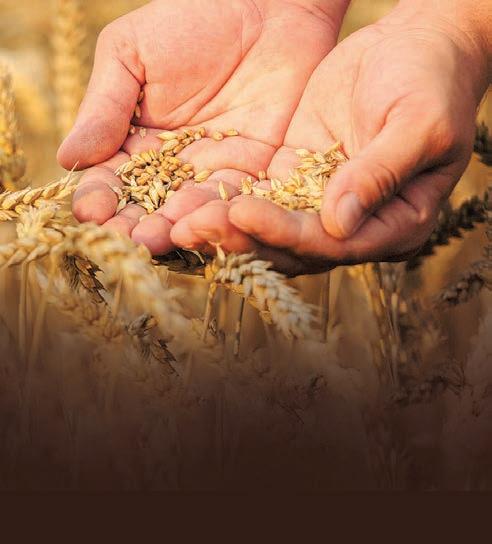

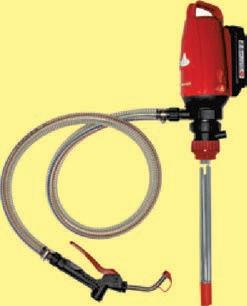

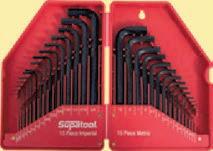






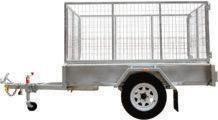


















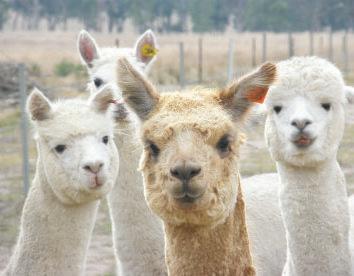






























































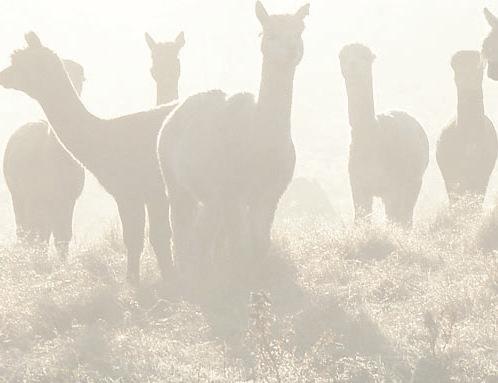
















































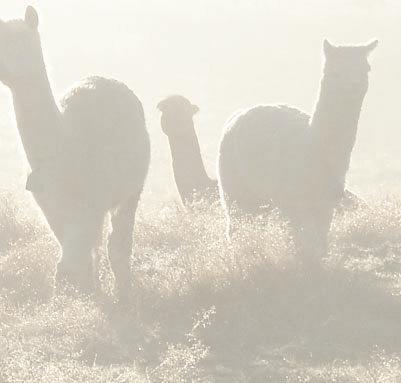






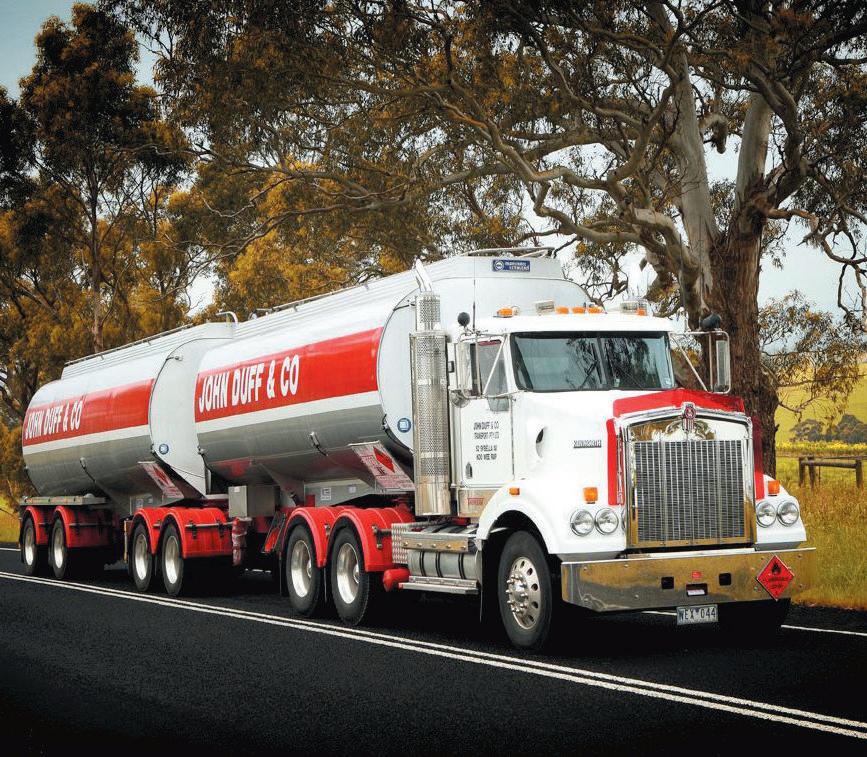














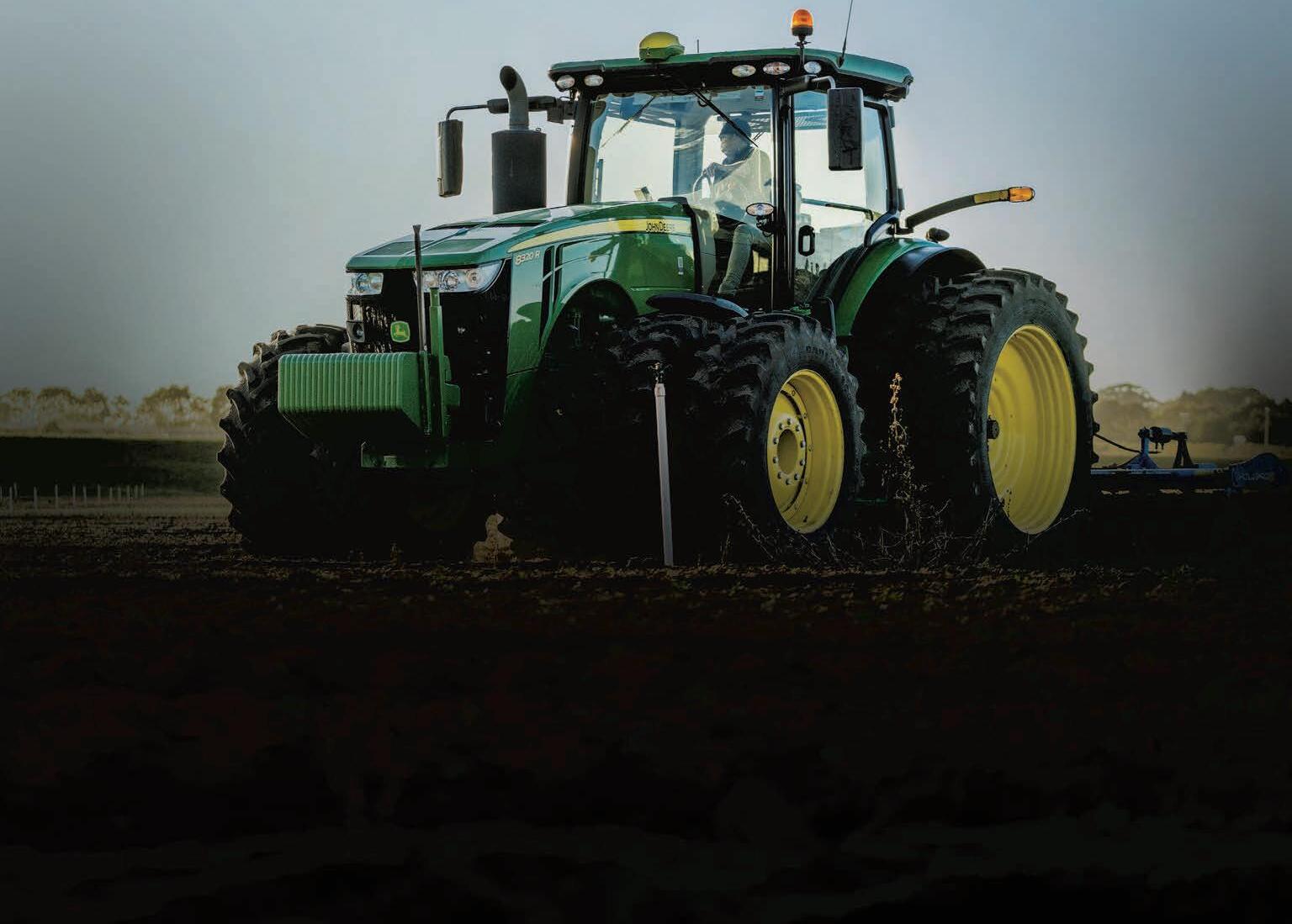


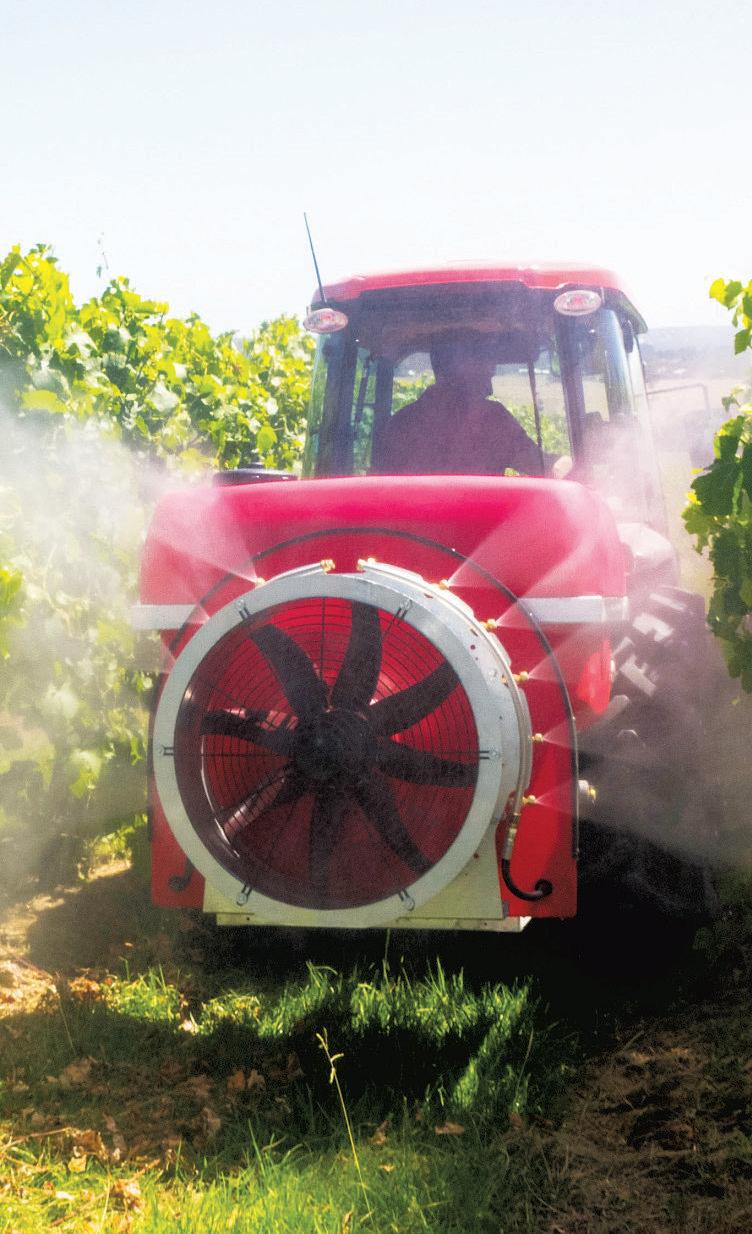
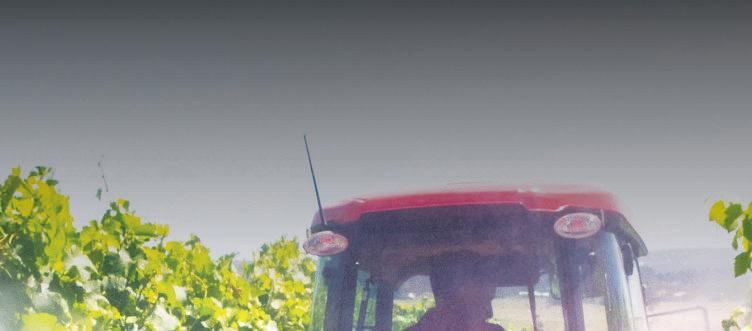







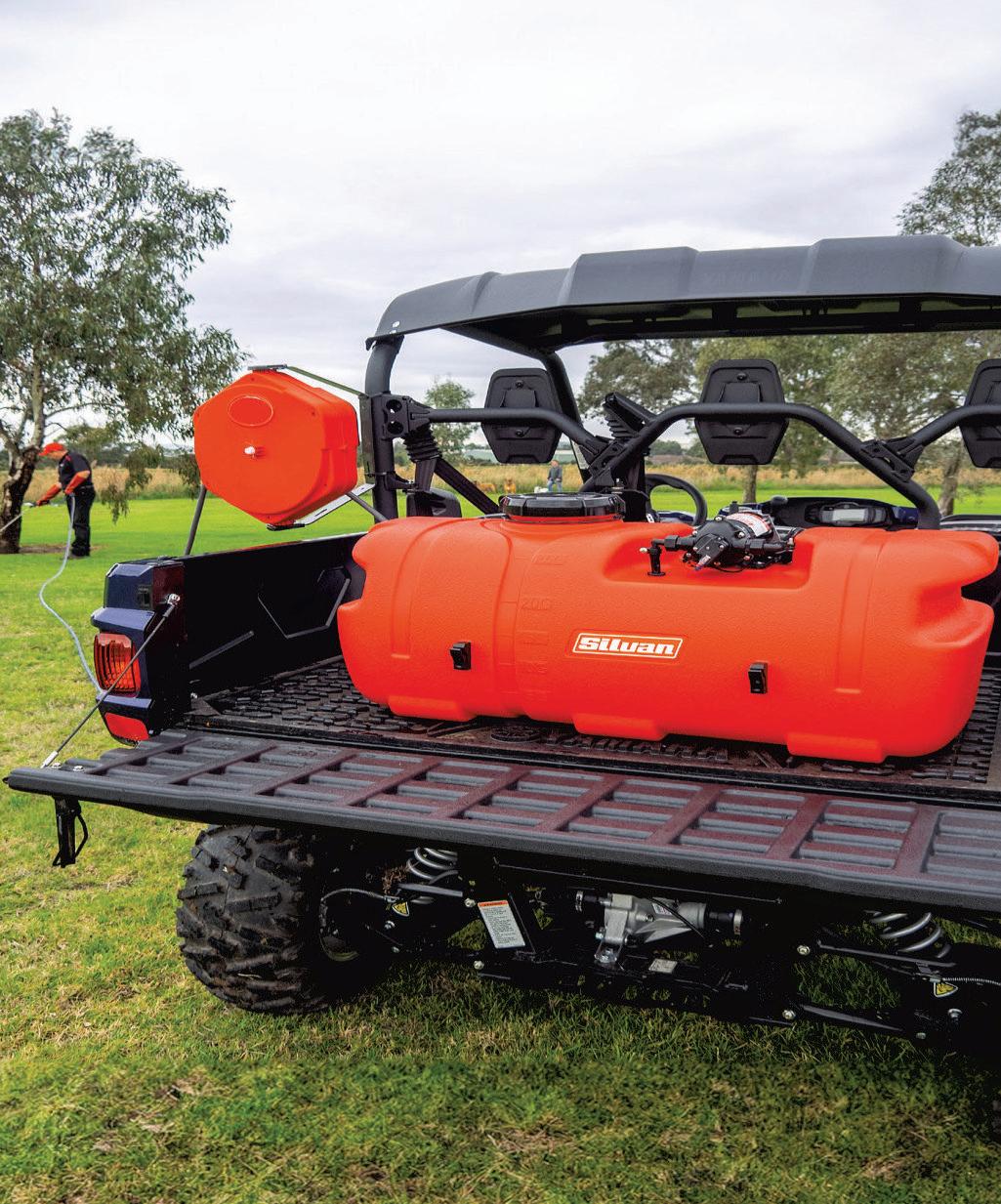
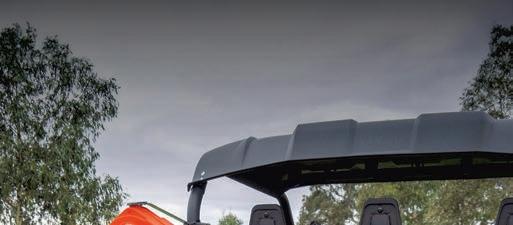

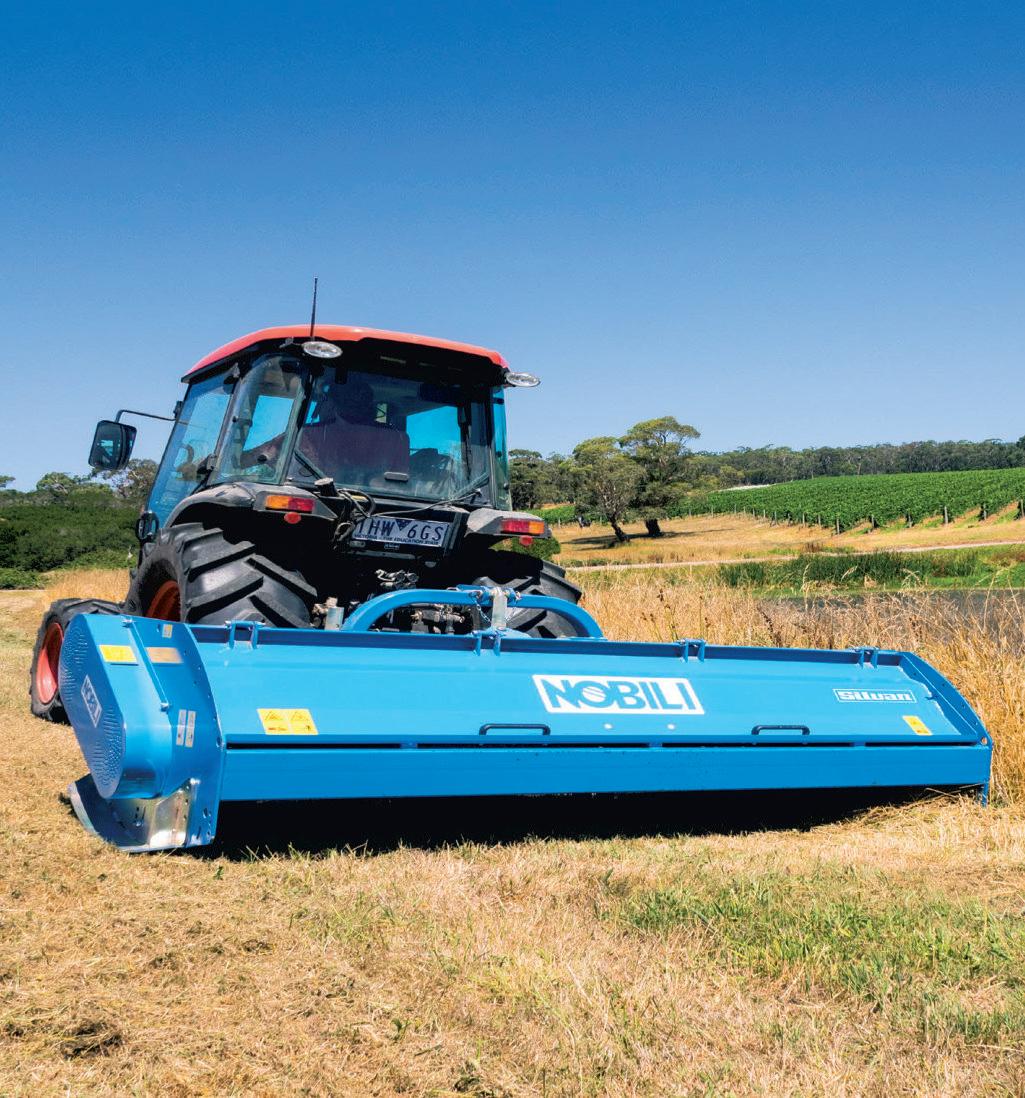

















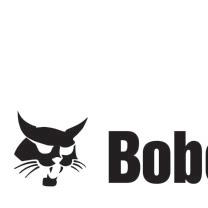














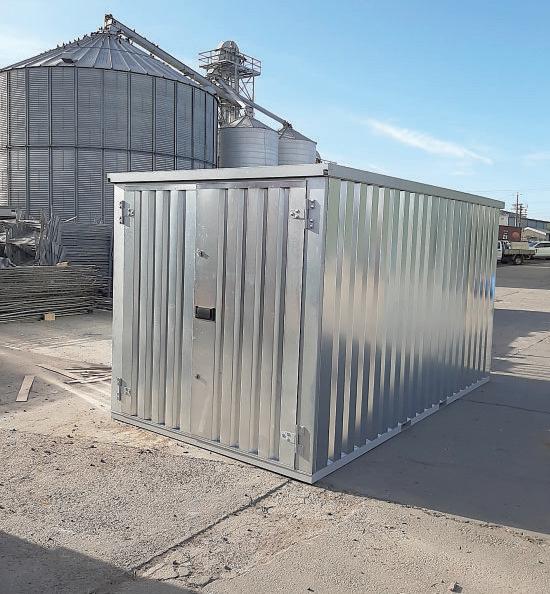
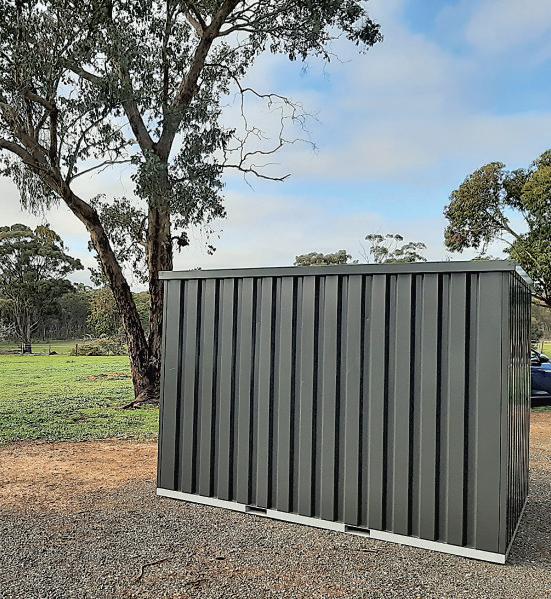
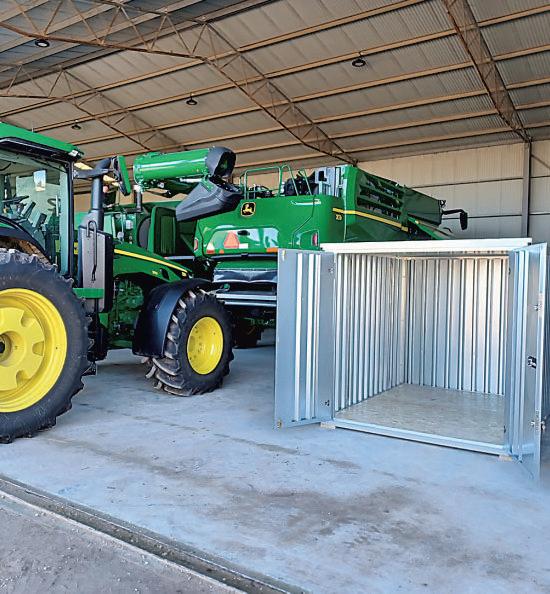
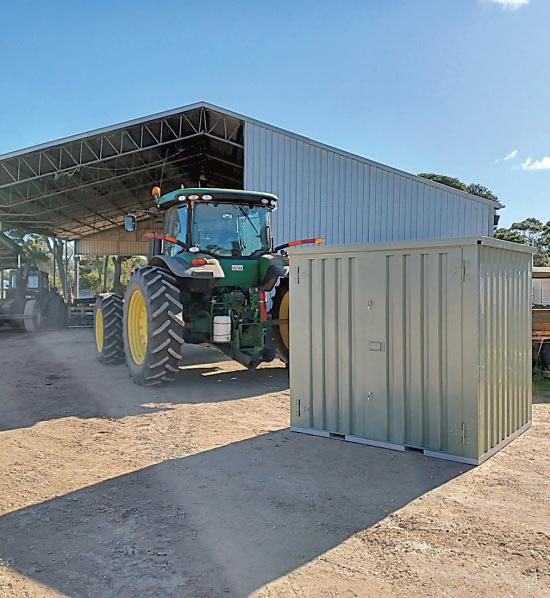


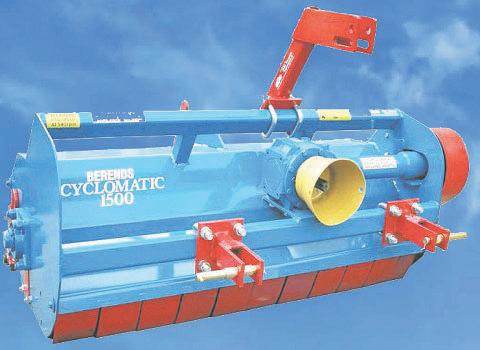

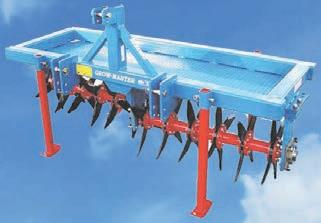



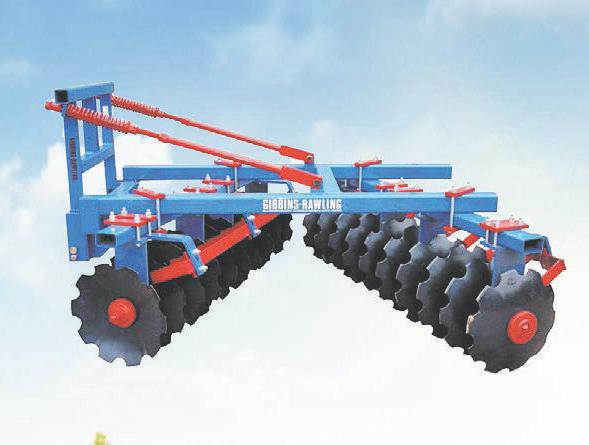

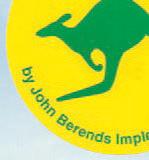
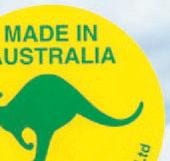

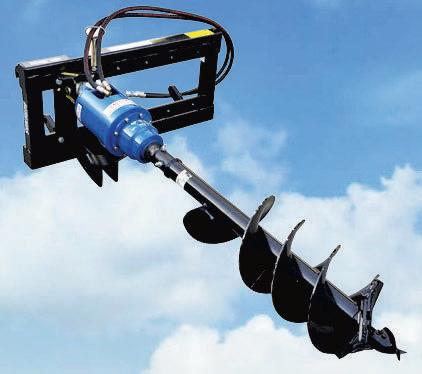
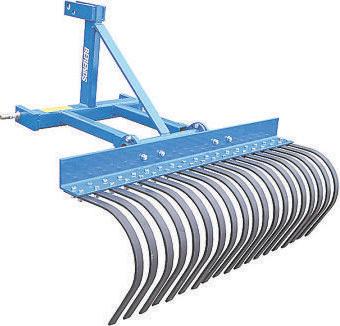
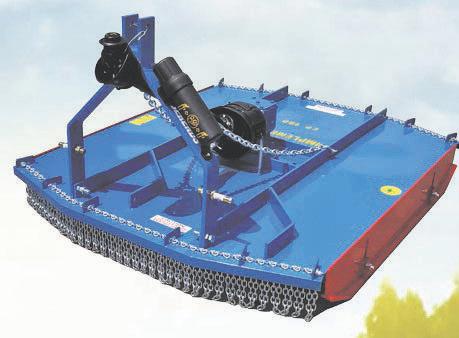




Aim Quick Build Containers are the most versatile storage solution for the farm or in the backyard. Made from Galvanised steel they are strong, sturdy and can be powder coated. They come flat pack or fully assembled and can fit into tight locations or within another structure. Aim QBC’s breathe better than ashipping container and unlike regular garden sheds they come with aStrandwood floor –noneed to pour aconcrete slab. Vermin proof and weatherproof.


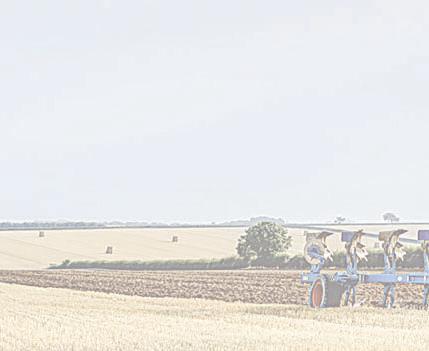

























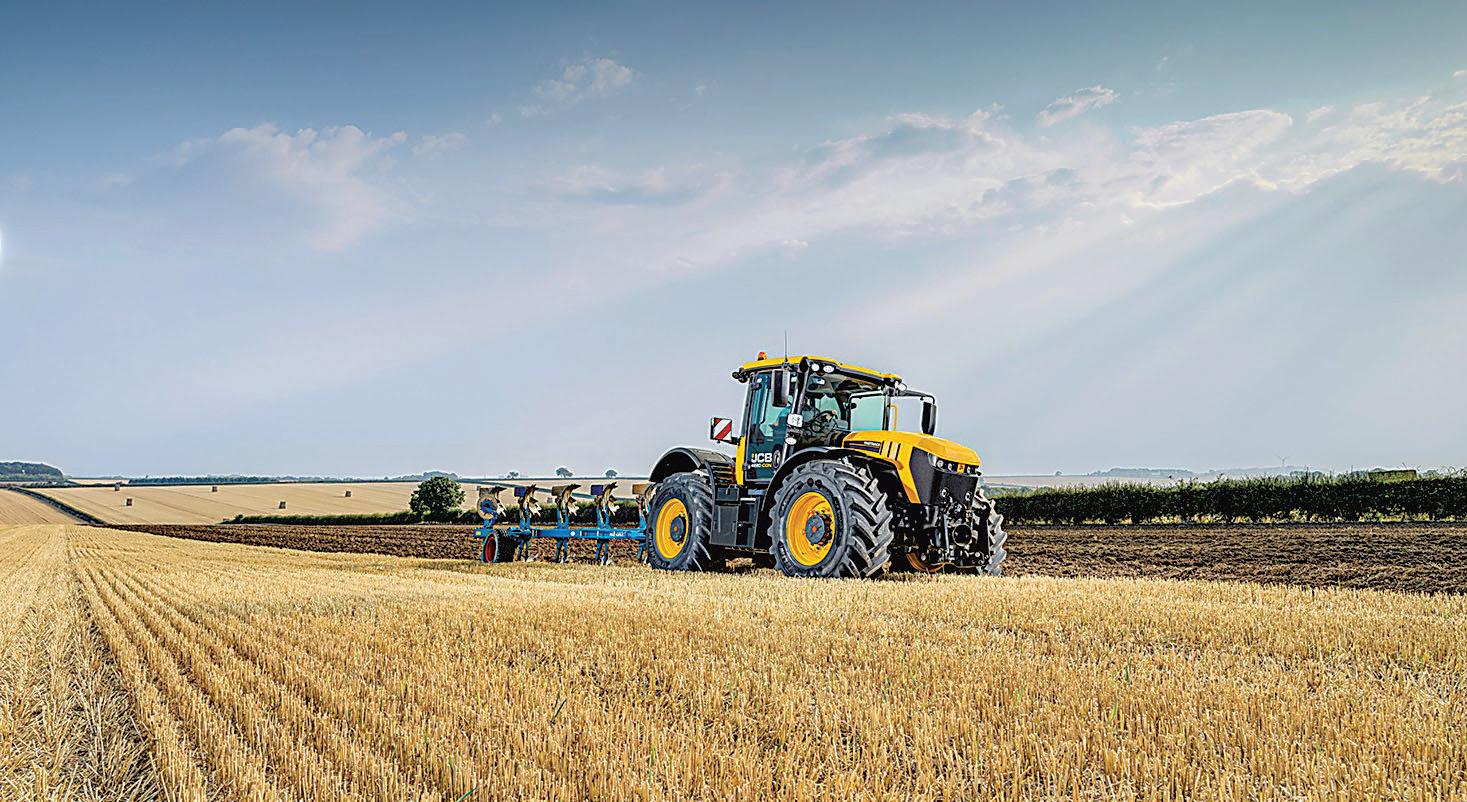




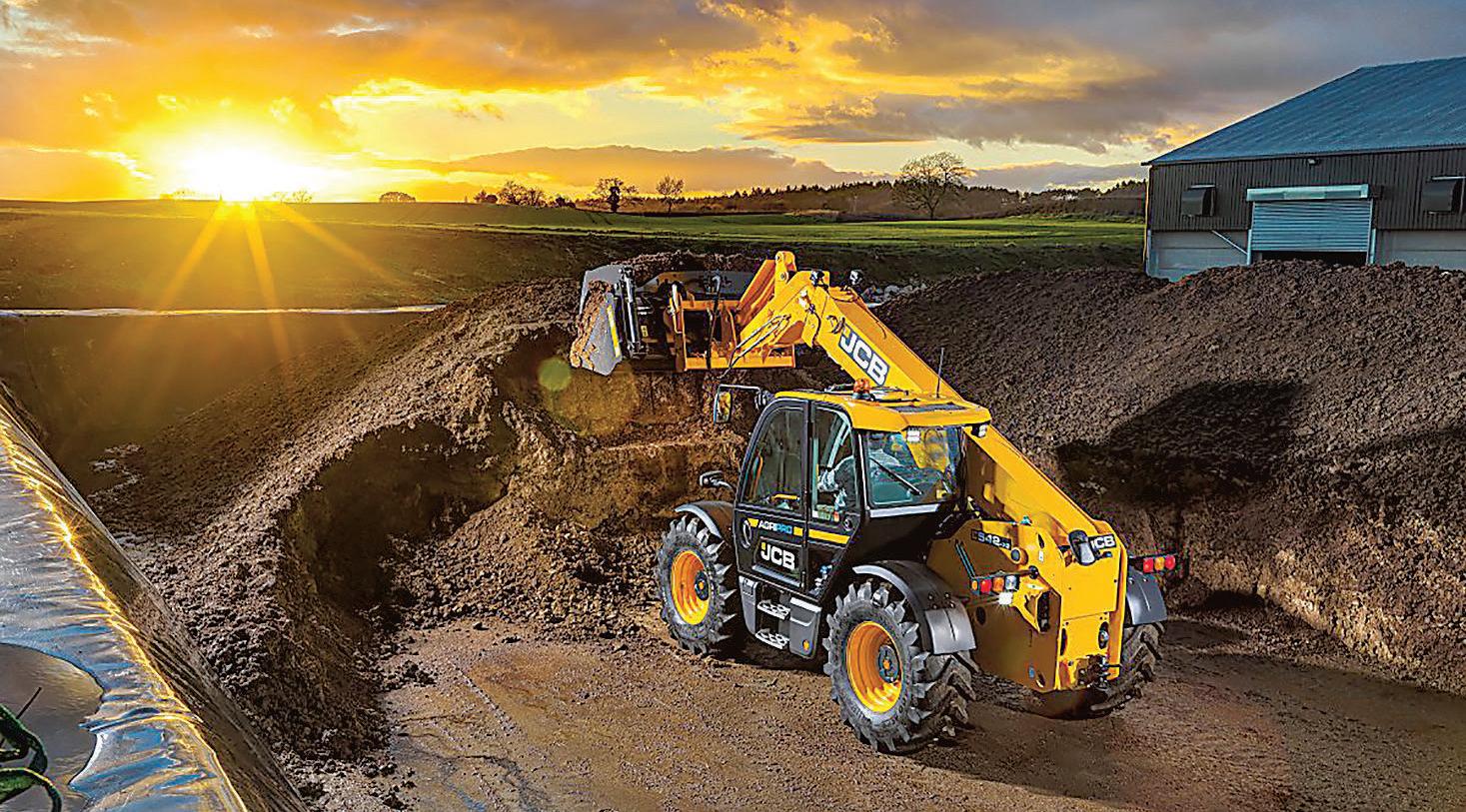

Australian farmers shouldbecongratulated on crop valuespredicted by ABARE
With production values expected to rise 2.2 Billion higher,reflectingthe expected crop production volumes (up by 7percent).andthe improvement of seasonal conditions,relativetolast year from Western Australia, NewSouth Wales and Queenslandwhich supported wintercropproduction
One Australiancompany that appreciates the huge contribution Australian farmersmaketothe economy,is Australian Pump Industries.
Justa little over30yearsold, they’ve already stamped their identity with a great rangeofAustralian designed and built products thatout-do competitors from the USAorEurope.
It’sobviousthatthe threeessentials for successful cropping aresoil, sunand water
Thisisnot newstoany farmer but city folk don’tnecessarily relate to the conditions, challenges and hazardsthat farmershavetodealwith.
Apart from huge costs of dieselfuel, seeds and fertiliser,the weather is a majorfactor.
Australian Pump, recognisethis issue and have come up with arange of liquid fertiliser handlingpumps that can tolerate thecorrosive natureofthese essential ingredients
“Whether it’snitrogen based, phosphate or potassium,our ‘Smart Pumps’ can deal withthe liquid fertiliser and ‘fast fill’ sprayers at amazing rates”, said Aussie Pumps Product Manager, SamLoria.
The pump bodiesand keyinternal components aremanufacturedfrom injection molded 30 percent glass filled polyester.
Thatmaterial, designed originally by NASA has provedtobeimpervious to the effects of corrosive liquid fertilisers.
Aussie’s ‘SmartPumps’ canbeclose coupled to Honda petrol engines, providing agood combinationofperformance and reliability
“Wechoose Honda becauseoftheir terrific support programtheyhave, not justinAustralia,but alsofor theexport market”, said Loria.
“Recoil startisstandard butAussie also offerelectricstart versions”.
The pumps,available in 2” or 3” are self-priming and aresimple to maintain andrepair
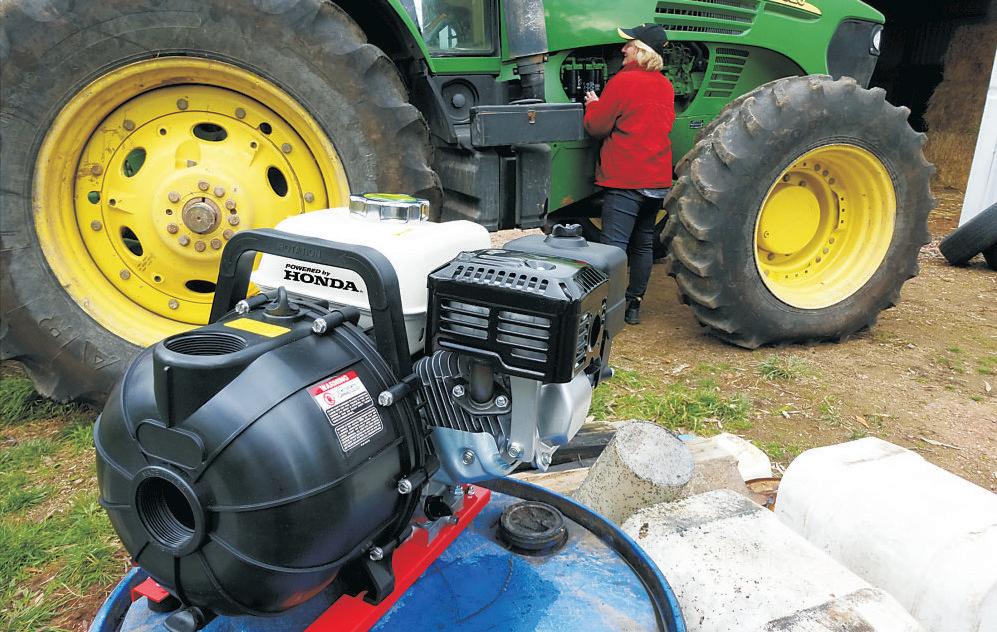
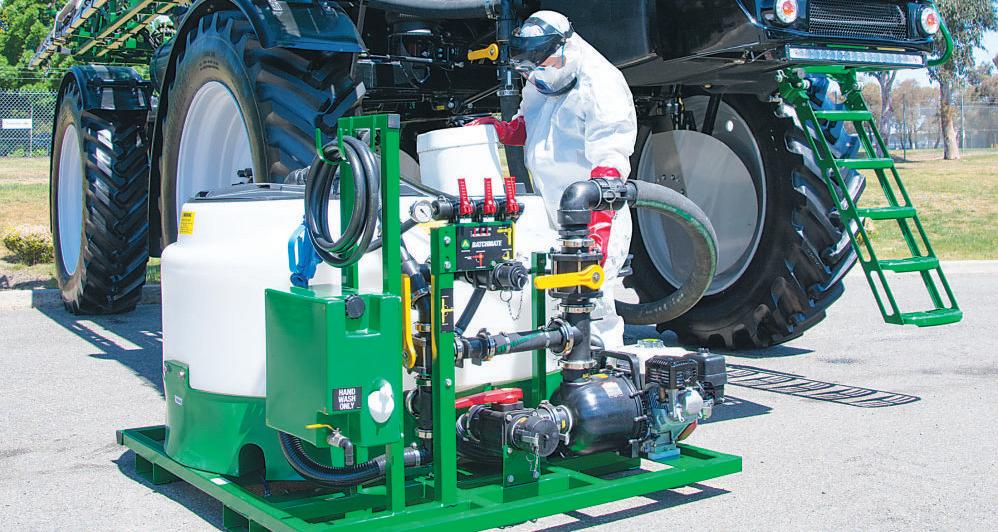
The 2” pump is designed forpumping up to 835 litres perminute.
That translates to being able to filla
5,000 litretankinaround sixminutes
Thebig 3” pump, candeal with bigger flows, up to 1010 lpm!
Thosepumpsare extremely popular forfast filling sprayers,providing afast fill functiontosave time and improve spraying efficiency
The Aussie SmartPumpsare available in twodifferent impeller/voluteconfigurations.
Having therightelastomers forthe job is important.
The mostpopular elastomers forfertiliser areEPDMand Viton
EPDM islessexpensive and handles liquid fertiliserswithease.
Viton elastomers aremoreexpensive but can handle ahugerangeofliquid
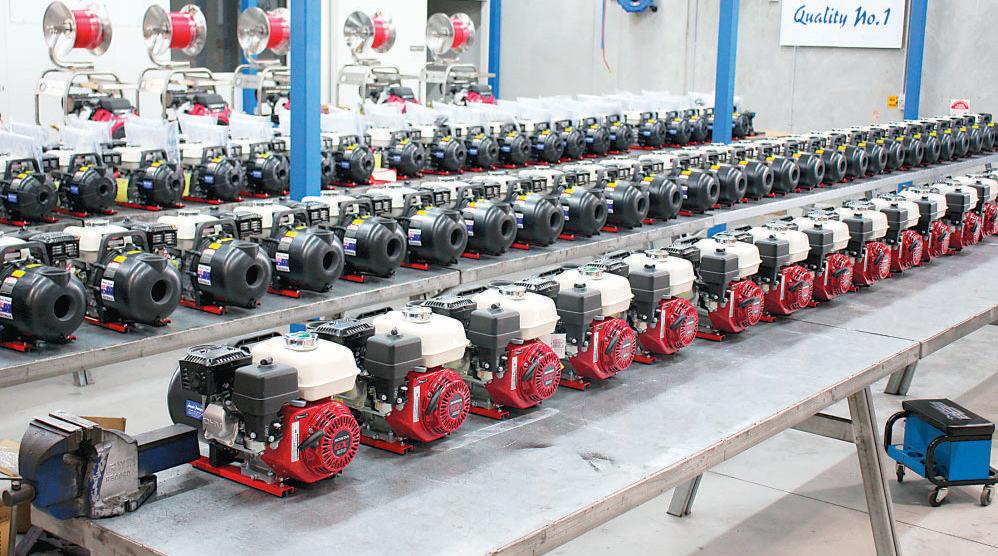
mechanical sealsare available for corrosionand chemicalresistance.
Aussie Pumps engineers areworking on abig 3” pump that willdeliver 1800 lpm. Thenew pumpsare expected to be out beforethe endofthe year.
They knowthereisa requirementfor batching and have worked with specialistsprayercompanieslikeGoldacres on the best solutions for theprocess.
Most use Aussie’s 3” Smart Pumpwith Honda engine or alternatively with hydraulic motor drive
“Theexisting 3” pumpwith Honda 6.5hp GX200 engine is perfectlymatched and produces greatperformance.
Thenew pump willbeeven better”, he said.
Australian Pump understand the essential nature of agriculture
Overlookedbymostcity people, the value of Australia’sagriculture hasthe potentialto generate as muchincome for this countryas Australia’s mining results.
“The problem iswater security”, said Loria.
Legendaryprospector,journalistand light horseman, IonIdriess, wrote in 1956, afterseeing what was called the “Great Floods”
including dieselfuel, seawater, even acidsofvarious types
Athird option, Buna N, is suitable for dieselfuel, seawater, cooking oils and evengearoil
Therangeofcombinations of components,high pressurelow pressure impeller and volute, coupled to the elastomerofchoice,makesfor an exceptionallyversatile product range.
“Wehaveevenheard of farmers using them as firefighting pumpsbecause in thehighpressureversion, they can deliver a37m head, which amounts to around 52 psi pressure.
It maynot have the huge amount of ‘throw’astraditional firepumpsbut will push ahuge amount of water at the fire”, said Loria.
Aussie Smart Pumps arealso available in polypropylene.
Thatisa bigsuccess forAdBlue pumping and isavailable onlyinthe 2” x 2” configuration.
In somecases Halar siliconised graphite
This was whenwehad an inland sea that floodedtowns from Menindeetothe Murray.
Even in Mannum,floodwaters swirled through the main street.
Here’shis insightful words; “Pause,and if onlyfor amoment,tryto imaginethe unimaginablevolume of freshwater that hasrushedawaytosea during these last few yearsalone.
Then,imagine the broken hearts that would notbreak,the homes we would save,thejobs we shouldkeep,the individual andnational wealthweshould retain.
Imaginewhatwecoulddowiththat waterindroughttimes.
Flood and irrigationcontrol of our river systems,the conservation,controland use of floodwaters.
These arefar more important to Australia than the making of atomicbombs!”
Idriess knewwhathewas talking about. Forfurther informationor“IonIdriess comments on thefloods” is readilyavailable from contacting AustralianPump Industriesat aussiepumps.com.au
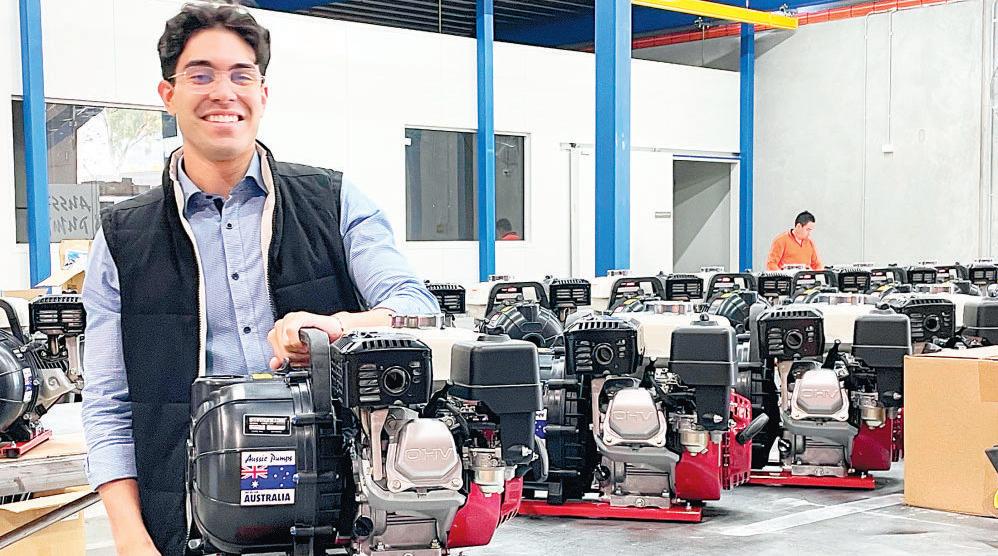
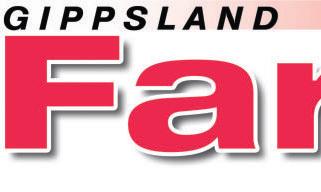



ACROSS
1 Fugitive (7)
5 Fierce wind (7) 9 Creator’sprotec tion (9)
10 Shoals(5) 11 Verse(6)
12 Advant ageously (8)
14 Instrumentalwork(6)
15 Area on the bod yconsis ting of pelvis and upper thigh bones(4)
19 Merit (4)
20 Surpas s(6)
24 Pseudonyms(3-5)
25 Very smallpoolofrainwater(6)
27 Woodyplant s(5)
28 Everlasting(9)
29 St ableman( 7) 30 Show( 7)








Today’sAim:
19 words: Good
28 word s: Very good
38 word s: Excellent
Using thenine letters in the grid, how manywords of four letters or morecan you list? The centreletter must be included and eachletter may only be used once. No colloquialorforeign words. No capitalised nouns, apostrophes or plural nouns endingin“s”. R E N U O E T C N
ruce,,trounce,ttour ureen,,tuner,tune,ttrue turn, unto
enure, t,eruc euron,,neuro eutron,,neuter,nneurone turne,noc noun, unce,eno,recount,rreut,oerut,oounce enure,tunt,rune,rteou,rrout
e,ur,cetru,crtou,cerntou,ccount e,ut,crtcu r,tecu ecru, ,ENCOUNTER







region. Their commitment to delivering high-qualitycontent and relevant news has created areceptive and informed readership, giving our advertising efforts even more impact
Paula, our advertising consultant and remarkable member of The Gippsland Farmer team, has been an invaluable asset in our advertising journey. Paula’s exceptional professionalism, attention to detail, and regular reminders about advertisingdeadlines have ensured all our promotional campaigns run seamlessly.Her dedication to providing a personalised experience and exceptional customer service has made everyinteraction with The Gippsland Farmer an absolute pleasure










Fo ula(






City and por tinItaly (6) 3 Studio(8) 4 Physic al and ment al discipline(4)
(6)
you




Moreover,I am grateful for Paula’s consideration of TTMI for special advertising features and promotions.She hasgoneabove and beyond to provide us with opportunities to highlight our business and offerings in unique and creative ways. Her keen understanding of our industry and unwavering support havetruly made a difference in the visibilityand success of our advertising efforts.

p p with Farmer,confident the that our needs areinthe best of
Iwould highly recommend The Gippsland Farmer newspaper to any business in the agricultural sector seeking effective advertising solutions. The newspaper’s wide readership, informative content ,and exceptional customer caremakeitanideal platform to connect with the farming communitythroughout Gippsland. We look forwardtoacontinued partnership The Gippsland ,c in knowledge our advertising ar hands.






















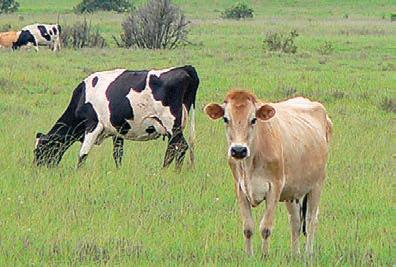
In the ever-evolving world of agriculture, efficient pasture management is critical for farmers to maintain healthy livestock, optimise forageproduction, and ensure sustainable land use.
Worker Bee Drones is at theforefront of innovation, offering cutting-edge solutions that empower farmers to manage their pastures more effectively while reducing chemical usage, minimising environmental impact, and addressing challenges like soil compaction caused by heavy machinery.
Here’s how they can help:
Traditional methodsofspraying pastures, such as ground-based equipment or manned aircraft, oftenresult in uneven chemical distribution, leading to over-application in some areas and under-application in others.
Worker Bee spray drones utilise advanced RTK-GPS and sensor technology to deliver precise, targeted applications of fertilisers and herbicides. This precision ensures that every inch of pasture receives the right amount of treatment, promoting uniformgrowth and reducing the risk of weed infestations or nutrient deficiencies.
By optimising pasture health, farmers can achieve higher forage yields,which directly benefits livestock nutrition and productivity.
One of the most significant advantages of spray drones is their ability to reduce chemical usage.
Through visible light and multispectral imaging, combined with expert human analysis, they can help farmers identify specific areas of apasturethat require treatment,suchaspatches of invasive weeds or zones with nutrient deficiencies.
Instead of blanket-spraying entire fields, farmers can target only the
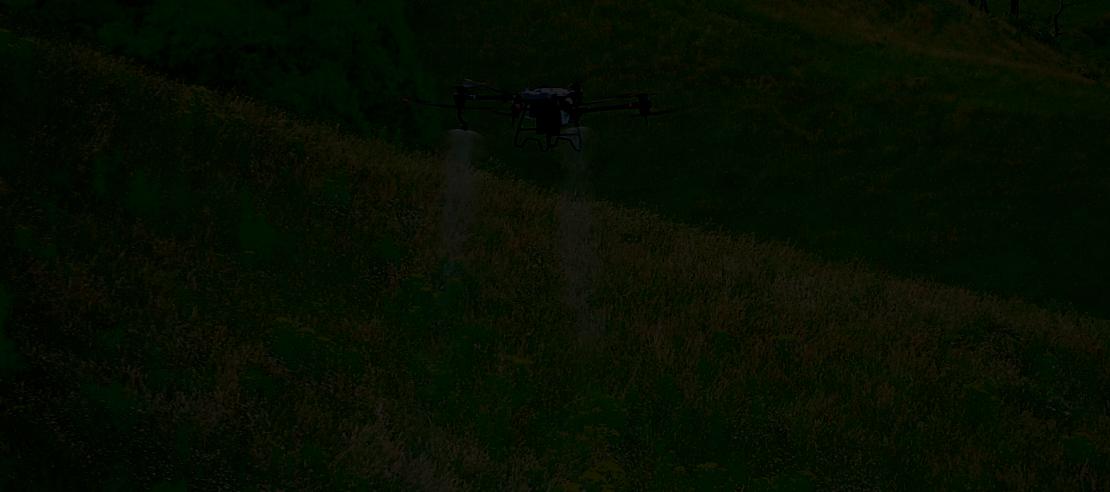
affected areas, significantly reducing the volume of chemicals used.
This not only lowers input costs but also minimises the environmental impact, preserving soil health and reducing the risk of chemical runoff into nearby water sources.
Heavy machinery, such as tractors and ground-based sprayers, can cause soil compaction, which negatively impacts soil structure, reduces water infiltration, and hinders root growth.
Drones eliminate the need for heavy equipment in the field, flying above the pasture and applying treatments without ever touching the ground.
This approach preserves soil health, ensuring that pastures remain fertile and productive for years to come.
By reducing soil compaction,farmers can also improve forage growth and extend the longevity of their land.
Managing large pastures can be labour intensive and time consuming. Spray drones streamline theprocess, covering vast areas quickly and efficiently.
Asingle drone can spray up to 10 hectares per hour,depending on the terrain and conditions,saving farmers
countless hours compared to manual or ground-based methods.
This efficiency allows farmers to focus on other critical aspects of their operations, such as livestock management or crop production, whileensuring their pastures receive timely andeffective care
By reducing chemical usage, minimising soil compaction, and improving application accuracy, spray drones contribute to more sustainable farming practices.
Farmers can achievebetter pasture management with fewer resources, lowering their operational costsand environmental footprint.
Additionally, healthier pastures mean improved livestockgrazing conditions, which can lead to higher milk yields, better meat quality, and overall increased farmprofitability.
Worker Bee Drones understand that every farmisunique, which is why they offer customisable drone solutions tailored to specific needs.
Whether you’re managing asmall family farmora large commercial operation, their team will work closely with you to develop aplanthat
Good pasturemanagement should be both proactive (maintaining soil fertility) and reactive (managing pests, weeds and seeds when they are af fecting productivity). It should aim to maximise the productivity and persistence of the pasture while avoiding or delaying pasturerundown.
In this featureyou will find advice and solutions from experts in all areas of PastureManagement. If you need any more information…give them a call. They will be morethan happy to help you.
maximises efficiency and sustainability. From variable rate applications to real-time monitoring, Worker Bee Drones providethe flexibility and precision modernfarmers need.
At WorkerBee Drones, there agricultural spray and spread services revolutionise pasture management by combining precision technology with sustainable practices.
By helping farmers reduce chemical usage, save time, improve pasture health, and minimise soil compaction, they are not only supporting your bottom line but also contributing to amore sustainable future for agriculture.
Let Worker BeeDrones help youtake yourpasture managementtothe next level.
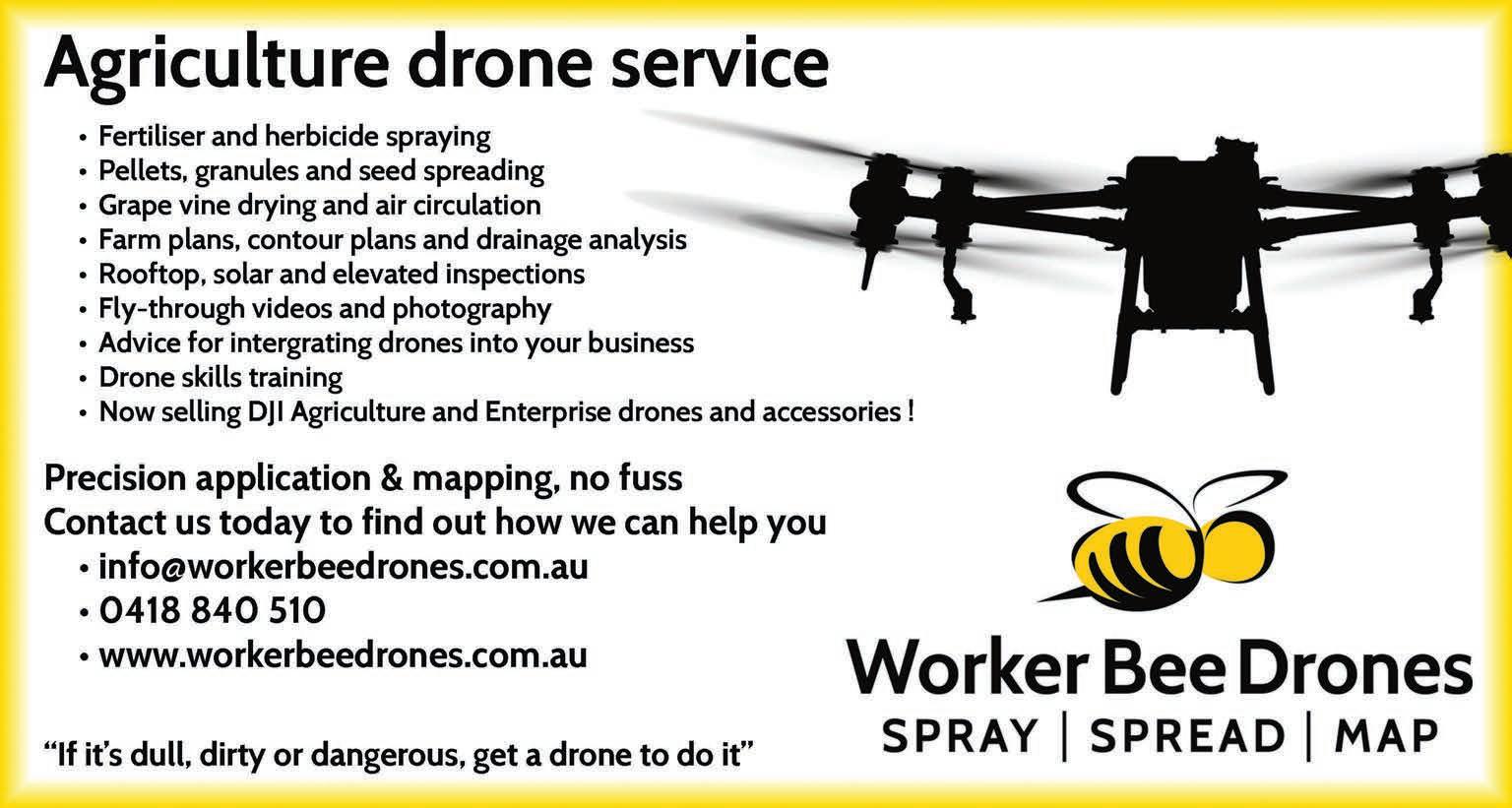
•Pasture seed •Turfand amenity seed •Cropping seed The cost effec ve way to buy your seed is through Bass CoastSeed Supplies

8-14 Hade Avenue, BASS, 3991 basscoastseedssuppliers@gmail.com 0418359 517







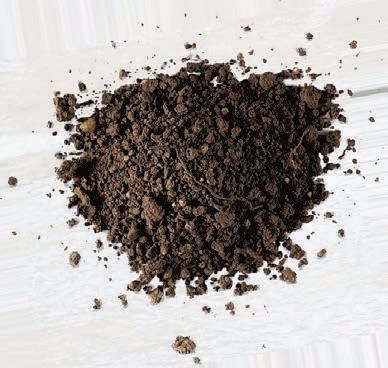

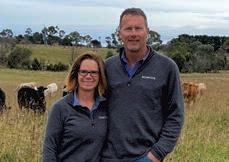


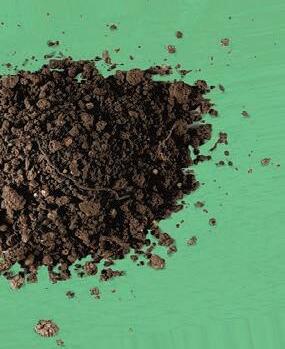















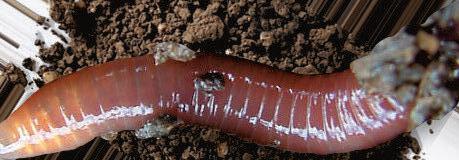

















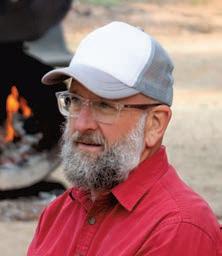



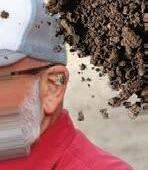










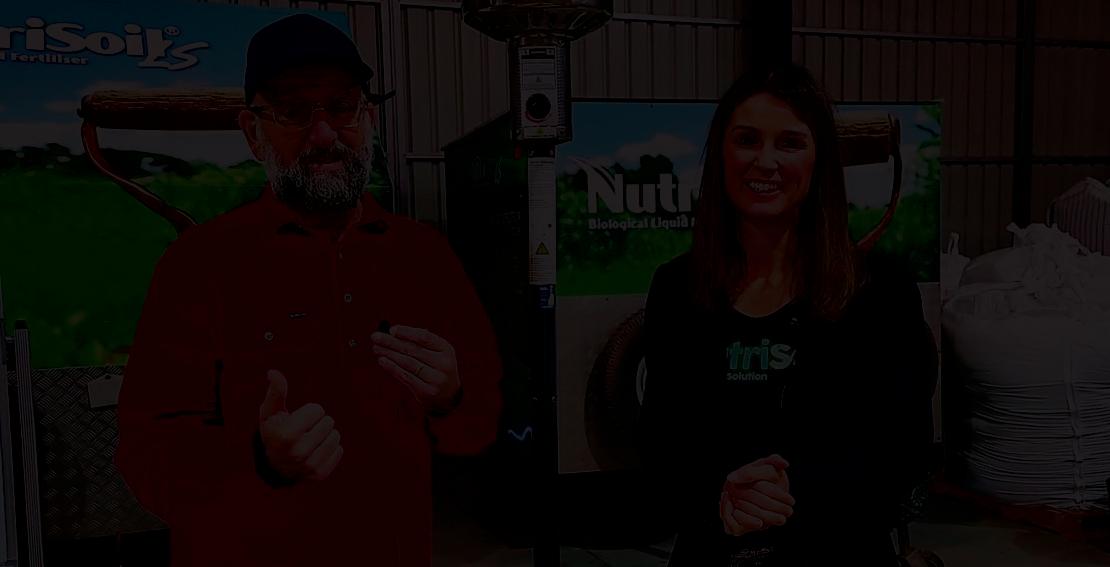
Farmers looking to understand more about the roleofbiology in soil and pasture health will have the opportunity to learnfrom experts at aBiological Farming RoundTable (BFR) eventin March.
Host farmers David and Ruth Read in Perry Bridge, east Gippsland will holdthe BFR on their farmonFriday 21, March.
NutriSoil is sponsoring the event with the support of Far East Victoria Landcare.
NutriSoil director Nakala Maddock said the business loves getting out to meet farmers and help improvetheir understandingofsoilhealth.
Whichempowers farmers to think about how they can use biology to work for them.
She said it was great to work with organisations like Far East Victorian Landcare because it allows them to help facilitate the networking of like-minded farmers who are ready to expand their mindsets aboutfarming with the tools nature has already provided.
“Weare bringing agroecologist David Hardwick from SoilLand Foodwith us to the event.
David has awealth of knowledge and
understanding about the relationship between soil ecology (soil microbes), soil health and plant health and he will unpack this during the day,” she said.
Besides an interactive presentation on soil function, there will be an in-field soil assessment, along with apresentation from NutriSoil on the science of vermiculture for next-generation farming.
“Our host farmers David and Ruth will also be discussing how they have been utilising the power of biology and diversity to improve theirpasture quality and quantity on the 2000 acres they manage.
“The Read’s will discuss their grazing rotation, multispecies pastures, seed treatmentprogram, liquid inject system and bio-ferment making process, which allcentres around biology,”Mrs. Maddock said.
The event is open to anyone, tickets are $50 per person and includes morning tea, lunch and afternoon tea Tickets can be purchased through the NutriSoil website www.nutrisoil.com.au or contacting NutriSoil directly on (02) 6020 9679 or emailing marketing@nutrisoil.com.au
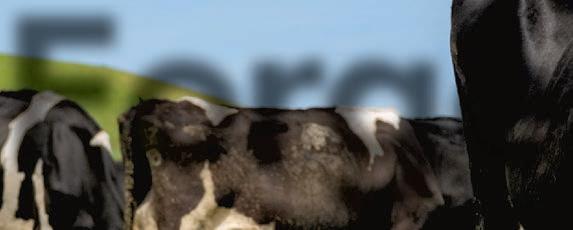
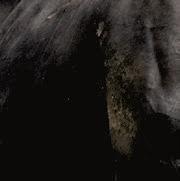


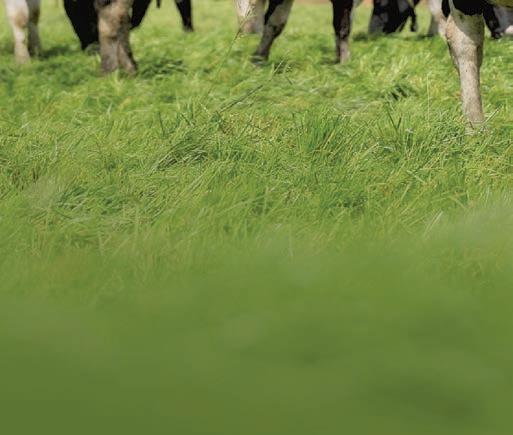

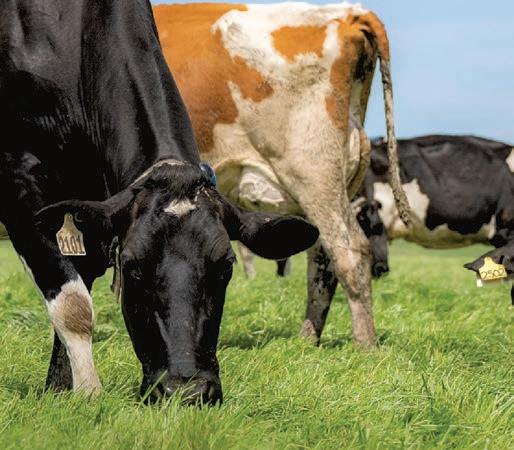
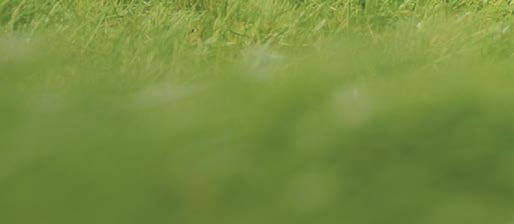

Acres Land Management Services is a local business based in West Gippsland specialising in the control of invasive pests and weeds.
They service the shiresofBaw Baw, Latrobe, SouthGippsland, Wellington, Bass Coast, Cardinia and Casey.
They provide evidence-based control options for avariety of pests including rabbits, foxes and wild dogs
Whether it’s baiting, fumigation, harbour destruction or trapping, they will work with you to find asolution that is safe and appropriate for your property.
Woodyand noxious weeds such as blackberry, gorse and ragwort have become absolutely prolific in many regionsaround thestate
Their environmental andeconomic impacts on the land will be felt for years to come, with blackberry alone being estimated to cost the Australian economy at least $70 million annually in lost primary production.
Pests and weeds don’t recognise property boundaries -sowhy not involve your neighbours?
Coordinate control efforts, share costs, and see what others aredoing in your localarea.
The evidence is pretty clearwhen it comes to landscape-scale control programs, with higher success rates and longer lasting results.
Acres Land Management Services can help withselecting the right control techniques to help youreclaim your land.
When it comes to spot-spraying,they can access alot of steeper areas with theirelectric150 metrehosereels, areas traditionally reserved only forknapsack or aerial spraying.
They also offeravariety of woody weed controltechniques including cutting andpainting, stem injection, forestry mulching and slashing. Call them today for afree quote
AgroEcoPower are aEuropean company with aglobal presence, specialisinginadvanced ECU remapping forover25years.
Their expertise lies in optimising engine per formance, enhancing fuel efficiency, and maximising torque through state-of-the-art ECU software modifications.
As industry leaders, they cater to heavy-duty machinery, agricultural equipment, trucks, and construction/earthmoving machines, ensuring improved reliability and operational efficiencyfor their clients but also dealers.
With astrong reputation across international markets, they are now expanding into Australia and New Zealand, bringing their cutting-edge ECU remappingsolutions to businesses in these regions.
Their commitment to quality innovation, and customer satisfaction drives themtodeliver tailored solutions thatmeet the unique demands of each industry.
AgroEcoPowerisa global leader in ECU remapping, helping farmers, truckers, and construction professionals maximise per formance, boost power,and reduce fuel costs.
Their in-house expert-engineered software modifications deliver more torque, better efficiency, and serious savings -all without compromising reliability.
Upgrade your equipment today and experience the power of precision remapping
Upgrading your equipment is a no-brainer,asevery drop and every dollar counts!
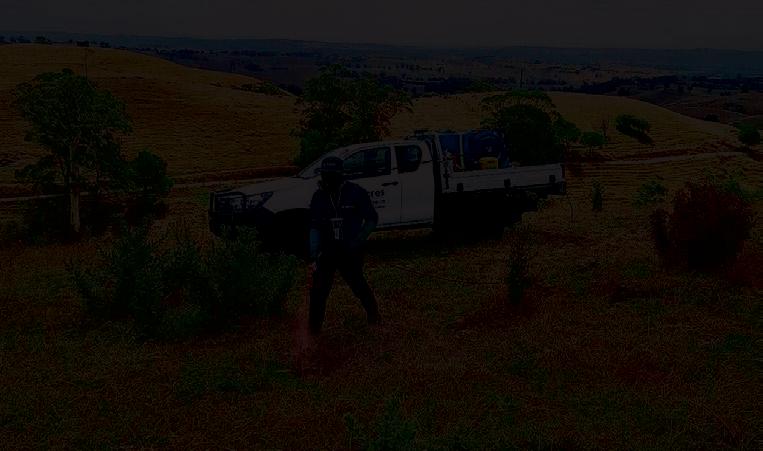




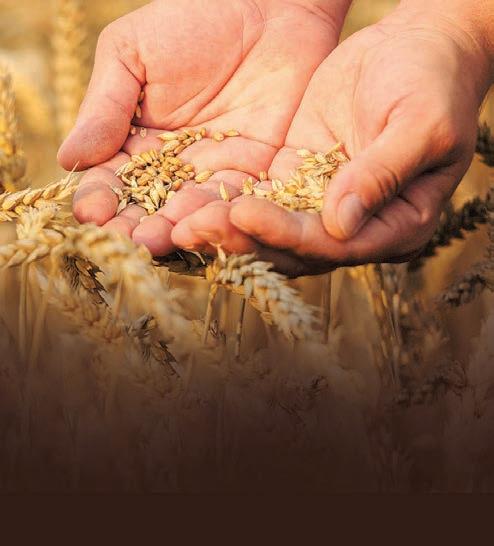




























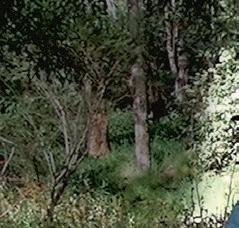


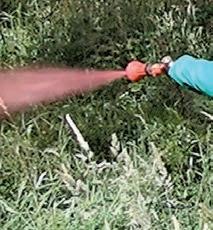
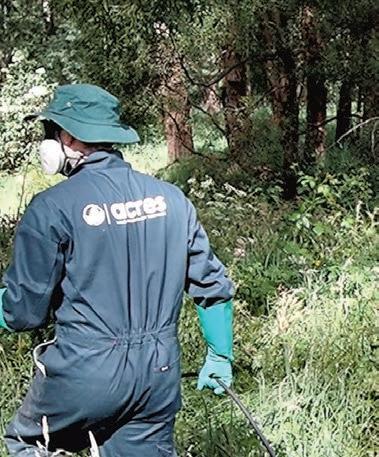

After the hotter and drier period Gippsland farmers have just experienced (and some still experiencing) autumn presents an opportune and sometimes necessary time for pasture renovation or over-sowing to maximise income or achieve specific production goals.
Effective planning and organisation are critical in staying ahead of feed requirements
Establishing astrong feed base for the season ahead will build resilience for when future feed gaps inevitably arrive.
By assessing your existing circumstances, identifyingconstraints, evaluating paddock potential and setting attainable goals, you canbetter map aclear course of action.
Remember,homegrown feed stands as your most cost-effective feed source, deserving thorough care and attention for maximum benefit!
Appropriate paddock preparation is crucialinsetting up your newpastureor forage crop for success.
Ensuring youhaveaclean, weed free seed bed with good fertility goes along way in helping the establishment of your new pasture as well as having no limiting soil structure or fertility issues.
Up to date soil tests will be an invaluable resource and help guide not only for your paddock preparation steps but also aid in species choice.
Your highest chance of success will be found from sowing into acultivated, fine,

clean seed bed, however sound results can still be achieved via aknockdown spray and drilling, or by direct drilling into an existing swardifthere is alow-weed burden and existing cover is reduced.
Whether you have an underper forming pasture that needs topping up, a paddock coming out of asummer crop or apaddock that needs complete renovation, you need to match the pasture choice to your situation.
The Brownwigg Pasture packs have been specifically designed for Gippsland -adapted to the conditions and tried and tested over years of use.
With market leading 2025 FVI varieties
included in the range, you can have confidence in it per forming on your farm.
The Brownwigg pasture pack range has quality mixes for most situations:
n Red Pack -Highest perennial per formance: milk and liveweight gain.
n Blue Pack -Over-sowing, winter feed, silage and hay production.
n Purple Pack –Perennial winter per formance, summer dry sites.
n Yellow Pack –Longtermproductivity and persistence. Lower pH and fertility.
n Orange Pack –Longtermproductivity and persistence.
Waterlogging and heavy soils.
n Green Pack –Economical, traditional perennial pasture.
Brownwigg arealso pleased to release the new Select version of the successful Red and Blue Packs.
The Select versions still give you the same top per forming Ryegrass varieties but without Clover,giving you more options for Broadleaf weed control.
Once your new pasture is sown, it’s key to treatthemcarefully.
Observing forthe presence of pasture pests or emerging weeds is crucial to allowing the correct identification and control in atimely manner
It is also important to follow astrict grazing management plan, waiting until the plants arefirmly anchoredbefore their first, light graze.
Once ready, don’t delay for too long as the first graze is essential for helping the plants tiller out, aiding in future productivity and persistence.
The first light grazing also allows sunlight into the canopy to assist the establishment of companion clovers, if present.
New pastures can offer more grazing potential than olderones and therefore they will needafertiliser program to matchyour productivity goals.
Soil-tests combinedwith yourproduction goals should guide your fertiliser application of NPKS and trace elements (where required)toget the most outof your new pasture!



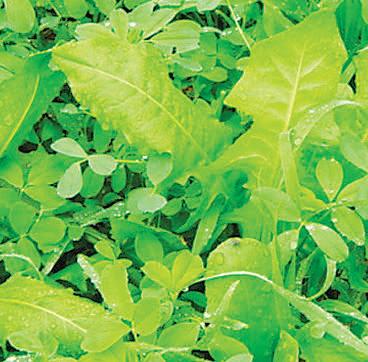


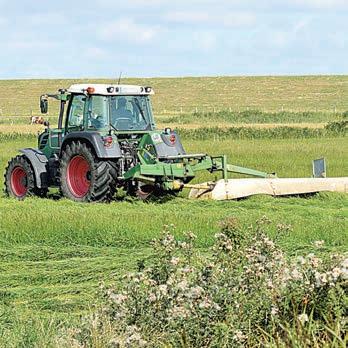



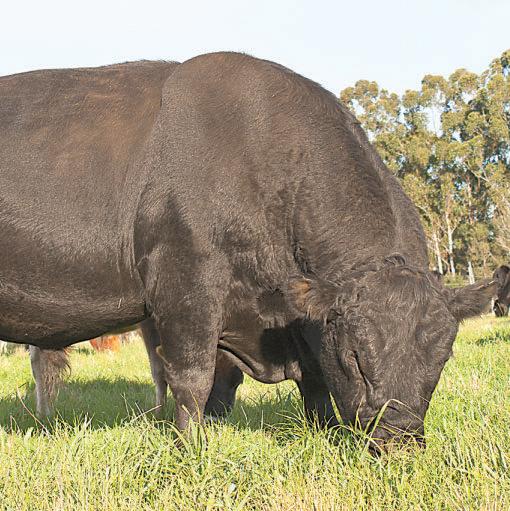














Agronomists, agricultural engineers and farmers use drone-captured data to gain greater crop insights and accurately plan and manage their operations throughout the growingseason.
Falcon UAVare aspecialist land care and service provider of fixed wing and quadcopter aerial imaging and spray drone services with an extensive network of precision camera manufacturers, drone types,imaging software and precision technology partners.
Falcon UAVhave established arobust mappingand spray drone pilotnetwork as well as acomprehensive suiteof precision partners to work alongside growers
What arethe benefits of drones in agriculture?
• Increasedyields –Monitor crop health and address threats such as disease and plant stress through early identification,treatment andmitigation to maximise yield potential.
• Cost savings –Better manage agriculture inputs such as fertiliser and pesticides by applying them only where necessary.
• Season-long insights –Gainvaluable insights at each growth stage, as well as before and after each harvest.
• Leaf-level accuracy –High-resolution RGB and pan-sharpened multispectral imagery provide high-accuracy data that allow plant-level monitoring and analyses.
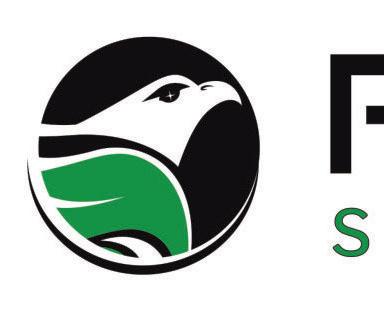
• Improved planning –Plan irrigation and drainage before the growing season, and evaluate it throughout.
• Current field data –Drones allow regular cost-effective data capturing, providing high temporal resolution for change monitoring and detailed comparisons acrossgrowthstages and across seasons.
Falcon UAVmakes it easy with the 5-STEP Precision Pasture Improvement Program:
Falcon UAVmaintain an extensive network of agronomists, soil nutritionists and custom blend prescription fertiliser relationships to complement all aerial survey’s to ensure theclient’s requirements aremet properly andcan be carried out professionally.
STEP 1PLAN
This is essential for aligning the professional services to your requirements. This comprises amixture of activities that take place on siteorremotely.
STEP 2DEPLOY
Drones are deployed as per the flight plan using the camera or sensor payload appropriate for the mission using the right software and survey grid for accurate filming or photography.
STEP 3REPORT
Here is wherethe processing and
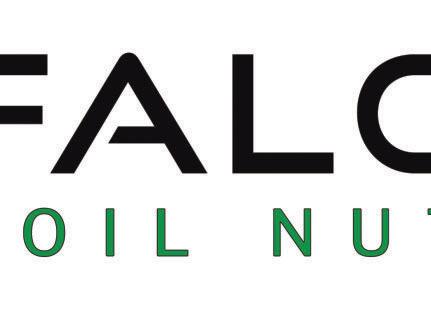











stitching of the images and video footagecaptured via thedrones is processed and converted to data you can use to make informed decisions and take action.
STEP 4TREAT
Soil ratios give an indication of the fertility balance in the soil. When the soil is balanced, all elements are availablefor plantgrowth.


STEP 5REPEAT
By referencing the data from previous seasons with the current datacaptured and comparing resultsfrom the same developmental stage from one season to the other,you can obtain insightful data enabling increased yields and lower input costs.
More information can be found at https://falconuav.com.au and by calling Luke Weekley on 0414 650 648


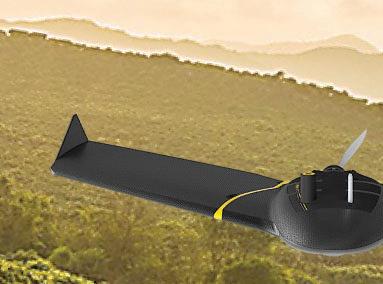




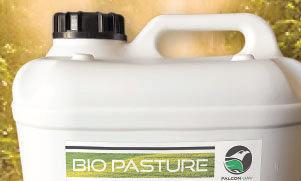
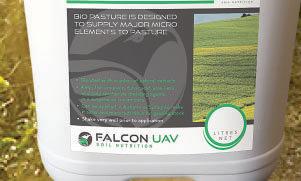

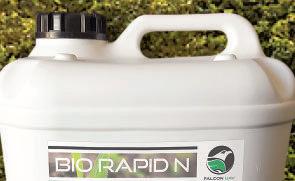




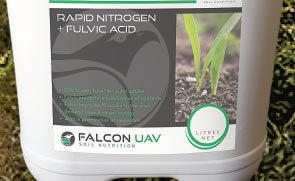



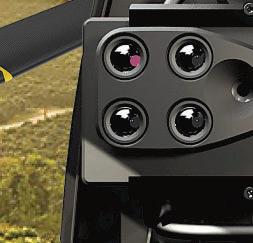
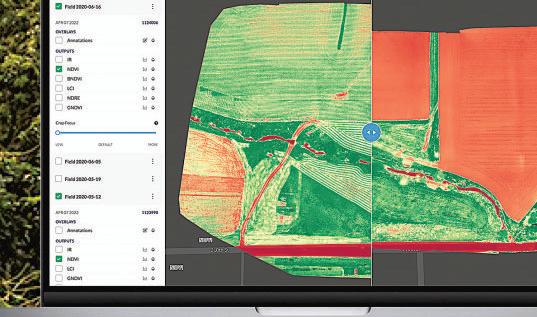




AMAZONE has introduceda number of ‘high spec’ features, including active boom guidance, quad nozzle pods and an integrated hydraulic pump, into its popular rangeofUF02 series of mounted sprayers.
Available in tank capacities of either 1,000 or 2,000 litres and boomwidths from 12 to 30 metres, the UF 1602 and UF 2002 sprayers are notable for their compact design and simple operation.
The addition of afront tank can boost capacity to 3,500 litres.
CLAASHarvest Centre Product Business Manager –AMAZONE, Murray Tuck,says the upgrades mean the UF series now deliver the same per formance, convenience as the company’s range of UX trailed sprayers.
The ContourControl boom guidance system, available on wider booms wider than 27 metres, provides fast and precise boom guidance for optimal application and per formance
The title angle of each boom is controlled by a pre-pressurised
hydraulic cylinder equipped with a rapidly-switching valve.
The cylinders for the tilt angle of the two outer ends of the boom are controlled using the same principle.
“This system helps to keep each boom parallel to theground,reducing any effects caused by uneven terrain or high operating speed,” Steve says.
“Besides preventing contact with the ground, this helps to maintain an optimal distance of about 50cm between the boom and the target sur face, ensuring optimal coverage and reducing the potential for spray drift.
“In addition, UF 02 booms can now be fitted with AmaSwitch quad nozzle bodies on 25cm spacings, which allows the operator to select the right nozzle according to spraying conditions.”
The boom has independentlycontrolled hydraulics at eachpivot point
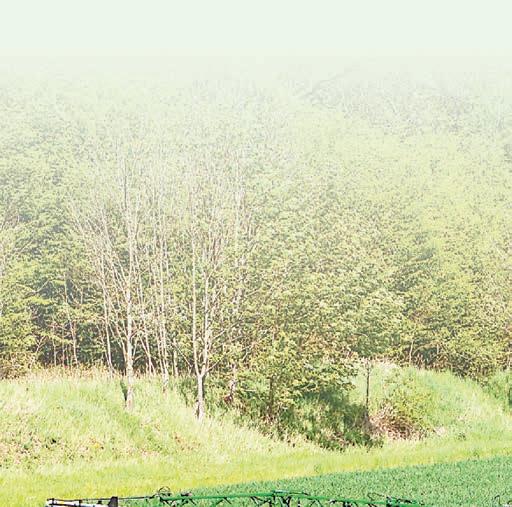
“This means each section can be folded independently, allowing the

operating width to be adjusted,” Blair says.
“The overload protection within the hydraulic systemissimultaneously used as ‘break-back’ protection when working at these reduced working widths.
“Alternatively, two sections of the boom can be folded in or outatthe same time, significantly reducing set-up time.
The UF 1602 and UF 2002 mounted sprayers are now availablewith a fully-integrated 300 L/min hydraulic pump.
“Pump speed is completely independent of the tractor’s engine speed, whichisparticularly useful when applying crop protection agents in hilly terrain, where the tractor’s engine and PTO speed is constantly changing,” Steve says.
“Maintaining aconstant pump speed ensuresoptimum application resultsand prevents the pumpfrom overloading ”
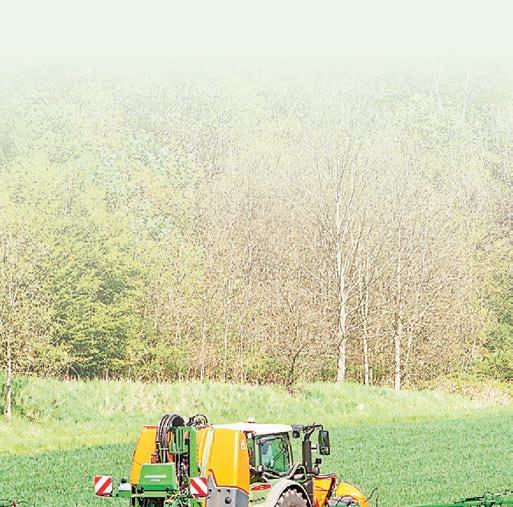
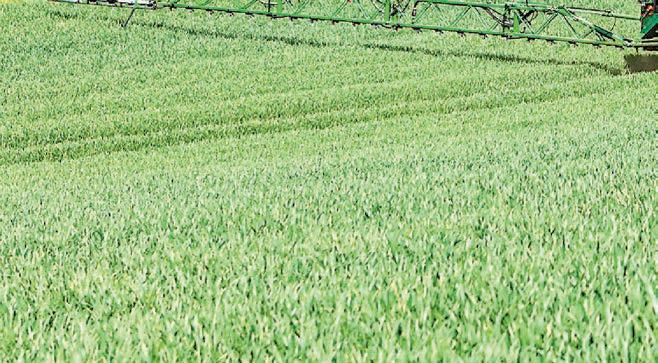
UF 02 units are suitable for mounting to any tractor with a minimum

hydraulic flow of 50 L/min and are controlled using the AMAZONE TwinTerminal 3.0 or any ISOBUS compatible terminal in the cabin.
“The operator can select the desired pump speed for filling, agitating or spraying,” he says.
“The pump starts gently and quickly reaches thepre-determined level.
“Pump speed is thenregulated automatically, which means maximum suction and agitation is maintained at all times.
“The pump can also be switched off automatically once the nominated fill level has been reached.”
About CLAAS HarvestCentre: CLAAS Harvest Centre is one of the largest privately-owned farmmachinery distributors in Australasia.
It representssome of the world’s leading farmmachinery brands, including CLAAS, AMAZONE, and Väderstad (AU), via its network of 33 owned and franchised CLAAS Harvest Centres and 22 independent dealerships throughout New Zealand and Australia
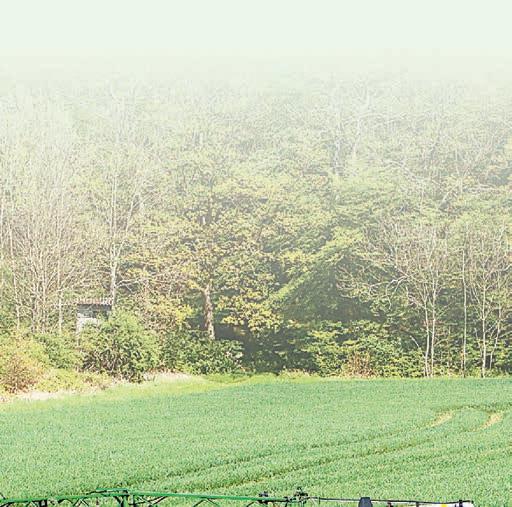
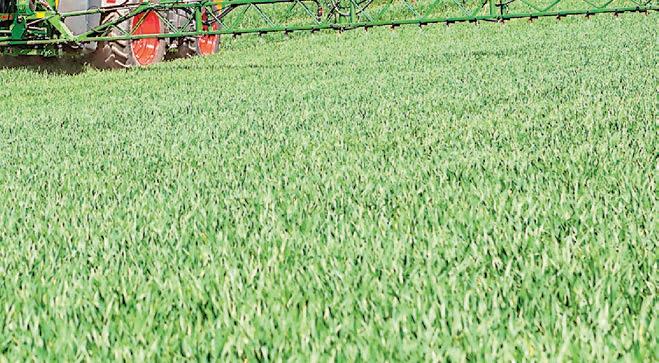
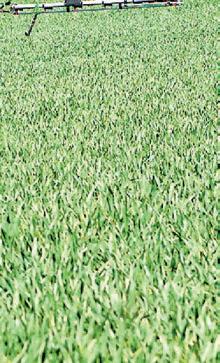

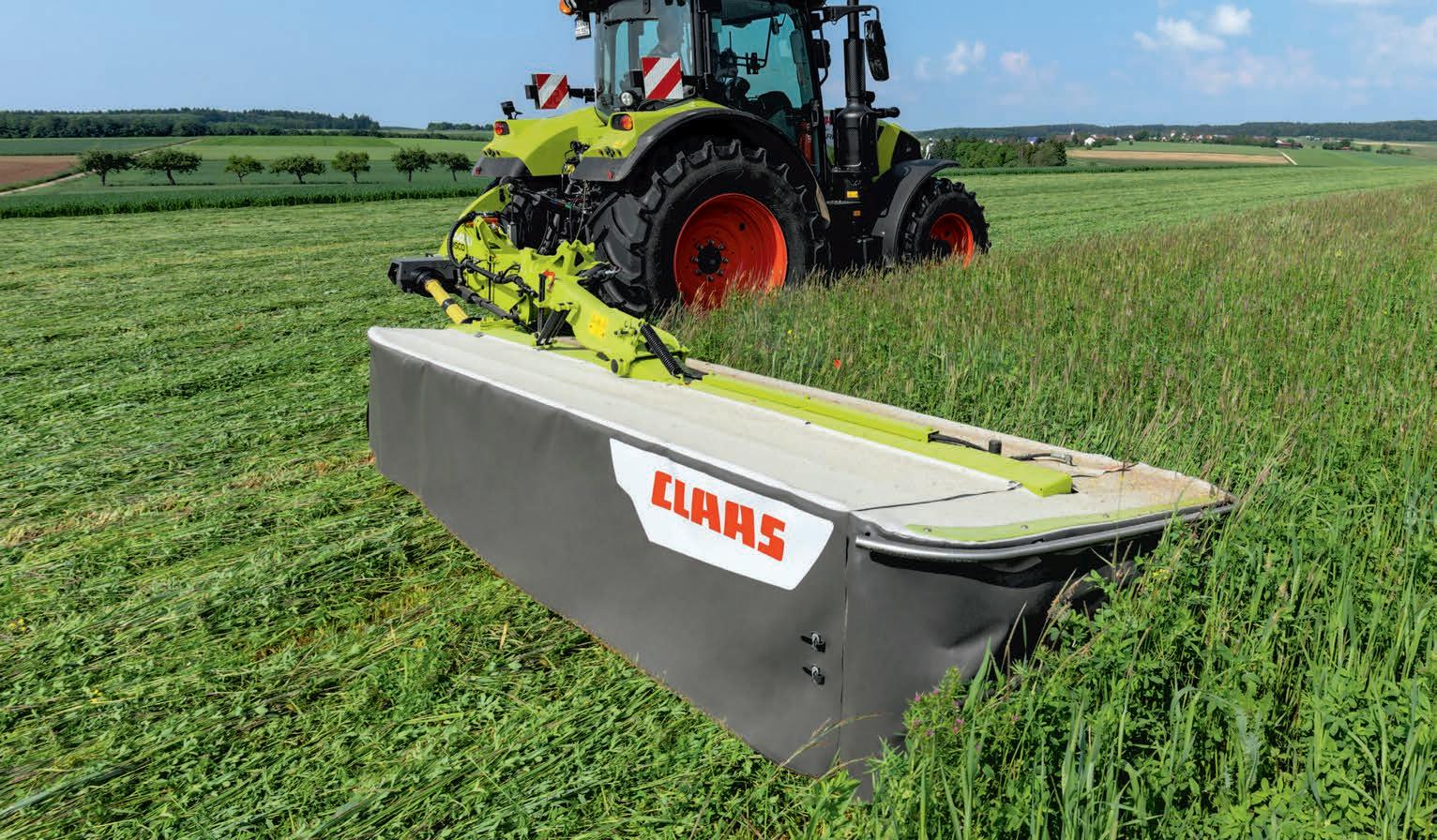



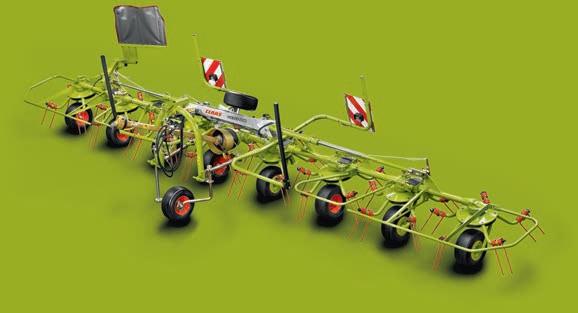

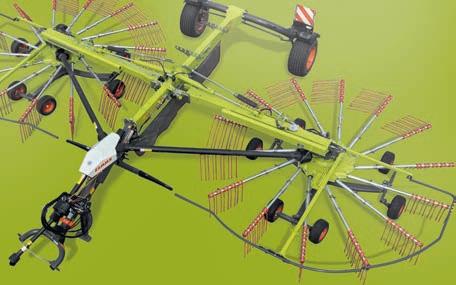
The Aussie Built Goldacres Prairie Special is aversatile and compact sprayer designed for pasture, horticultural, and dryland cropping applications.
Built on over40years of sprayer manufacturing expertise, this sprayer packs afull range of featuresinto asmall frame, ensuring top-tier performance for all types of spraying tasks.
Available in tank sizes 2500L, and 3000L, the Prairie Special is equipped with fully hydraulic Delta booms ranging from 12 to 24 meters.
Its large diameter single wheels and flexible boomconfigurations make it an ideal choice for diverse operations.
One standout feature is the EZ Control Station, whichconsolidates all filling and flushing functions in one easy-to-access location.
With color-coded, clearly labelled valves, operators can quickly identify and operate each function, ensuring smooth and efficient operation.
The sprayer’s high-quality boom section valves offer quicknozzle response with motorised ¾” delivery lines.
These come standardinthree sections, with options to upgrade formore as needed.
The heavy-duty chassis, crafted from high-strength125x75x6mm RHS, ensures durability and stability.
The integratedrear chassis on the 3000L model provides robust support for both the boom and tank
The Prairie Special excels in both

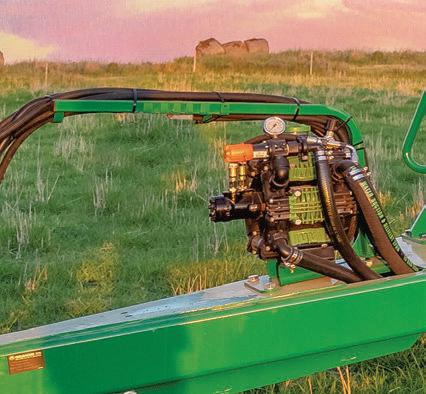

strength and ease of use, with features like nitrogen-charged vertical boom suspension, smooth-running diaphragm pumps for consistent flow, and optional individual side boom wing tilt to clear obstacles.
The inductionhopper offers quick chemical loading with alarge venturi system for powders, granules, and
liquids, all while keeping the process safe and efficient with easily accessible controls.
Goldacres’ commitment to innovation and precision is evidentthroughout, with advanced paint and anti-corrosion systems, modular construction forfuture upgrades, and achoice of control systems—from basic electric flowcontrol to advanced ISOBUS compatibility for integrated operation.
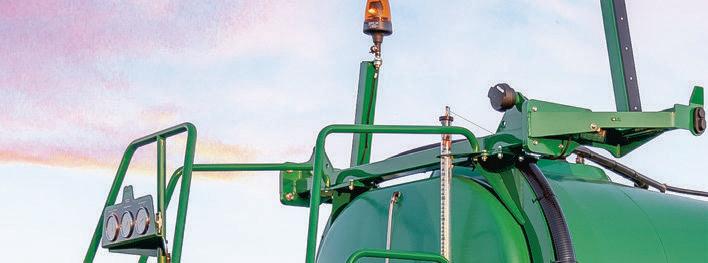

Whether you need simple control or cutting-edge technology, the Prairie Special offers asprayer thatmeets the demands of modernagriculture.
More information can be found at Goldacres.com.au


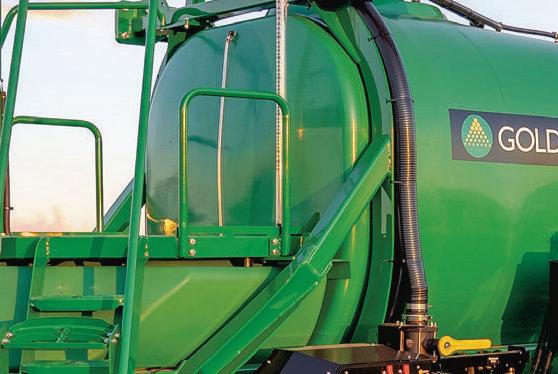
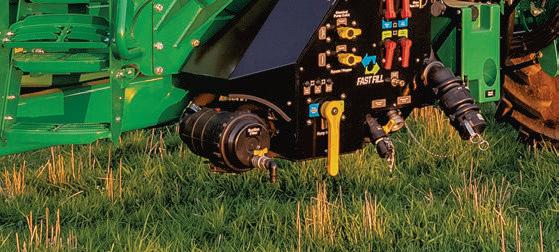






























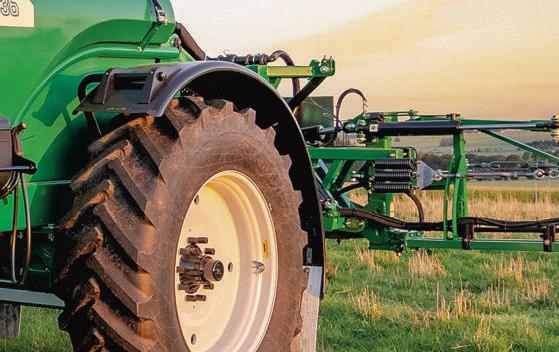
































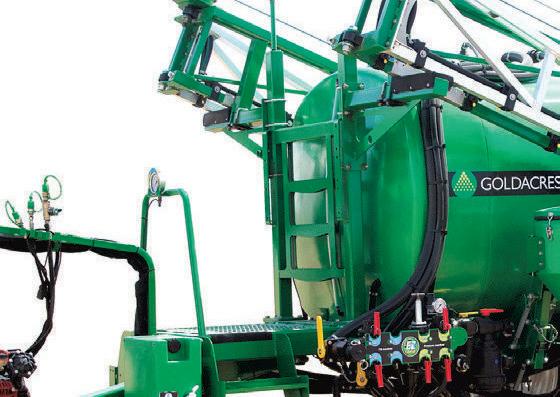

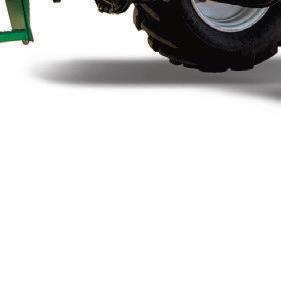







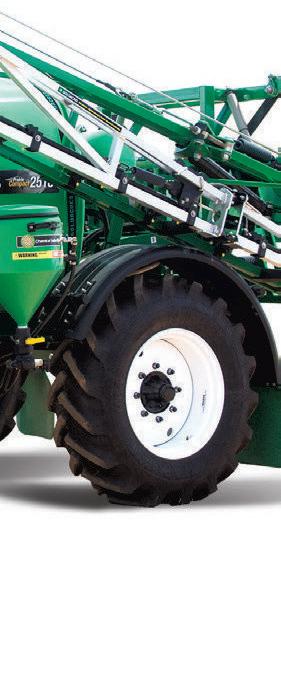






Designed by former beef and sheep farmer turned entrepreneur Sam Baulch, FARMap was launched in 2021 to address agap in the farmmanagement app market.
Recognising the importance of high-quality farming maps for effective farmmanagement, Sam saw an opportunity to create astraightforward,
cost-effective solution tailored to family farming operations, particularly in the livestock sector
Inspired by the growing impact of technology in agriculture, FARMap quickly moved into development in early 2018.
“Quality assurance and accurate mapping are challenges for every
BeDroned offers innovative drone solutions thatcan greatly enhance pasture management on farms in the Gippsland region, where agricultural productivity is critical.
Utilising dronetechnology, BeDroned provides real-time aerial imagery and data that can be leveraged to assess pasture health, monitor growth patterns and identify areas needingattention.
Then once this data has been analysed they can apply appropriate treatment with their state-of-the-art agricultural spray and spreading drones.
High-resolution mapping of large, hardto-reach pasture areas enables farmers to track the condition of their land without the need for time-consuming ground inspections.
Farmers can detect weed infestations pre-emptivelyand improve pasture regeneration
Multispectral maps can optimise grazing schedules, ensuring that livestock are grazing in themostproductiveareas, preventing overgrazing.
BeDroned’sdrone fleet can assist with pasture renovation, seed andfertiliser spreading as wellasherbicide or pesticide spraying.
With the ability to cover vast expanses quickly and accurately, drone technology can help improveresource allocation and reduce costs.
BeDroned’schief pilot and ground crew both come from afarming background.
They know how to work with other farmers to get the best results right from the very first contact.
They don’t just work by the hour,they work by the job, striving to get the best result foryourdrone mission.
BeDroned’scorevalue is to listen to your problem and help you to achieve the outcome for your business needs.
Making sure your target areas are identified and treated to obtain the results you expect with regular consultation and communication throughout yourpasture improvementproject

• Weeds
• Liquid fertilizer
• Pesticides
SPREADING
• Fertilizer pellets
• Powder/granules
• Seed
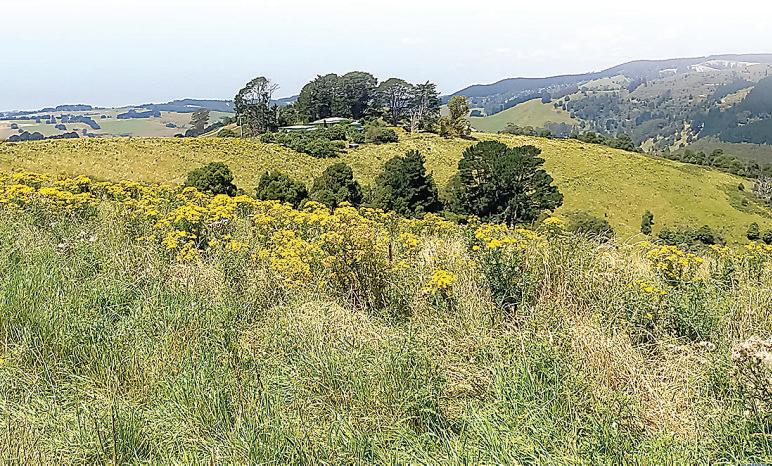

farmer,soI wanted to offer amore affordable option for family-owned and operated farms,” Sam explained. Simplicity and affordability are Sam’s primary goals for the app, ensuring that even grandparents find FARMap easy to use.
Customers appreciate the app’s user-friendly inter face and the personal touch of receiving one-on-one support

instead of dealing with alarge agency. Sam believes FARMap has transformed the way people manage their farms by simplifying the process of recording data and generating reports,with all information convenientlystoredinone place. By continually improving the app based on client feedback, FARMap aims to deliver maximum value to its customers in the future.




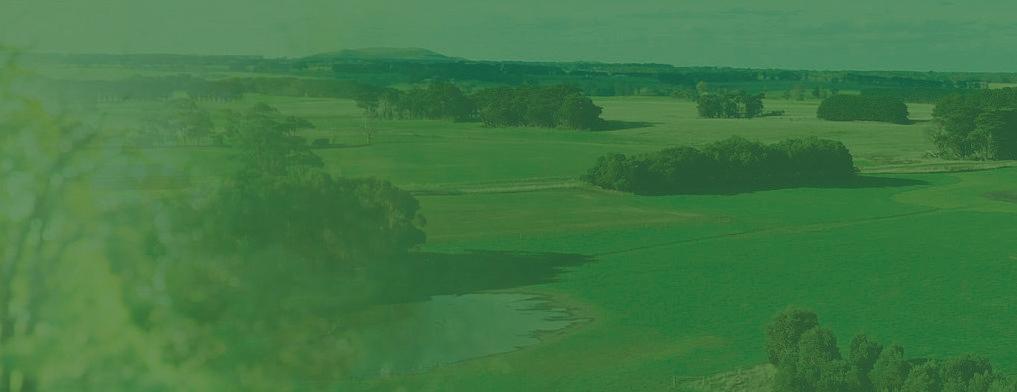
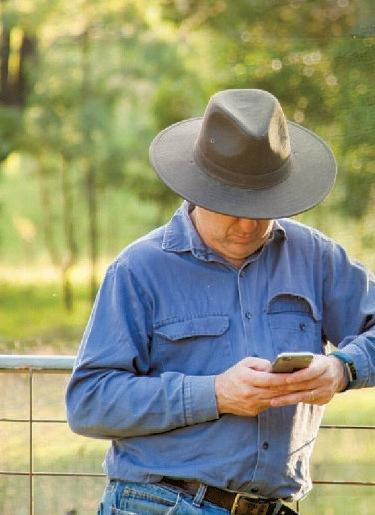


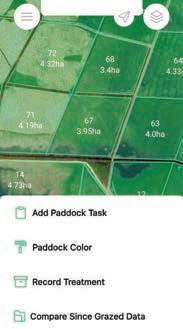


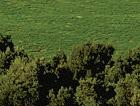




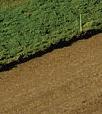
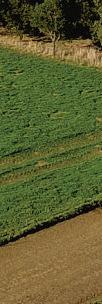





PHOTOGRAMMETRY
• Farm mapping
• Contour maps
• Crop health
• A Aerial photography



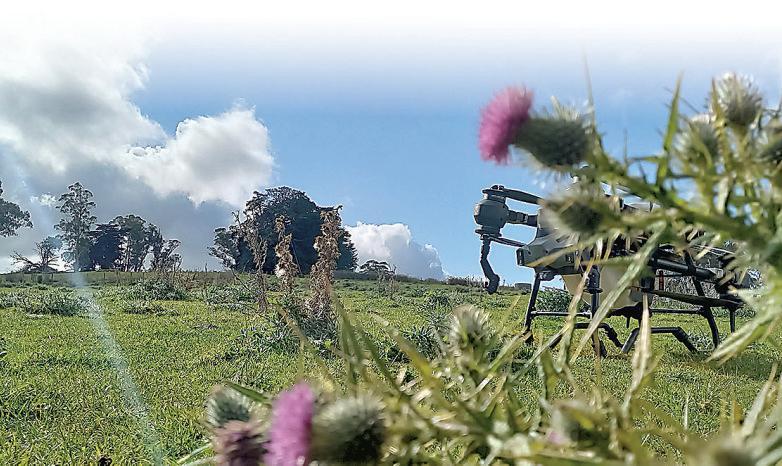

0490
482 727
Servicing Budgeree, Boolarra, Mirboo North, Yinnar,Hazelwood North, Thorpdale, Traralgon, surrounding districts and beyond www.bedroned.com.au
contact@bedroned.com.au like us on facebook/ beDRONED2023
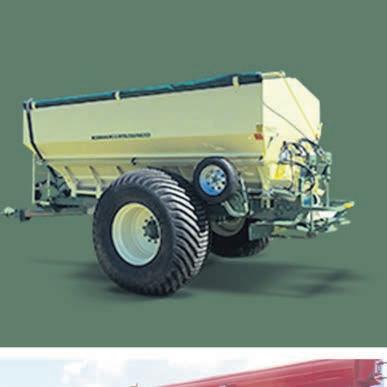
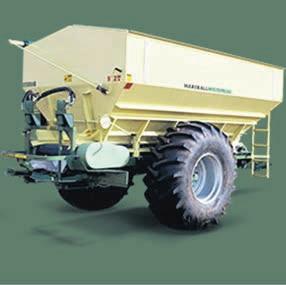
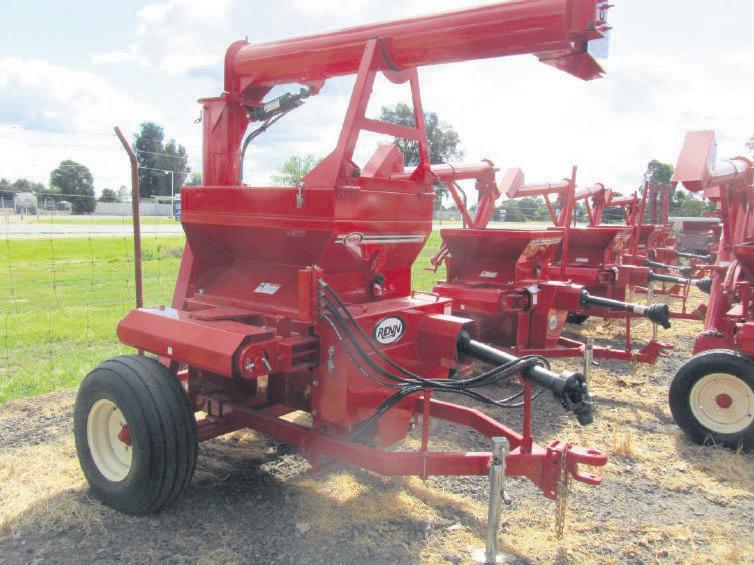






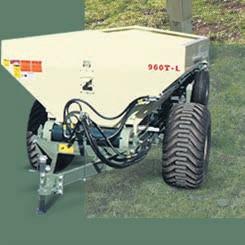




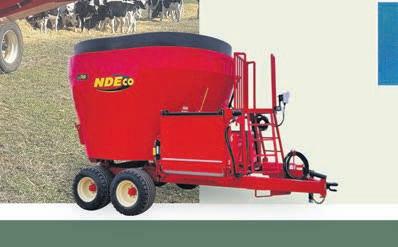
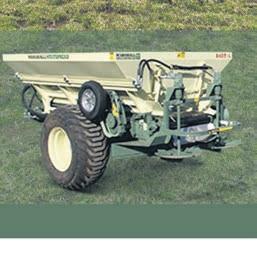

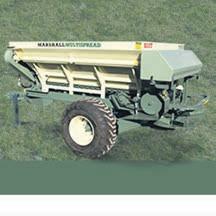
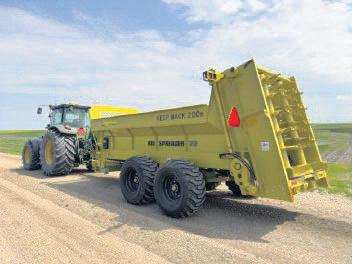


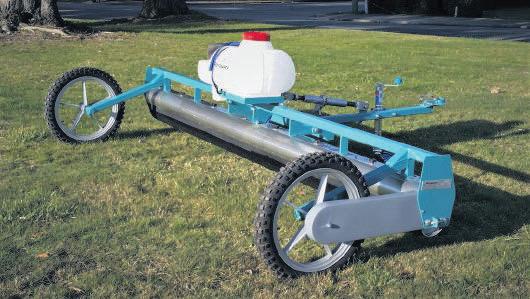

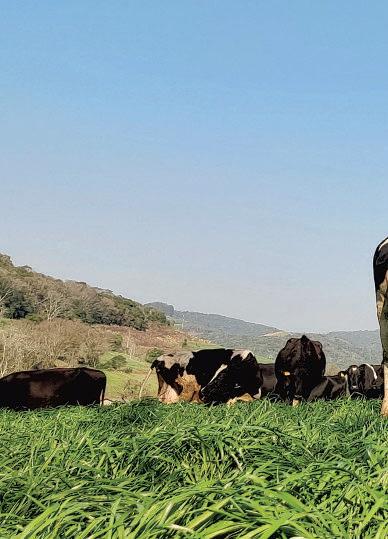
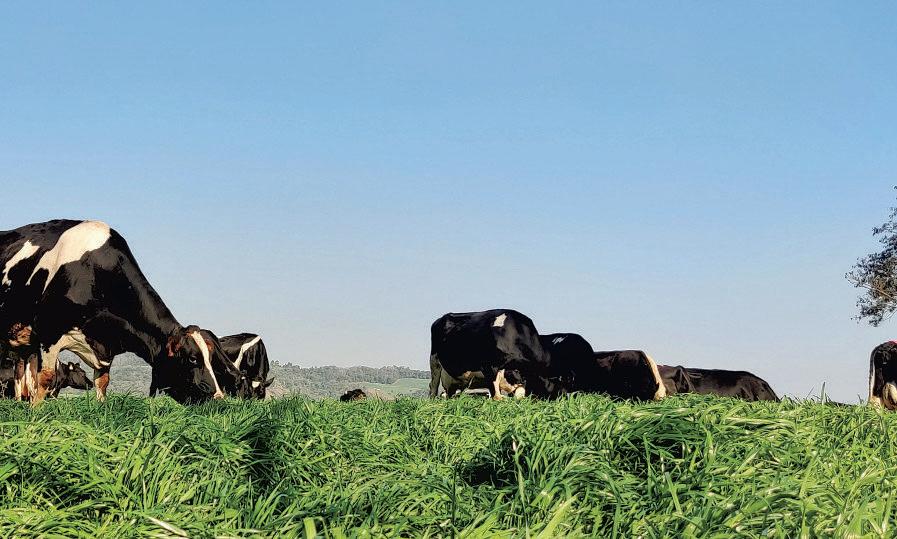





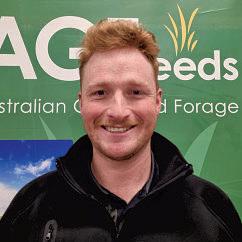

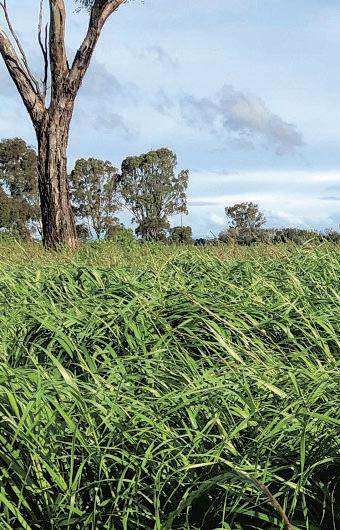






















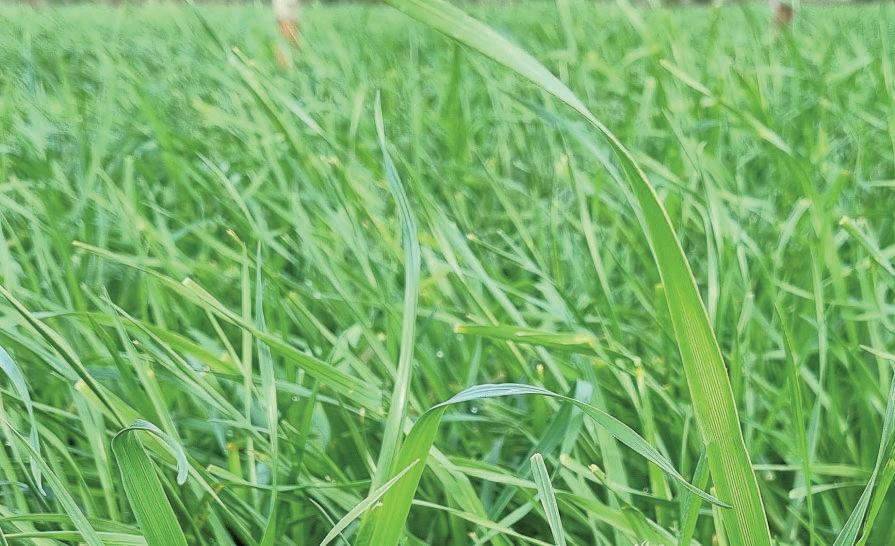
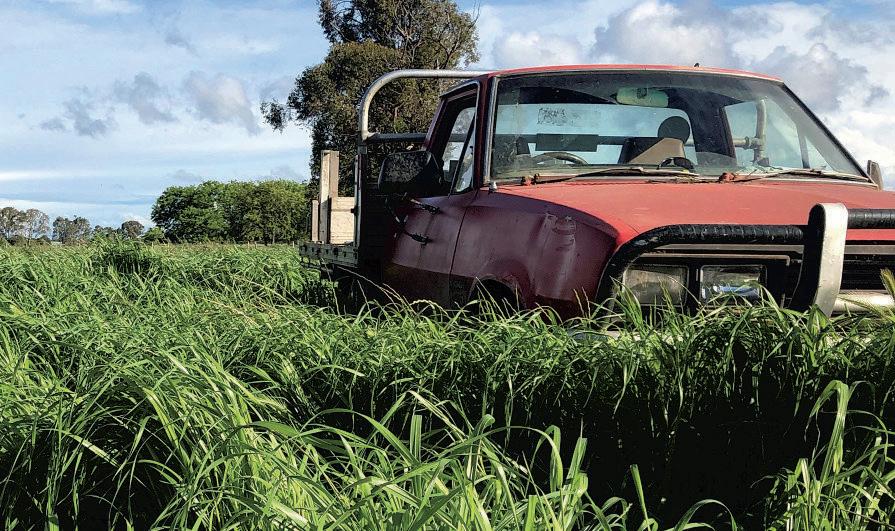
















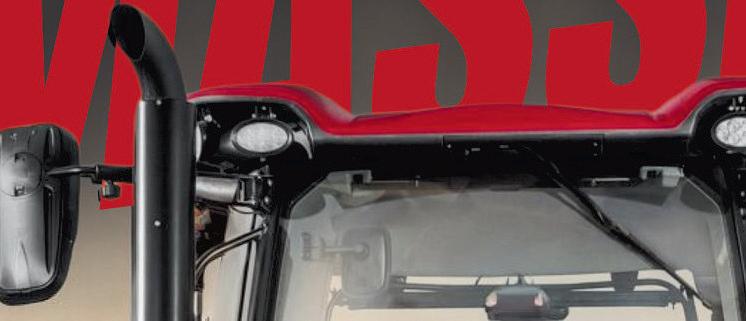
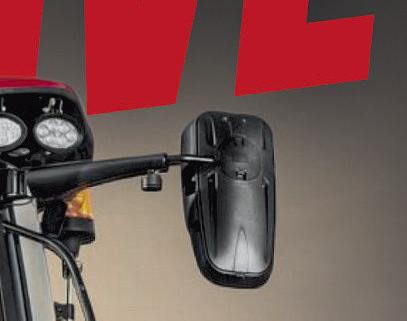
































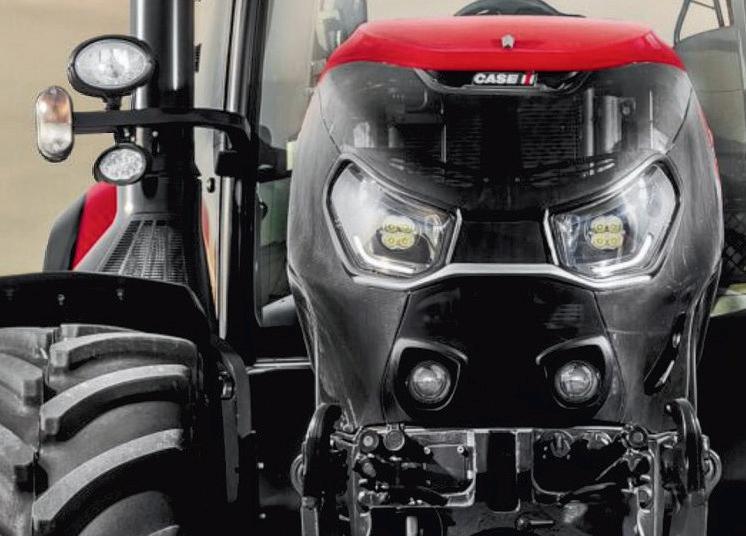

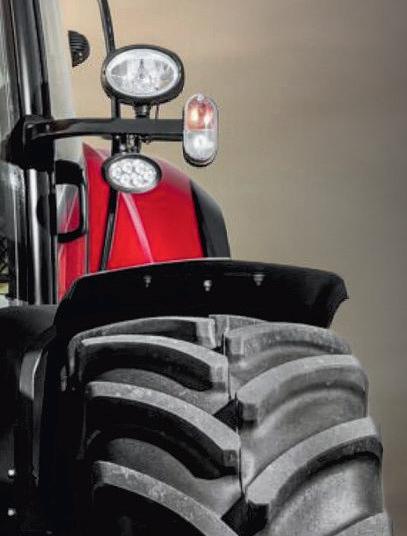








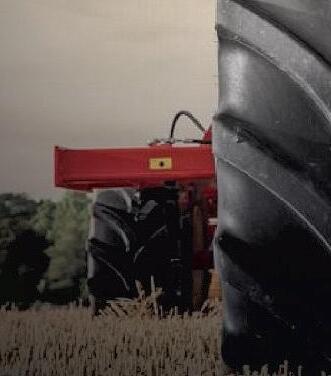


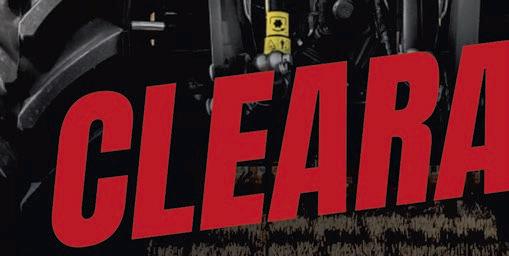




Water is one of Australia’s most precious resources, yet its management continues to pose significant challenges.
From drought-stricken rural communities to urban areas battling hardwater problems, finding sustainable and effective solutions has never been more crucial.
Enter Hydrosmart, an Australian innovation that is transforming the way to approach water conditioning.
For years, Australians havegrappled with issues caused by hardwater,salinity, and scale buildup.
These problemsnot only affect the efficiency of irrigation systems and industrial equipment but also contribute to costly maintenance and reduced agricultural yields.
Traditional water-softening methods often rely on chemicaltreatments, which can harmthe environment and are not always feasible for large-scale use.
Hydrosmart offers achemical-free alternative that’s as efficient as it is eco-friendly.
Using advanced resonance technology, Hydrosmart systems treat water at amolecular level, breakingdownhard water minerals and reducing theimpact of salinity without altering the water’s chemical composition.
The technology is simple to install and requires minimal maintenance, making it accessible for households, farms, and industries alike.
What’s more, the benefits extend
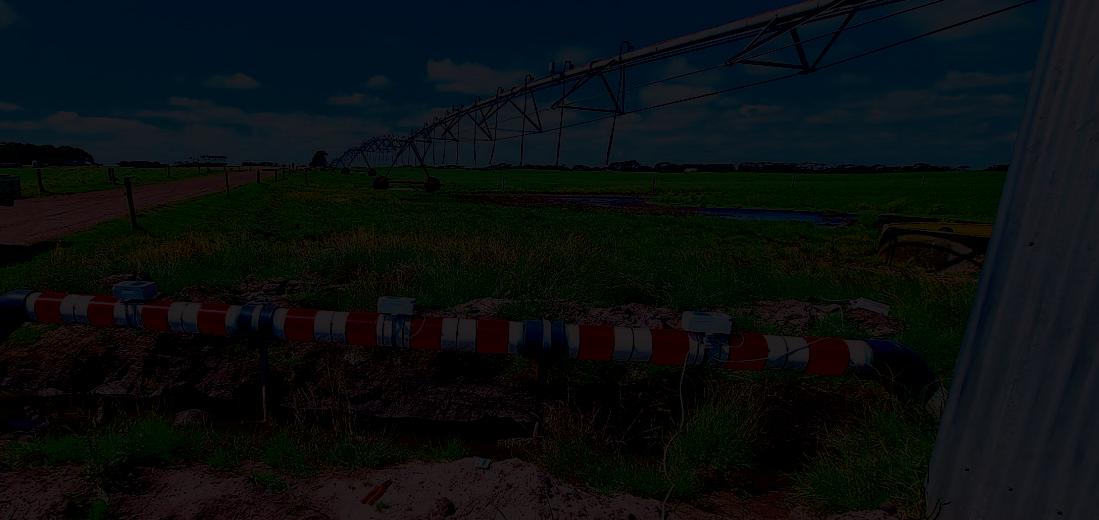
beyond resolving water hardness; users havereportedhealthier crops, improved livestock hydration, and longer-lasting equipment.
In acountry where every drop counts, Hydrosmart’s innovative approach aligns per fectly with the growing demand for sustainable water solutions.
By reducing reliance on chemicals and promoting efficient water use, this homegrown technology is not only addressing immediate water issues but also contributing to Australia’s broader environmental goals.
As Australians continue to face the realities of achanging climate, solutions like Hydrosmart prove that innovation and sustainability can go hand in hand.
With its proventrack recordand
commitmenttopreserving our most vital resource, Hydrosmart is poised to become acornerstone of water managementinAustralia.
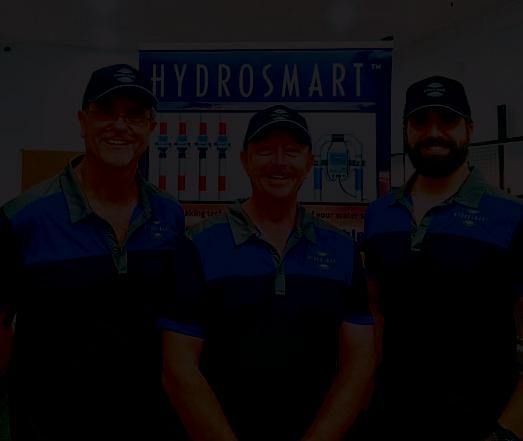


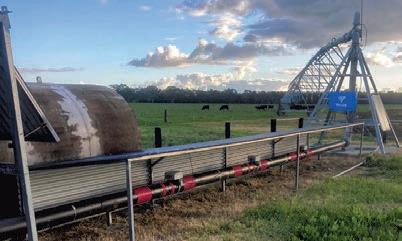


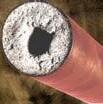
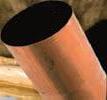

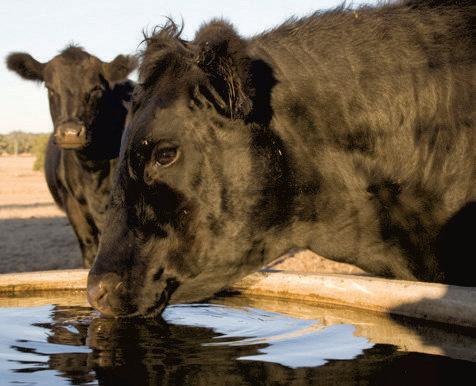


When it comes to supporting livestock productivity, the foundation often lies with pasturequality
In 2025,NotmanPasture Seeds, a Gippsland seed leader,proudly introduced anew range of CM142 perennial ryegrasses designed with enhanced animal health safety in mind.
Animal health has always been akey pillar in pasturerecommendations, as Peter Notman explains.
“2025 is an exciting year
We’re proud to support farmers with new pasture toolsthat can make areal animal health safety difference in cattle and sheep, whilst still driving milk or meat production
“The introduction of Stampede and Elevate perennial ryegrasses into our
perennial seed mixes can directly impact the metabolic load of harmful alkaloids in herdhealth, thanks to their advanced genetics and the CM142 endophyte”.
Cropmark Seedsplant breeder
Stephane Montel emphasises Stampede CM142 is more than just another ryegrass cultivar out there.
“CM142 has consistently shown a reduced potential to induce ryegrass staggersand heat stress.
We believe this is aresult of its unique alkaloid levels.
Our main goal in developing CM142 was to maintain the component around insect protection while increasing livestock per formance, due to lesser toxicity and better forage production.”
CM142 represents asignificant step forwardinpasture safety, especially in mitigating the risks associated with alkaloid intake in livestock compared to traditional standardendophyte ryegrasses.
Cropmark Seeds’ newly bred perennialgrasses focus on reducing the concentration of harmful endophyte alkaloids, which can lead to conditions like ryegrass staggers.
By reducing these harmful compounds, CM142 helps keep grazing animals’ nervous systems healthy, giving farmers’ confidence in their livestock’s well-being.
This is especially important in summer and autumn when hot, dry conditions
can make animals more vulnerable to the effects of these toxins.
Seed mixes like Vatbuster (used in dairy systems) and PrimeCut (commonly used for beef production) now include varieties such as Stampede CM142 along with other species as such as clover herbs and grasses as requested.
Get in touch with Notman Pasture Seeds at Poowong for more information. While CM142 is very unlikely to cause ryegrass staggers in sheep or cattle, as with all novel endophytes, under extreme conditions and poor grazing management, especially during late Summer/Autumn, staggers could potentially occur in cattle and sheep.
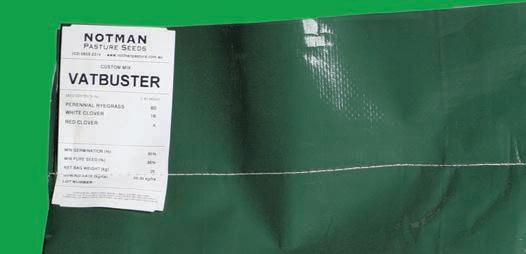

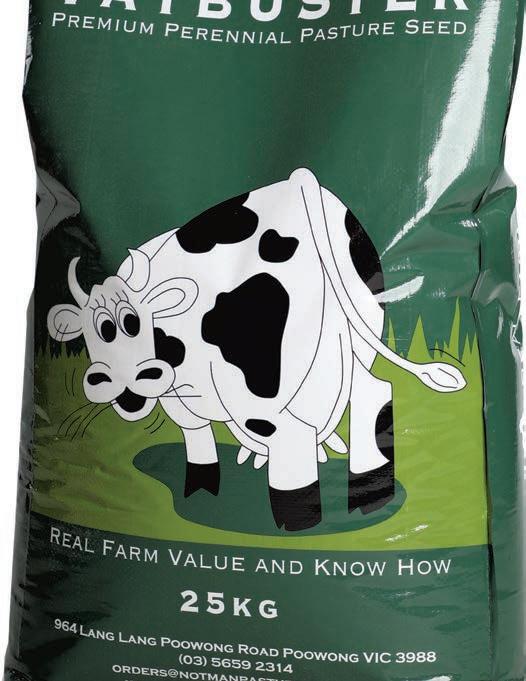
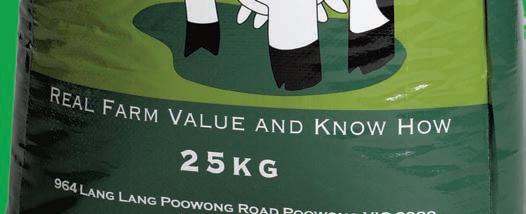
Launched in 2022, Allure Italian Ryegrass from Upper Murray Seeds (UMS) has quickly proven it’s at the top of the diploid Italian ryegrass market.
In the three years since its release, Allure’s strength has been its rapid establishmentalongside itsgrazing recovery, allowing farmers to get back into paddocks sooner and maximise productivity.
Allure establishes quickly and grows vigorously through autumnand winter ensuring reliable feed when it’sneeded most.
Its high dry matter yields support

livestock nutrition and boost overall pastureproductivity
Allure has also proven agoodperformer late in the season with December rain or irrigation.
The key to Allure’s success is its exceptional ability to recover rapidly after grazing,
“This feature keeps grazing rotations tight and maximises grazing opportunities, contributing to long-termprofitable pastures”says Damien Glass, UMSArea Manager,NorthernVictoria.
Adaptable to different farming systems, Allure thrives in medium to high-rainfall zones and per forms well under irrigation.
Its versatility also extends to hay and silage production, giving farmers flexibility in feed management.
With its fast recovery, high yield potential, and adaptability, Allure Italian Ryegrass is helping farmers optimise pasture systemsand increase profitability.
For more information visit: www. uppermurrayseeds.com.au/product/ allure-italian-ryegrass/
UpperMurraySeeds (UMS) is dedicated to developing cutting-edge pasture and forage crop cultivars tailored to the diverse and often challenging climates of Australia andbeyond.

For over 20 years,their team of expert researchers hasbeen breeding and trialing pasture and forageseed varieties under real farming conditions.
In 2018, they strengthened their commitment to research and development by establishing the UMS Research Station in Tasmania’s Midlands
This extensive facility allows them to rigorously breed and assess new varieties through replicated trial plots and broader grazing studies,measuring essential traits such as yield,palatability and persistence before release. The insights gainedfromthese trials notonly shape thedevelopment of their popular seed varieties but also empower their UMS Area Managers
and Agronomists to provide farmers with more precise andeffective advice. By leveraging cultivar per formance and data from the UMS Research Station, their team can recommend the bestpasture solutionstomaximise productivity, improve resilience,and enhance profitability.
Thisproactive approach underscores UMS’s dedication to helping Australian farmers overcome climate challenges and achieve long-termsuccess.
Through continuous investment in research, innovation, and expert support, Upper MurraySeeds are committed to delivering premium pasture seeds thatdrive sustainable, high-performingresults.
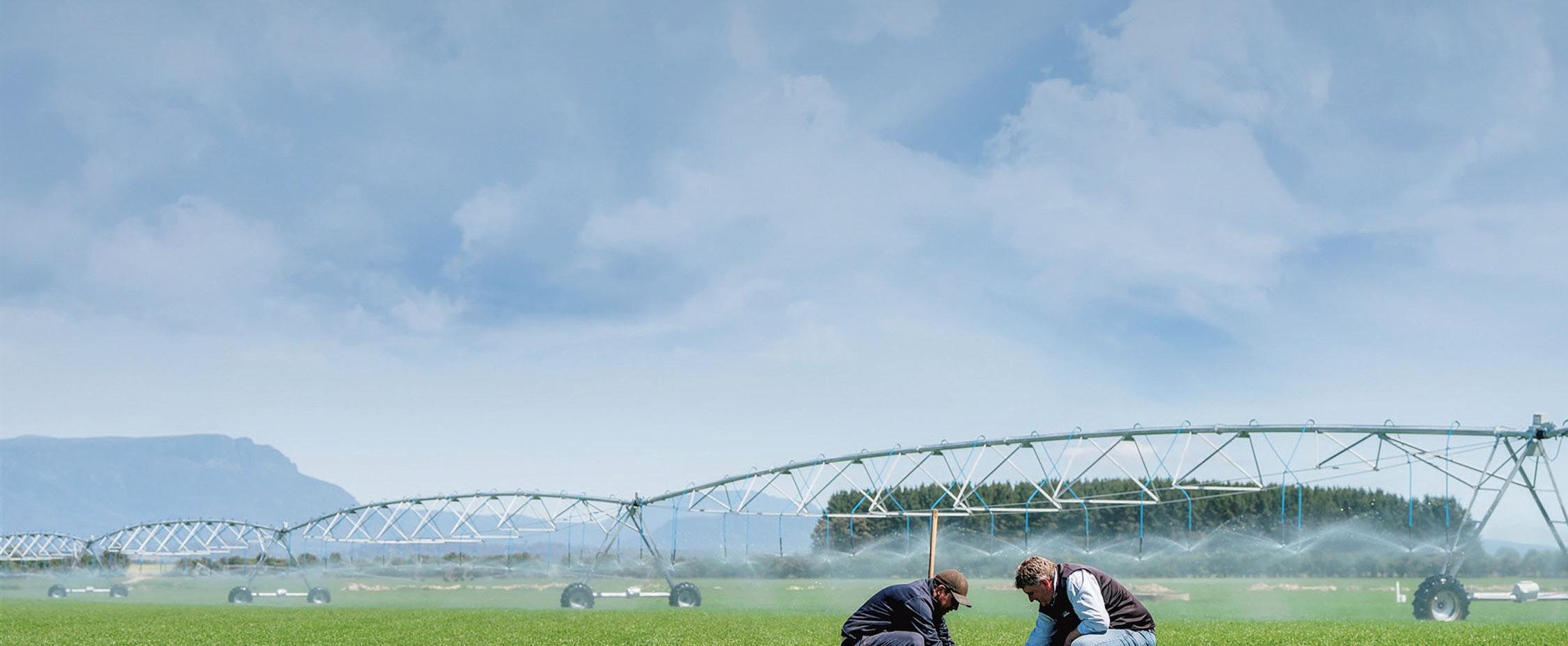



Emma BALLINGALL
ABREWER Yand cellar door has been approved at Narracan after operating hours werereduced to appease local residents.
Baw Baw Shirecouncillors weresplit on the issue, voting five-four to issue anotice of decision to grant aplanning permit at 117Narracan Connection Road.
Operating hours wer er educedfrom four days to three and closing hours from 11pm to 8pm. Cr Brendan Kingwill said the Narracan community had come out strongly against what was abar,labelling it “a recipe for disaster.”
However,CrAdam Sheehan strongly supported the venture, arguing “it wasn’t council’s role to put restrictions on a business.
Ultimately, Cr Paul Pratt proposed an amendment to “give the guysacrack”, which proved successful.
Mandy Durkin, who lives 100m from the proposed site, spoke passionately against noise and anti-social behaviourthat a brewery may bring, noting undesirables already in the area.
“Toget apolice presence at Narracan is very difficult,” Ms Durkin said.
“I feel often unsafe in my own home on the weekends.”
Darren Wallace said breweries, bottle shopsand nightclubswithlive music belonged in towns.
“Sur ely you’r eh av ing al end of the Narracan community here,” Mr Wallace said.
“The only association with on-farmisa small hopsgardentoflavourthe potable water that will all need to be trucked into site. Reject it, it’s inappropriate in afarm zone.”
Having worked in hospitality for 40 years,
“It will have adirect impact on the local andnormal farming activities. I encourage people to see it for what it is. And that is abar.”
CR
KINGWILL
Leonie Ryan labelled operating hours as “out of control.”
Ms Ryan said the venturewould rely on pulling spring water,potentially causing devastating ef fects on the rest of those relying on the water source.
Anthony Durling said he wasn’t principally opposed but believed abar would generate “excessive and unacceptable noise”.
“I don’t want to be the one that loses so others can gain,” Mr Durling said, calling for compromise to “makeitworkfor all parties, not just one side”.
Sean Byrne, adirector of applicant MAD Hopper Brewing, said “a tap-house is the ultimate goal for us” and “our primary goal isn’t alive music venue.”
Mr Byrne said nothing was set in stone for operating hours.
“We’rehappy to work with council and the neighbours to reach acompromise.”
Officersrecommended apermit be granted for use and development of abrewery and cellar door within the farmzone following asite visit in mid-November
An officer report said the permit application had attractedone supporting letter and 13 objections, with noise/rowdiness,
increasedtraffic, operating hoursand wastewater generation amongst concerns raised.
No public transport to cater for inebriated people and vehicle collisions wereother common concerns.
The site is 48.12 hectares and currently has adwelling and outbuildings as well as being used for crops and grazing animal production.
The proposalincluded building atoilet block and carparking area for 20 vehicles as well as transforming an existing shed into abrewing shed and cellar door
According to the application, 126 kilolitres of beer would be producedinthe firstyear, increasing to 422 kilolitres in the thirdyear. It proposed the cellar door would accommodate up to 50 patrons atany time requiring threeto10staffon-site.Initial hours of operation proposed were3pm to 12am on Thursdays and Fridays and 11am to 12am on Saturday and Sunday, but the applicant later amended the application to an 11pm closing.
Cr Kingwillsaid the application looked great at first glance but “the moreI looked at it, the moreitstarted to worry me”.
“Licensed for 50 people in aremote area withlivemusic, no local police,thisis a recipe for disaster,” Cr Kingwill said.
“It will have adirect impact on the local and normal farming activities. Iencourage people to see it for what it is. And that is abar.”
Cr Tricia Jones agreed, notingshe was first excited by the prospect of attracting moretourists to the area.
“But, havingheardsome of the presenters this afternoon as well as the thingsthatCr Kingwill has just mentioned, Itoo will be voting for refusal.
“However,CrPratt said council should be supporting small business in Baw Baw.
“I think therecan be some compromise around trading hours,” Cr Prattsaid.“I don’t support an 11pm trading time, Idon’t think that’s appropriate.”
In proposing reduced trading hours, Cr Pratt said “it would give the guys acrack to what they want to do within reason”.
Cr Sheehan said the permit was only for land use and it wasn’t council’s role to put restrictions on abusiness.
He said the liquor licence application would come later and was “a heavily legislated industry”.
“Weshould be supporting any small business and opportunities they will create in remote areas of our shire,” Cr Sheehan said.
Cr Danny Goss said the bottom line was the business wouldutilise items produced on-site and was allowed within the farming zone.
He votedagainst reducingoperating hours, stating councillors should uphold the planning scheme.
Cr BenLucassaid he was all for acompromise and supported having somewhere people could visit on the way to Narracan Falls.
“I absolutely hope that it doesn’t turninto the doomsday that residents expected, and Idon’t think it will,” Cr Lucas said.
An alternative recommendation to issue a notice ofrefusal was lost in athree-six vote
Cr Goss called her adivision. Crs Jones, Kingwill and Jess Hamilton voted for and Crs Pratt, Lucas, Goss, Sheehan, Suzanne Allen and Kate Wilson voted against.
The recommendation to issue anotice of decision with reduced operating hours was carried five-four
Cr Goss again called for adivision. Crs Wilson, Pratt, Lucas, Kingwill and Hamilton voted for and Crs Allen, Goss, Jones and Sheehan voted against.
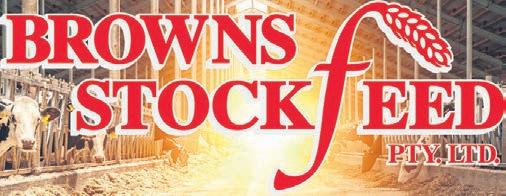
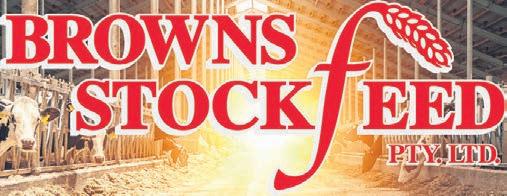






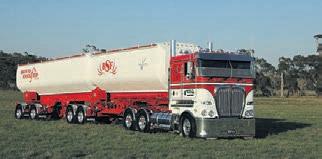
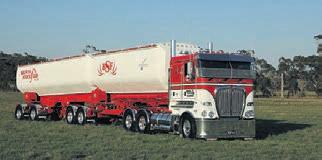



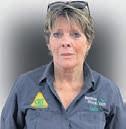




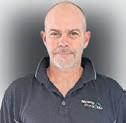

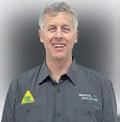


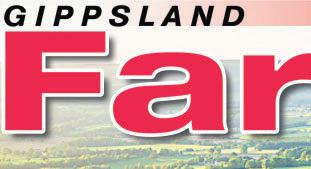














































































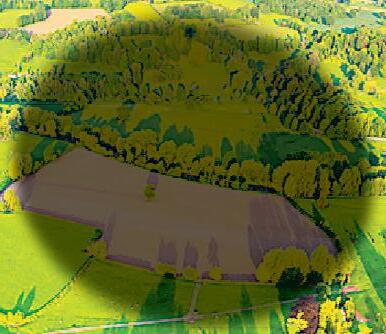



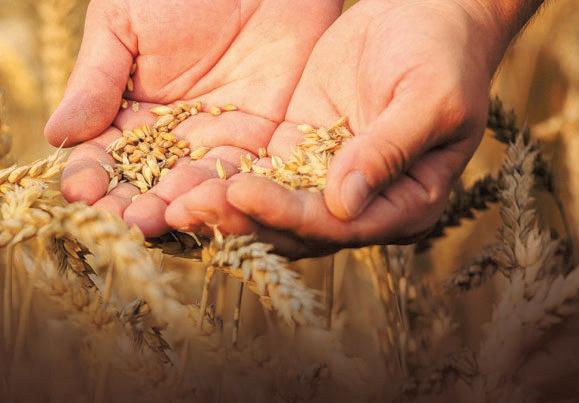









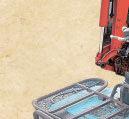
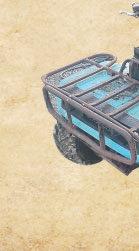


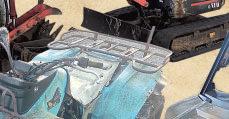
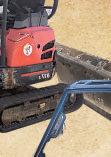



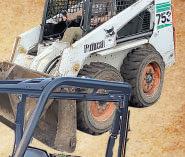

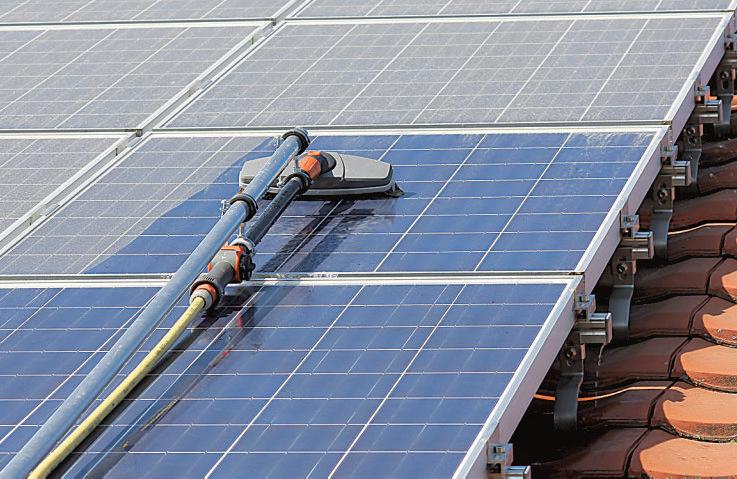



















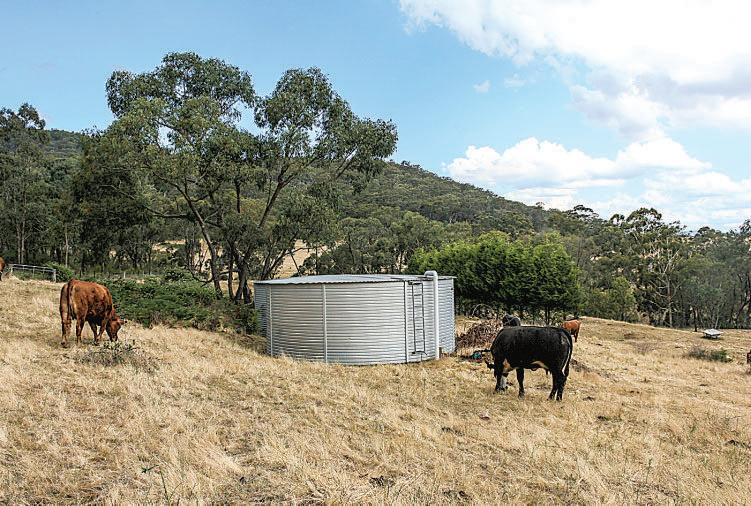




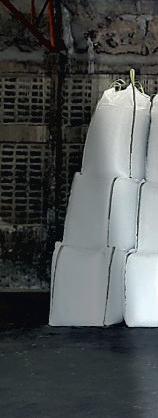

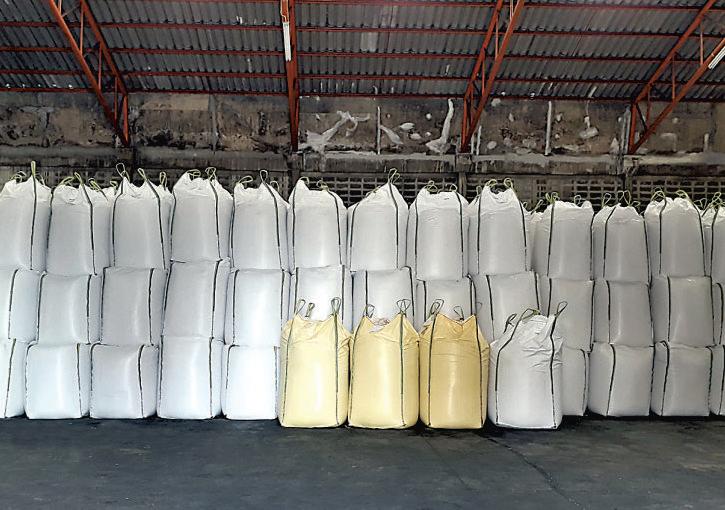





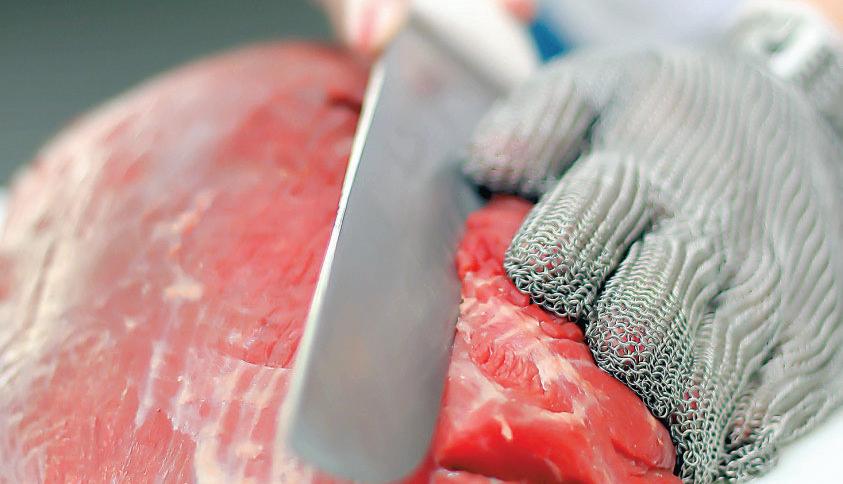





















































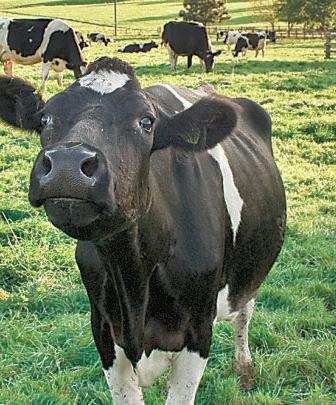








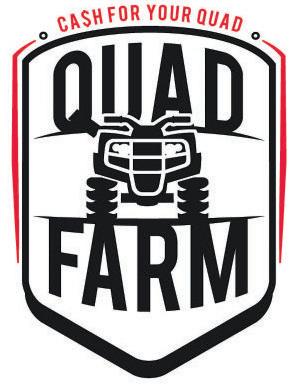






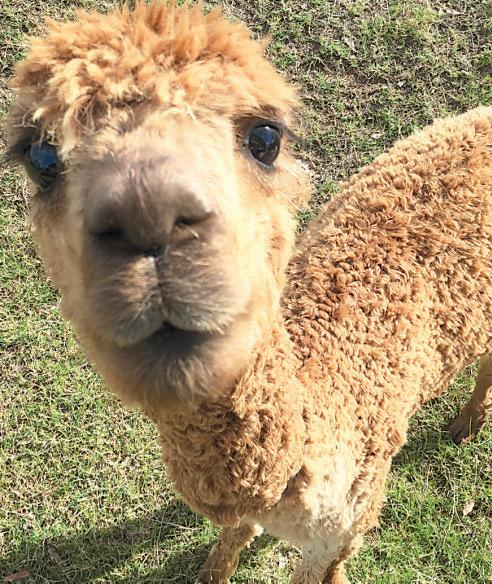
















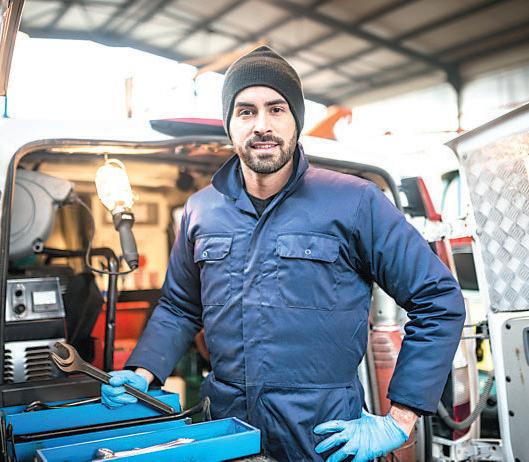









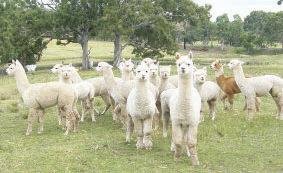


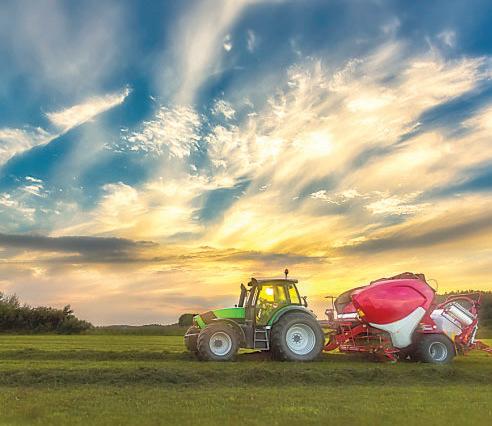
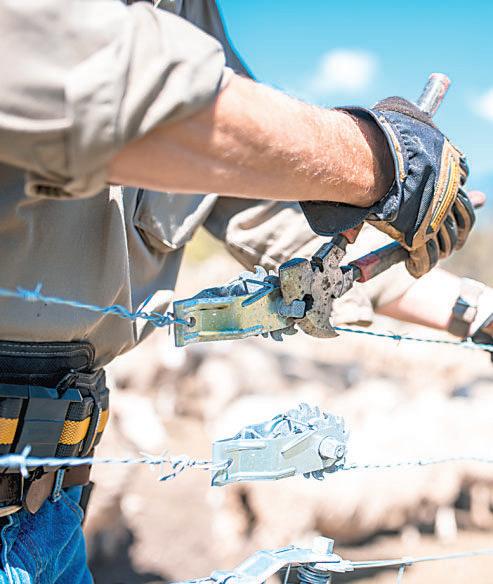

Blake METCALF-HOLTand Tom HAYES
INDONESIA had no answer for Australia, who smacked them to the tune of 51 points, 109 to 58, at GRISS in Traralgon's first international game in almost 20 years.
While Traralgon's Jack White wasn't present, the fanatic basketball crowd of more than 1800 was treated to an appearance from home-grown talent Jade Melbourne, who was the last local to represent Australia featuring in the Opals bronze medalwinning side at the Paris Olympics.
Others spotted watching on included Melbourne United and Boomers star Chris Gouldingand former NBA player David Anderson. Australian basketballroyalty Andrew Gaze was courtside for commentary on ESPN's live broadcast.
Head coach Jacob Chance was given a youthful touch with six on his side making their senior debuts for the Boomers on Thursday night (February 20) as they faced an Indonesia side that had yet to win agame in group play.
The ball was thrown up and the game was under way with the crowd overwhelmingly in theircountry's corner,although afew Indonesia fans werespotted making some noise for the travelling side.
Therewas early jitters to say theleast, as Australiascored on the first possession off aput back layup by Nick Kay, then led to almost five straight minutes of continuous bricks with no one able to secureabucket.
IsaacWhite brokethe game's scoring drought withafast break pullupmidrange jump shot that began to open the floor up.
Elijiah Pepper went on amini run of his own with aquick six points including an and-one conversion and drilling acorner three-point shot.
Indonesia wereunable to find any burst during the first quarter,with many of their shots falling short and hitting the front of the rim. Australia made five threes to open the game that included three unanswered headingintothe first break with a22-4 lead.
The clear distinction between the two sides in terms of skill and talent could be seen earlyon, but what was evenmore apparent was thesizedifferential, with Indonesia only boasting one true big man in Lester Prosper
Prosper got things going with the first scoreofthe second quarter,coming offa midrange swish only for young Wena David Okwera to returnfavour with atough score inside plus the foul.
Indonesiafound slight momentum, finally finding the bottom of the hole (mainly from free throws), but Australia still outscored them 28-18 for the termtoenter halftime ahead by 28 points.
During the halftime break, Melbourne stepped onto the court to address her faithful Traralgon community, in what was her first visit back home since October where she brought herOlympicbronze medal.
Melbourne was recently awardedwith her secondconsecutive Fan MVP (Most ValuablePlayer) including all-WNBL second team honours following another exceptional season for AC Capitals in the WNBL. She returns to the states soon for WNBA training camp at the start of March beforeher Washington Mystics play on opening night of the season on May 17 against Atlanta Dream.
Unflinchingintheir desiretoextend their lead, Australia opened the thirdquarter in ahardpress thatcontinuedwith what had transpired in the first half. The Boomers held a30-plus-point lead all the way through to the final buzzer
This gaveopportunities for the younger Boomers to remain on the court for a longer period and exposethemselves on the international stage.
Emmett Adair had agood stretch, bodying the visually bigger Prosper for an easy lay and then throwing down ahardslam dunk with Indonesia breaking down while in transition.
The third quarter finishedwith the Boomers in front 77-39, but that wasn't it for the Australian side, as they beganthe final

termona24-11 runthat includedthree additional three-point bombs. Australia finished with 14 threes to Indonesia's five.
Fans weretreated to adelightful play in the final minutes as the game ended in a wash.
Ben Grisctiset ahigh screen for Luke Fennell beforediving to the basket (assisted by adown screen from Jacob Furphy) and dished afine lob pass in the air and threw downthe powerful alley-oop to set the crowd ablaze.
Fennell spoke post-game about playing in the regional area that has strong roots in basketball.
"Traralgon has alot of Boomers and Opals come through the ranks which is huge for a
country town, it's great for the Boomers to play on home soil let alone in atown that has such agreat impact on the Australian basketball community," he said.
Pepper hadagame-high 18 points, five rebounds and four assists, as well as 15 points from both Adair and Okwera.
McCarron offered the poiseneededfor sucha young side, postingnine points sevenassists and two steals -involved constantly during eachofAustralia's scoring runs.
THE Boomers made it two from two, crushing Thailand to the tune of 50 points on Sunday,February 23, in afinal score of 114-64.
Sunday festivities at theGRISS included

face painting, while Latrobe City Mayor, Dale Harriman and Deputy Mayor,Sharon Gibson wereinattendance, the former presenting the game ball.
While he may havebeenabsent for the first game, Traralgon's Jack White showed up to support his Boomers teammates in his hometown. Melbourne also showed her support for the second time in the week.
Prior tothe match, Gaze -again on commentaryfor ESPN-mentionedthat Thailand needed to keep Australia to less than90points tohaveany chance of winning. That proved to be something of adifficult feat as the game dragged on.
The pressurewas immense from the first tip-off, as both nations vied for early possession and baskets.
The full courtpressurefromthe Boomers was enough to create turnovers, which were translated into buckets for the Aussies.
Just as it appeared Australia was going to sail away in the opening term, Thailand showedsome fight,something that the Boomers might not have been used to compared to Thursday night.
Thailand came at the Aussies and forced anumber ofturnovers to takethe lead midway through the opening stanza.
Despitetheirconfidencebeaming, Australia still had enough class to close out the first quarter with ahealthy eightpoint lead.
The Boomersmaintainedtheirleadas the second termcommenced, as anumber of baskets went amiss. The style of play from both nations was described by Gaze as "clunky".
Nevertheless, Thailandfound themselves in foul trouble earlier than expected,as Australia began to take advantage from the free throw line.
Pepper continued his hot scoring formby getting up into double digits beforehalftime while Frederick Lish was an outside danger for Thailand.
Australiaput the foot down in the second halfofthe second quarter, openingupa 21-point lead at the main break.
Things began to look easy for the Boomers in the second half, as they continued to force moreand moreturnovers, which turned into morerepeated scoring chances.
This hurt Thailand, who let up a6-0 run to start the thirdterm. They mounted aquick comeback thankstobig man Emmanuel Ejesu and Lish, who got the margin back down to 20 points.
Pepper remained amassive threat for the Boomers, picking steals and scoring. During the second half of the penultimate quarter,Australia broke out even further ahead, making the most of the tired-looking Thai legs.
Lish cameoff the court towardthe end of the thirdterm, and Australia let loose, putting up bucket after bucket to go 28 points up heading into the final quarter of basketball in Traralgon.
The final quarter was afree-for-all. It didn't take long for Australia's lead to surpass 30 points, then soon after it was over 40.
While running rings around Thailand, Pepper passed 20 points, as did Isaac White who ran the last quarter
The floodgates opened in the final few minutes, as Australia pushed the margin over 50 points within the final minute. Pepper top scored with 24 points, scoring 11/19 from the field, includingfive rebounds, five assists and two steals. White exploded in the final term, scoring 22 points (9/15 from the field), as well as six assists, four rebounds, and asteal. Following the two winsfromtwo in Traralgon, the Boomers have qualified for the FIBA Asia Cup 2025, topping Group A. Also qualified is Korea, New Zealand, Philippines, China, Japan, Jordan, Saudi Arabia, Iran,Qatar,and Lebanon. The final spot is to be decided between Bahrain, Syria, and the UAE.
Blake METCALF-HOLT
LAST week saw aMagpie invasionin Gippsland.
Collingwood returned to the region for the thirdtime in two years, traversing the west of Gippsland, much to the delight of the hundreds of footy loving kids and the local 'black and white' faithful.
The AFLclub's community camp took them to 24 different Baw Baw Shireschools, meetingwith morethan 3500primary school students on Tuesday, February 11.
The 2023 AFL premiers then made their way to WesternPark, Warragul for agiant Auskick,Superkick, andjunior come-andplay clinic, with ameet-and-greet signing session open to the public.
Almost all of Collingwood's 2025 playing listwerepresentfor thejunior football clinic, with only afew exceptions including
premiership coach Craig McRaeabsent on the day.
Players lent ahand to the cohort of AFL Victoria participation representatives out running the engaging drills for the 250plus kidsinattendance across the two neighbouring Warragul ovals.
Ahealthy contingent of Gippsland-born players ar ecurr ently wear the famed black and whitestripes, with the likes of club games recordholder andSale's Scott Pendlebury, Morwell's TewJiath and recent recruit Traralgon's TimMembrey.
For me rM or we ll pr em ier shi pp lay er
Mannon Johnston is also an employee of Collingwood as its playerengagement manager and gameday runner
Closer to home, Jiath -the second-year Magpie -took time to reflect on aspecial day.
"You sort of forget the impact you have on
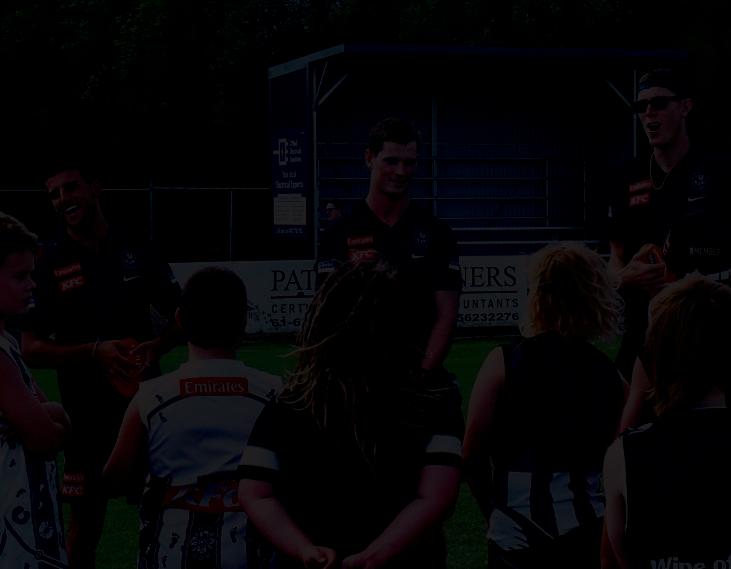
the community until you'rehere, like once you'reinthe schools… seeing the smileson some of the kids' faces, you do really remind yourself thatit's notjustfooty, there's a wider feeling within the community," Jiath told the Express.
"Once you come down here(back to Gippsland), it's asense of pride and trying to build that connection -because I'm already from down here, getting the boys to understand how big of adeal footy is to them and just being arolemodel to the kids."
Jiath continued sayinghefelt aconnection with the younger,enthusiastic generation present,who he feels he can relate to as a19-year -old.
"When you'rehere, when you have kicks with the kids or you have aconversation with alocal and you lead that conversation (and see) how meaningful it is, you

do feel you'redoing something within the community," he said.
"It's athingthatCollingwood does do really well, which is coming back to community, and one of our mantras is 'family first'and trying to make peoplefeel welcome wherever you arefrom.
"AFL Gippsland does areally good job at trying to make us do heaps of clinics and have them run seamlessly and get intothe community and leave as better people."
Collingwood have since headed up north for their first match simulations against other clubs, against Gold Coast Suns and Brisbane Lions last month, followed by a hit-out against Richmond on Wednesday, February 26.
The Magpies' last visit to the region saw them stop in Morwell for an open training session at Ronald Reserve, Morwell East.



